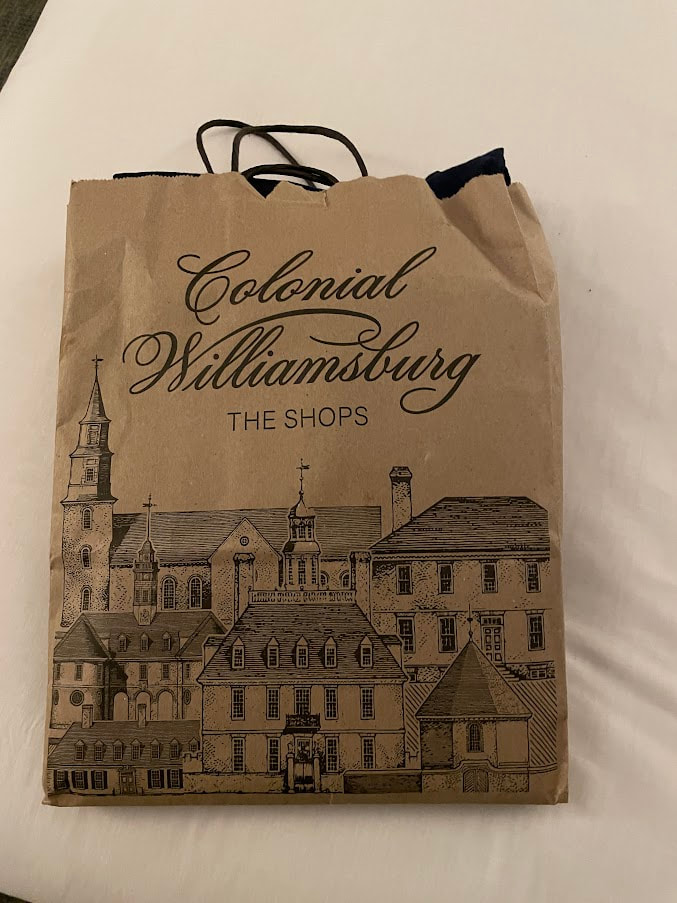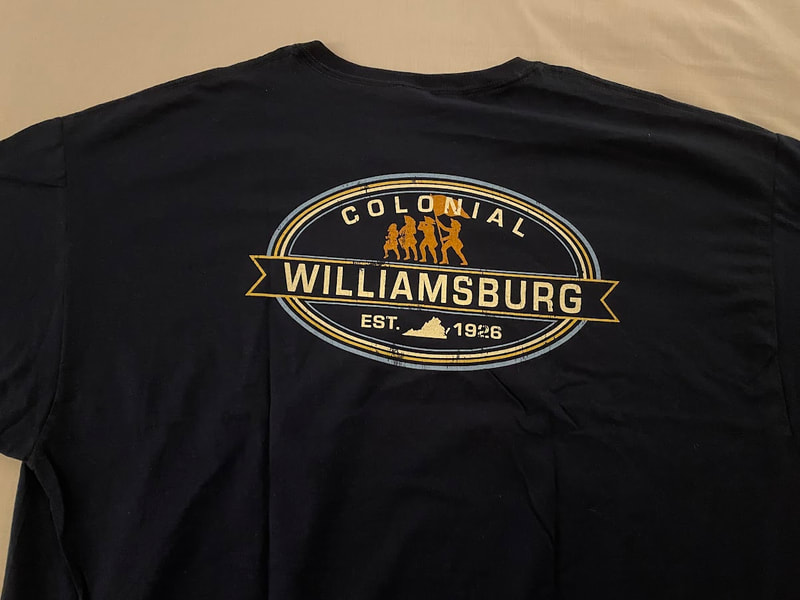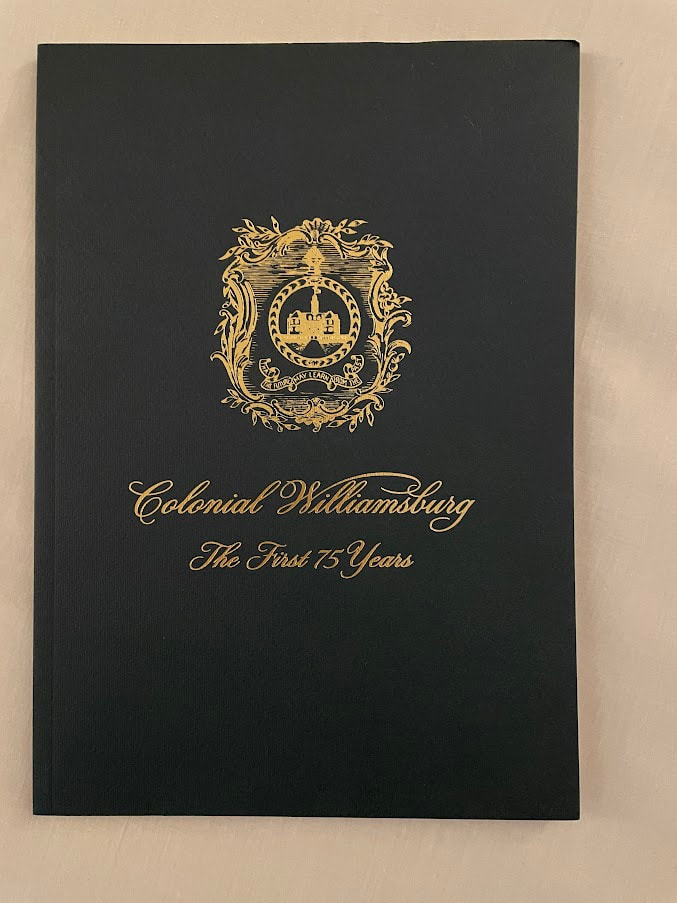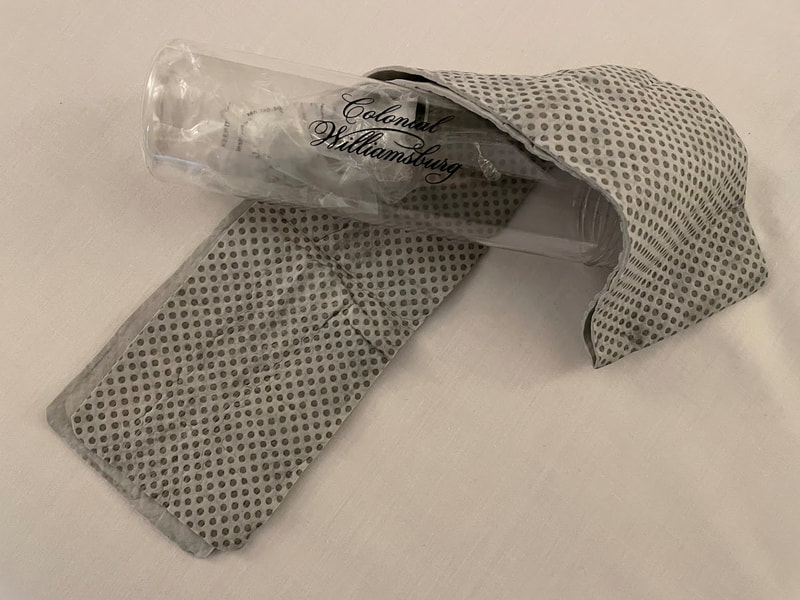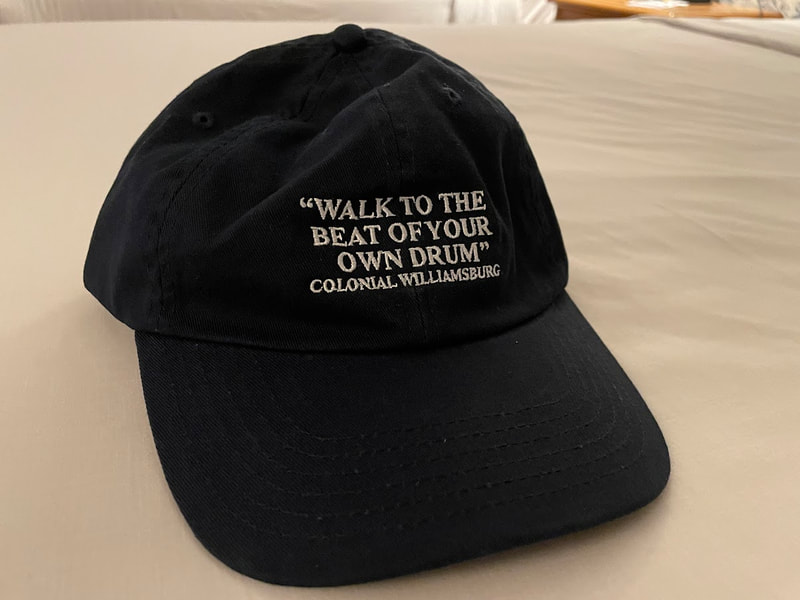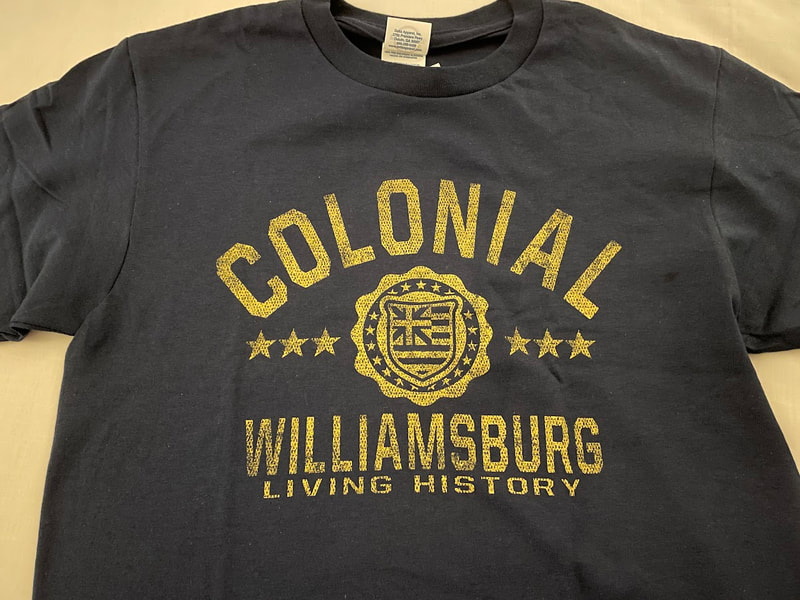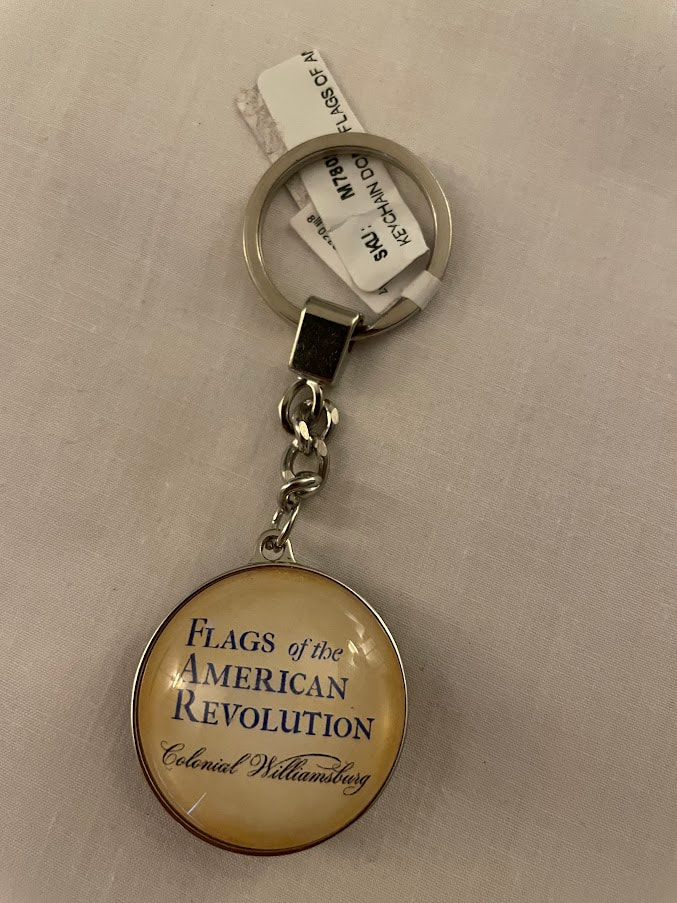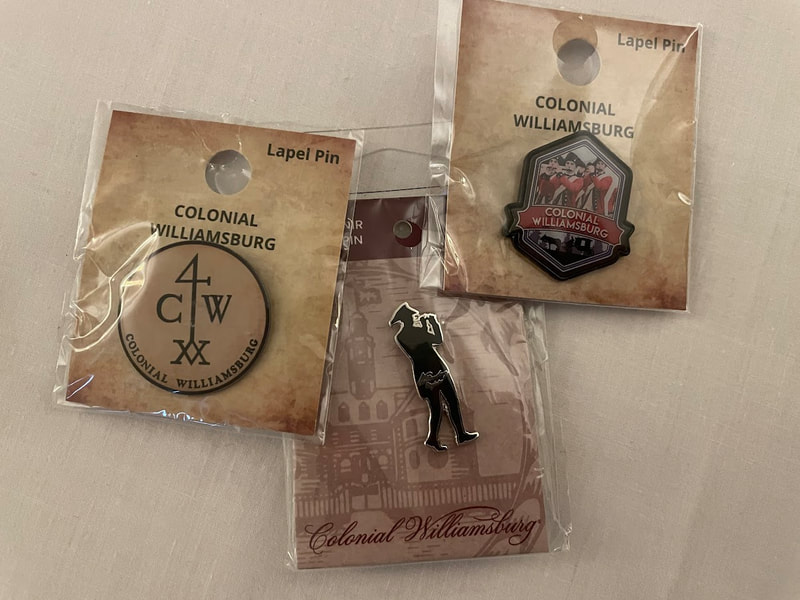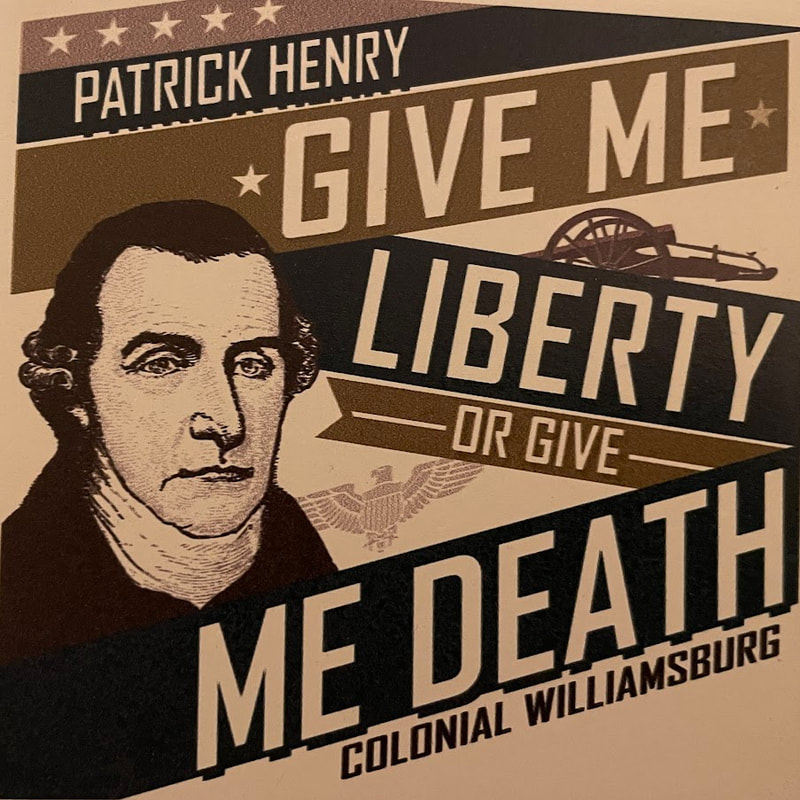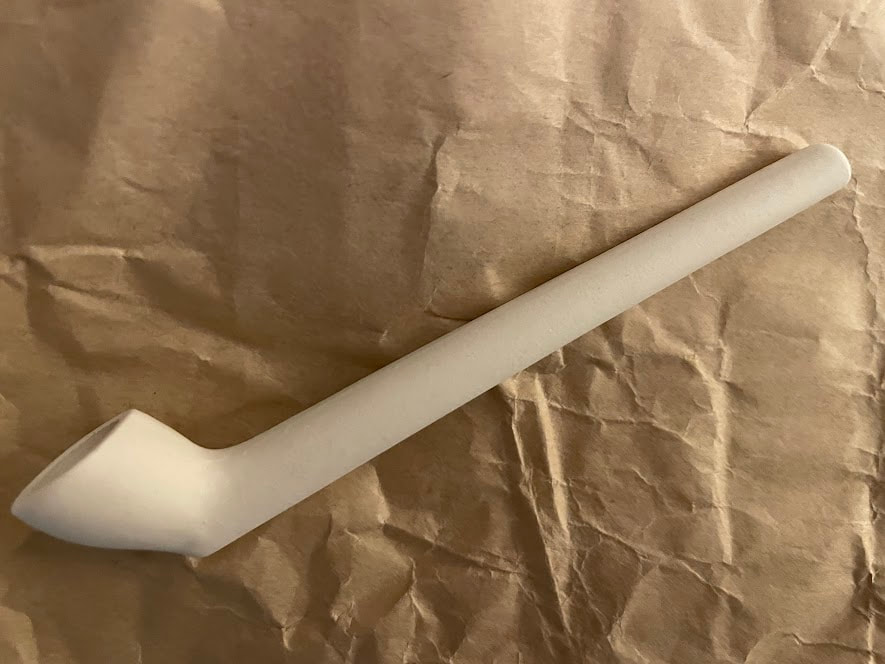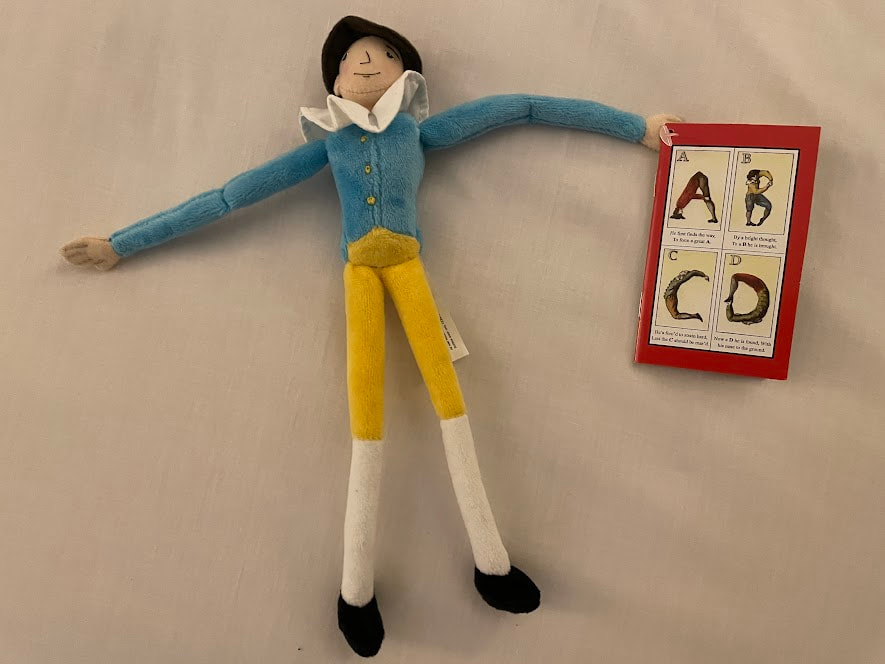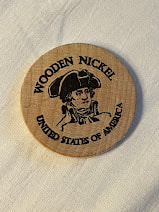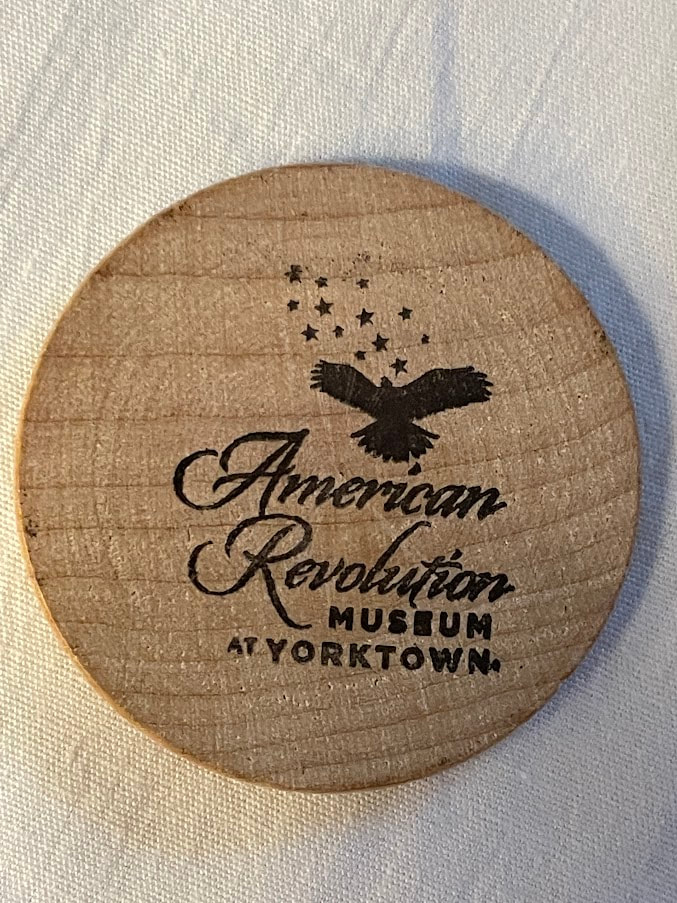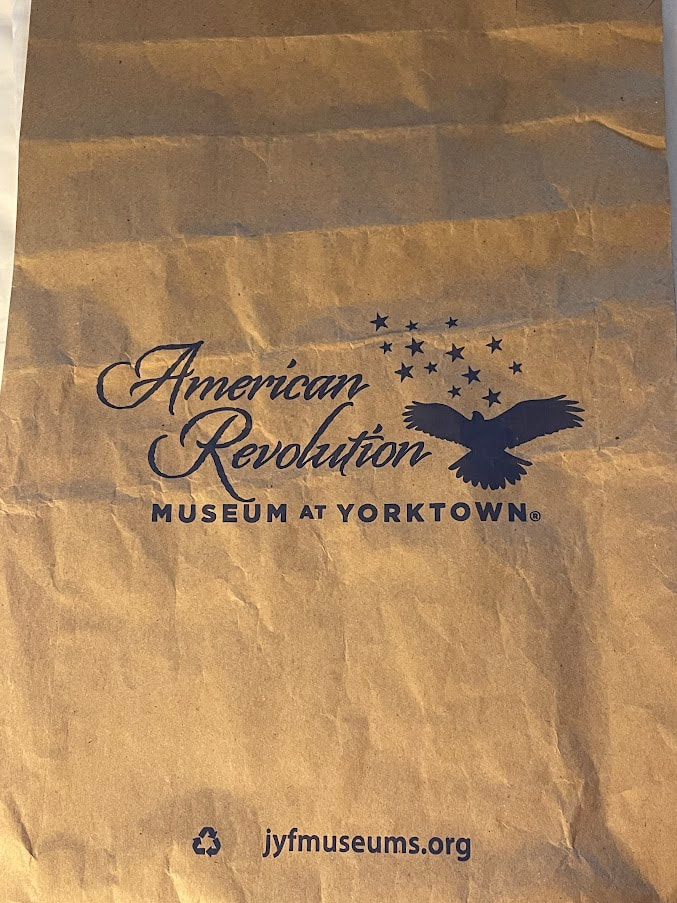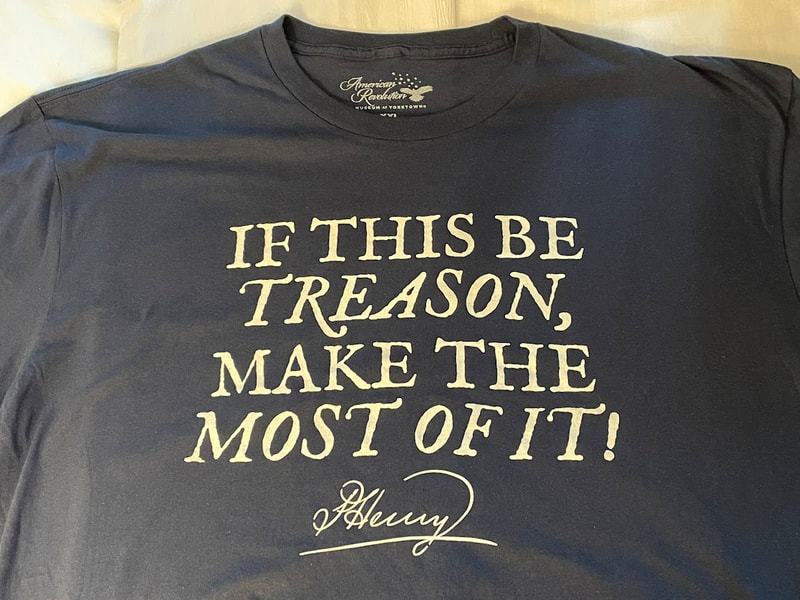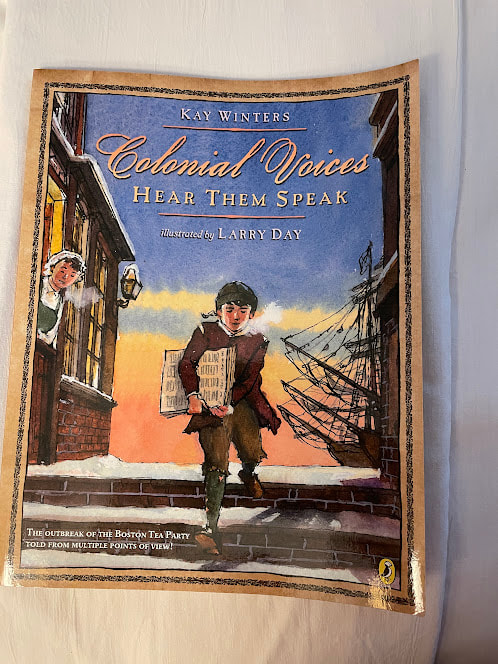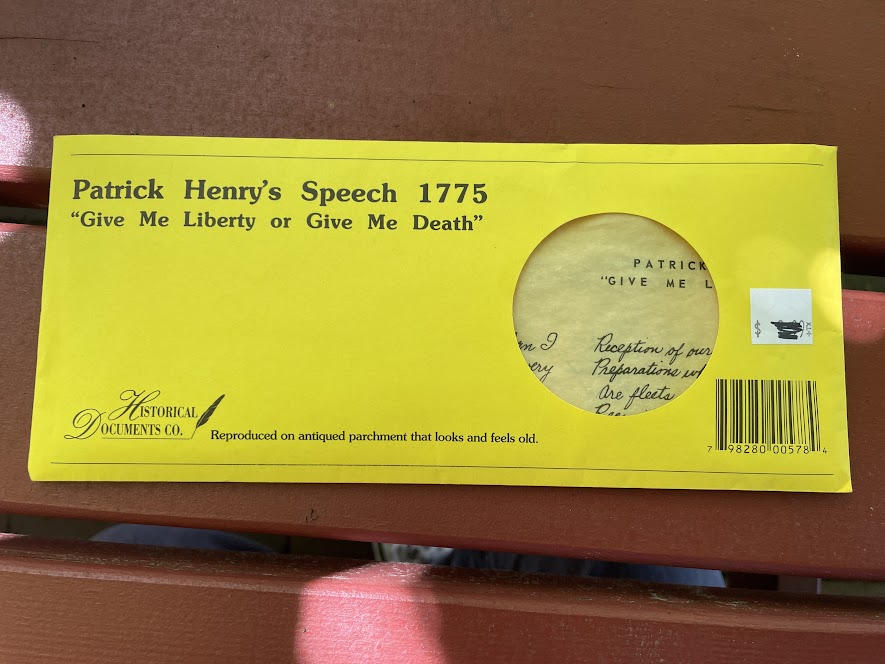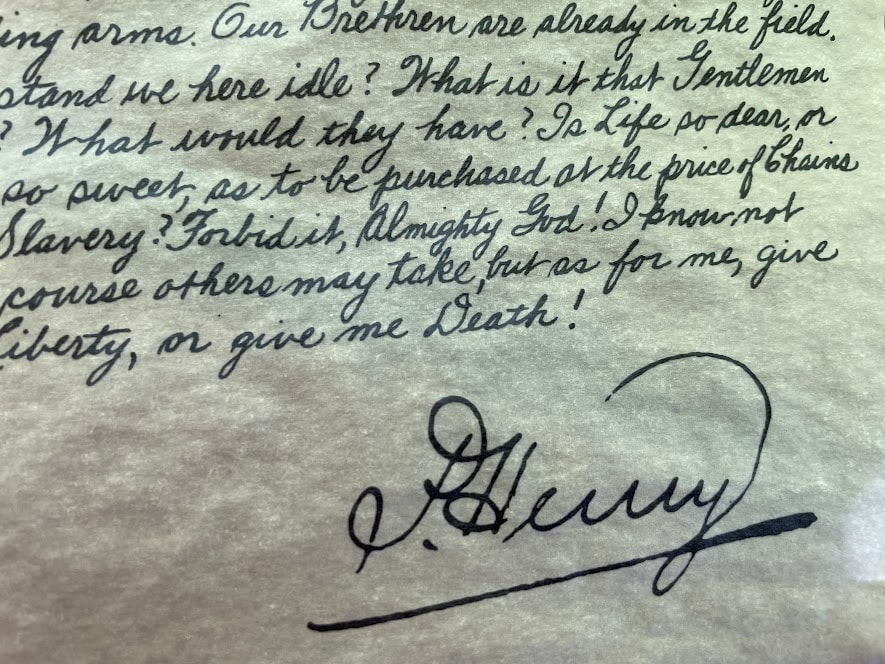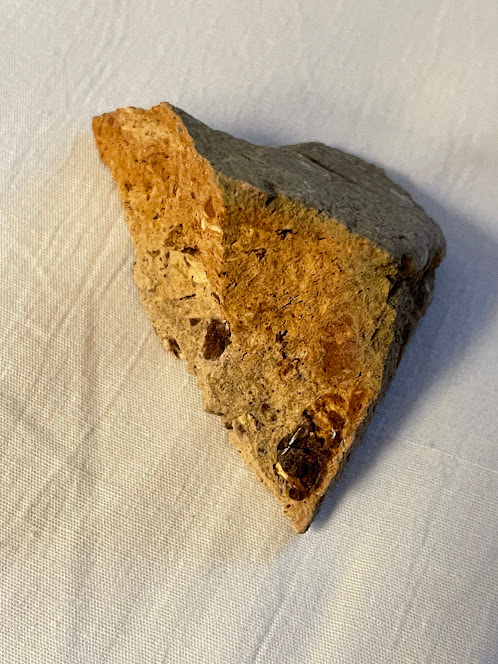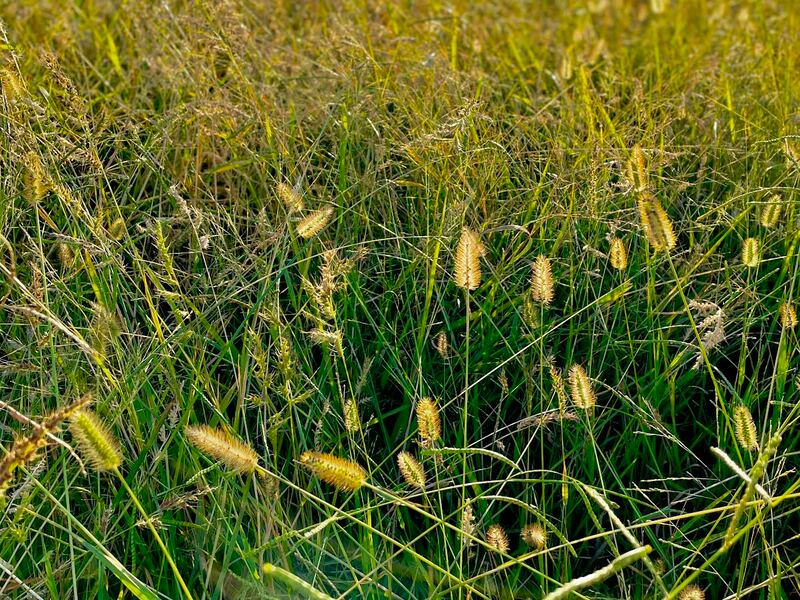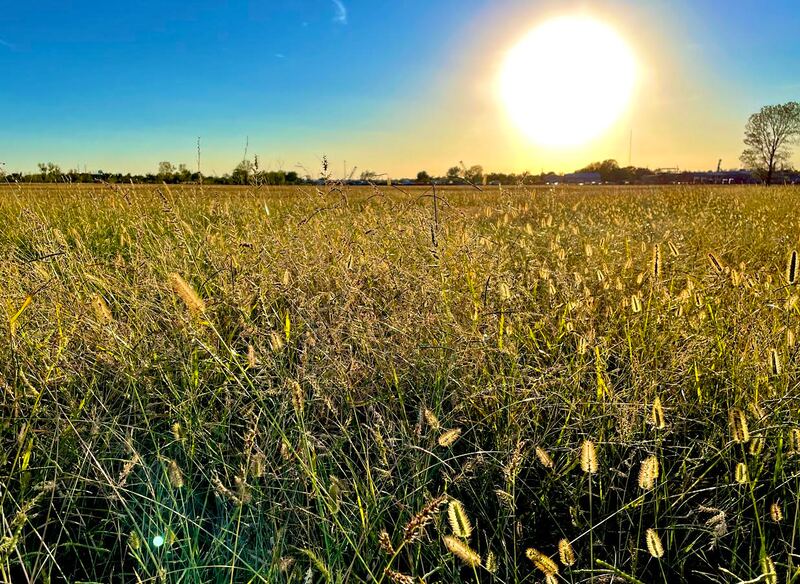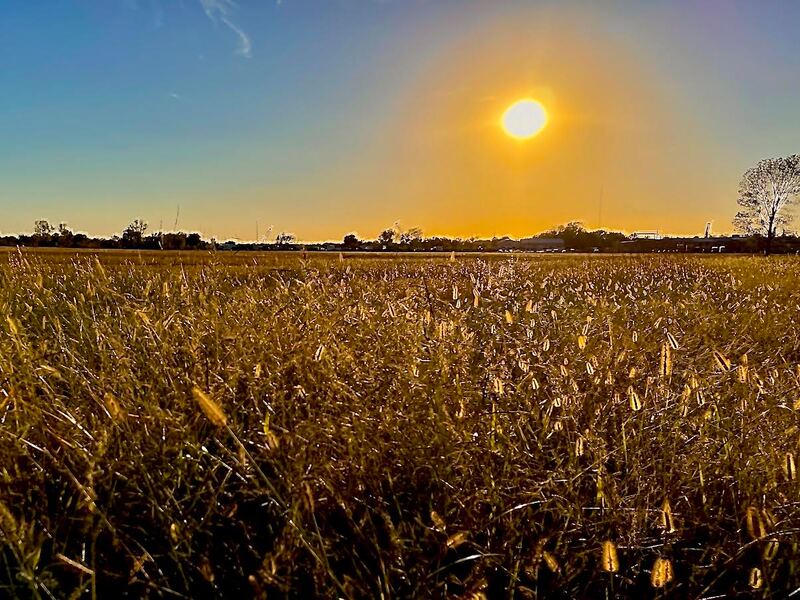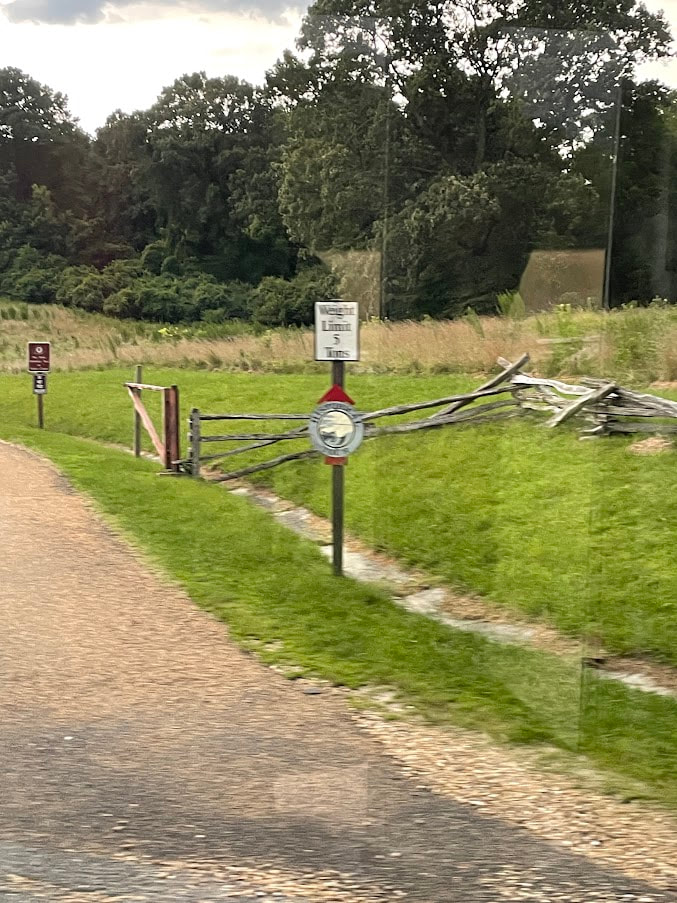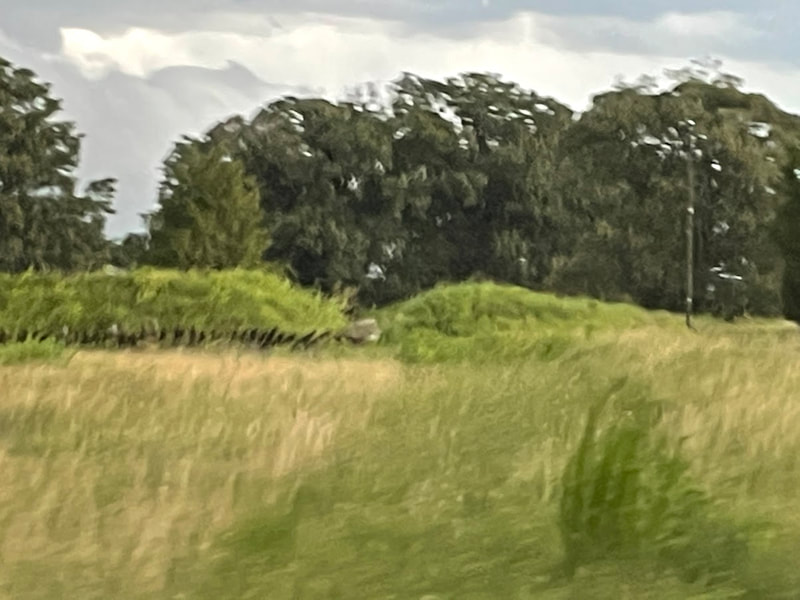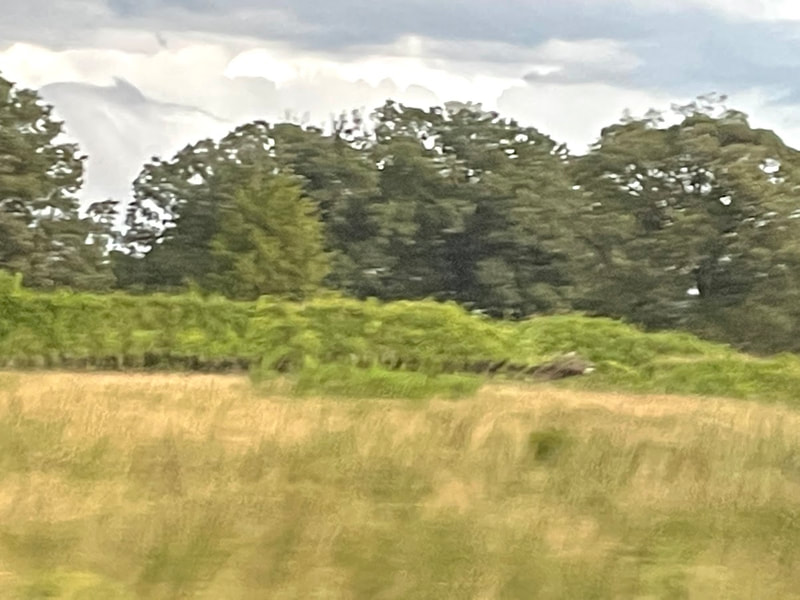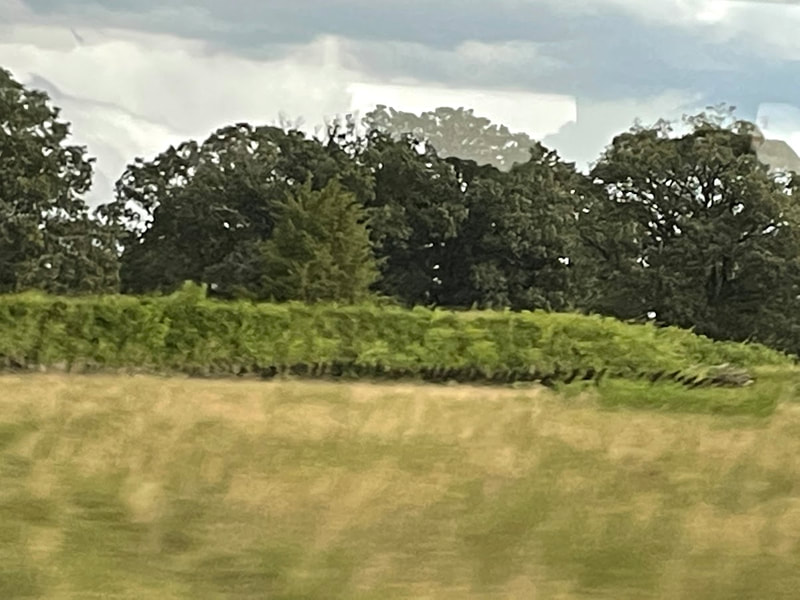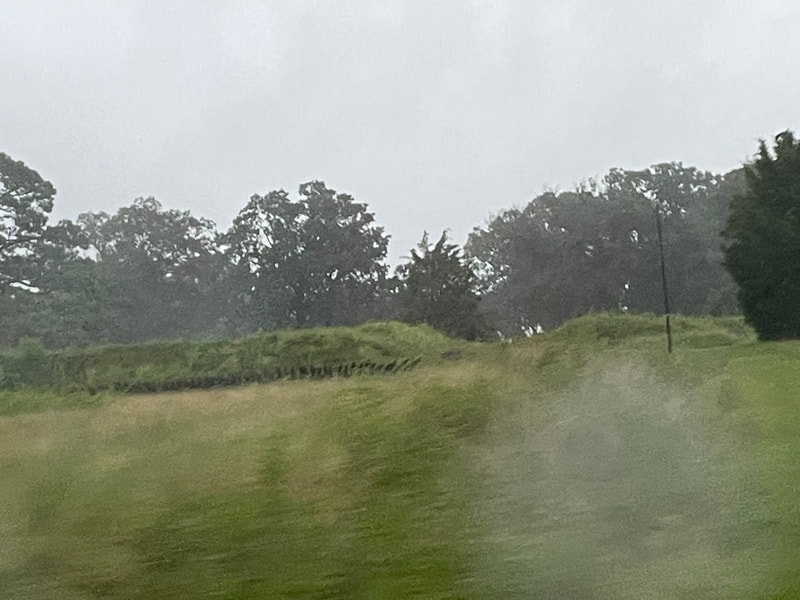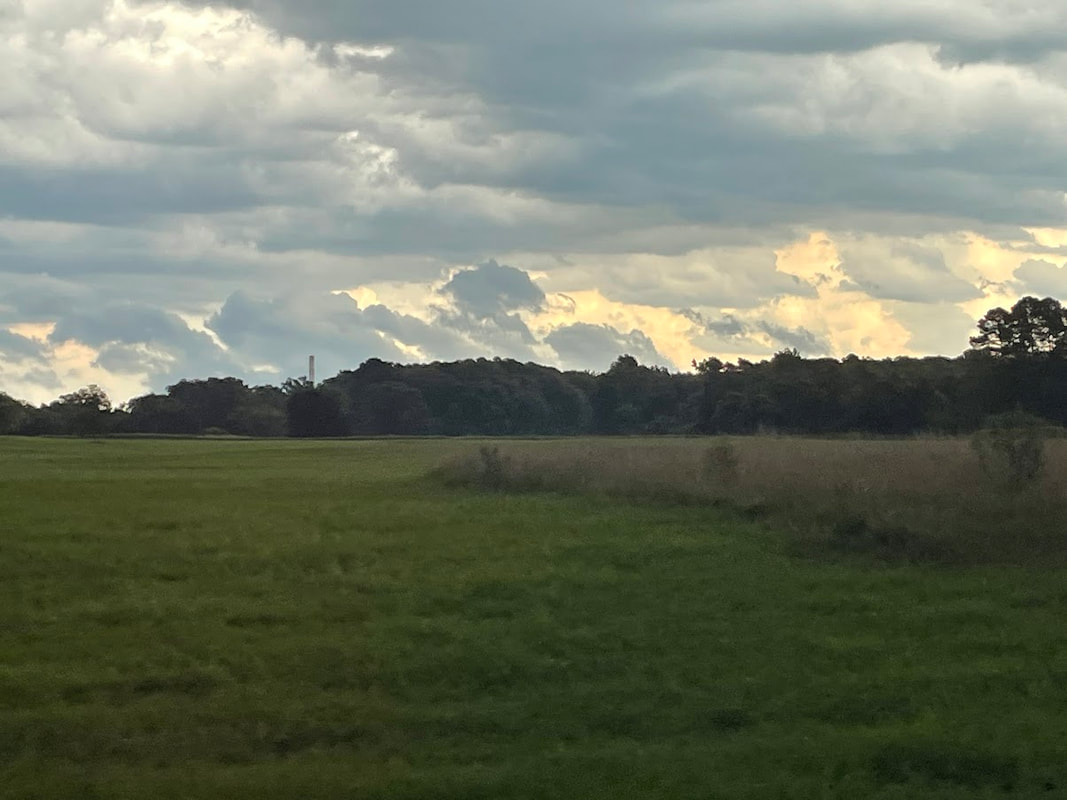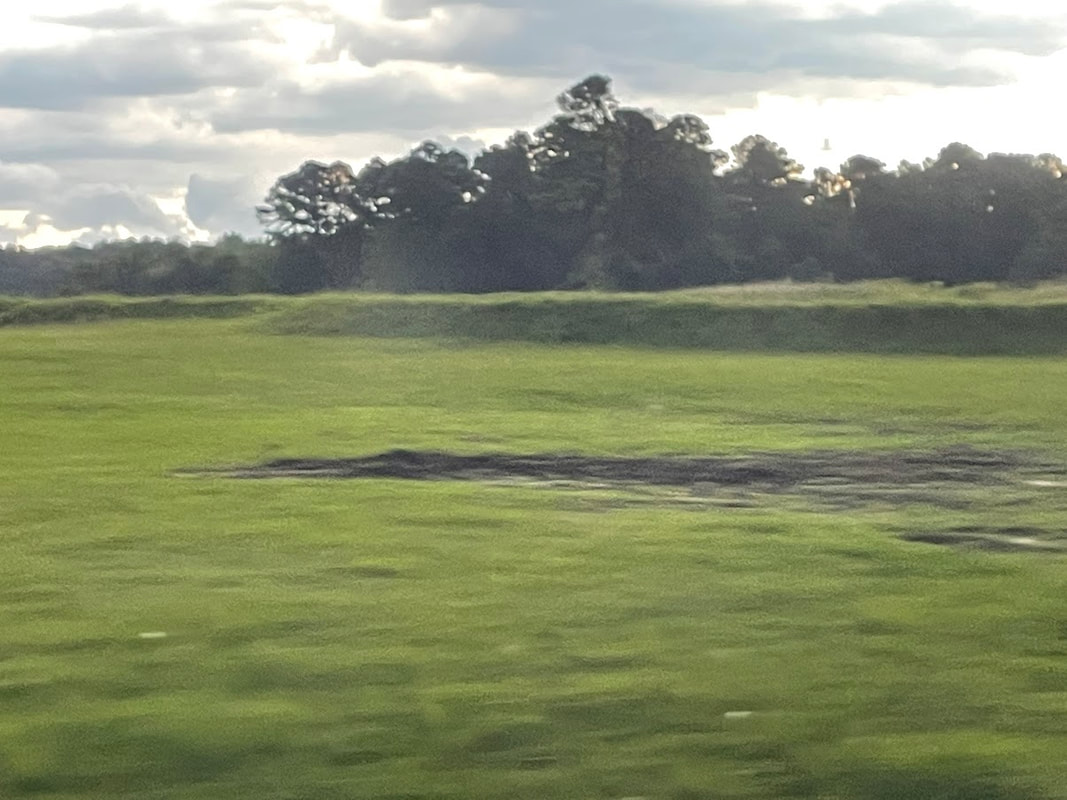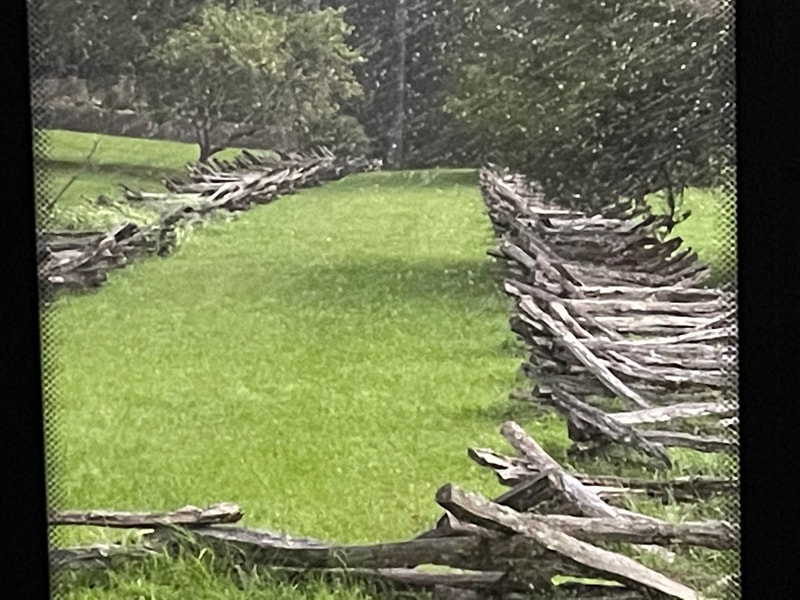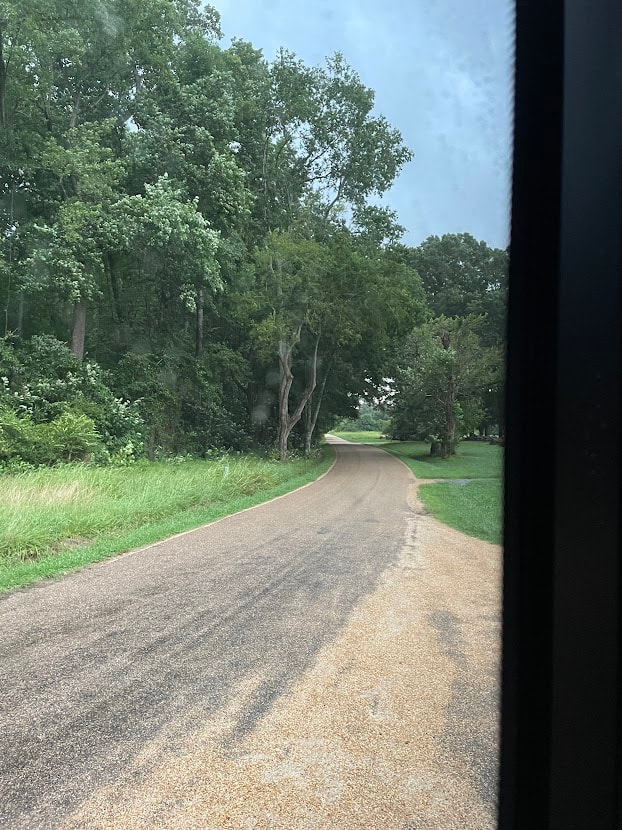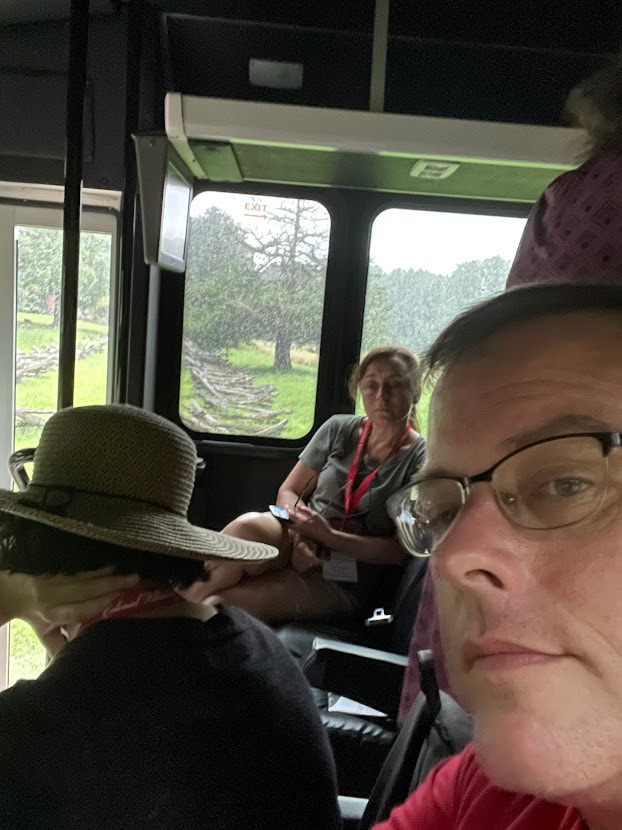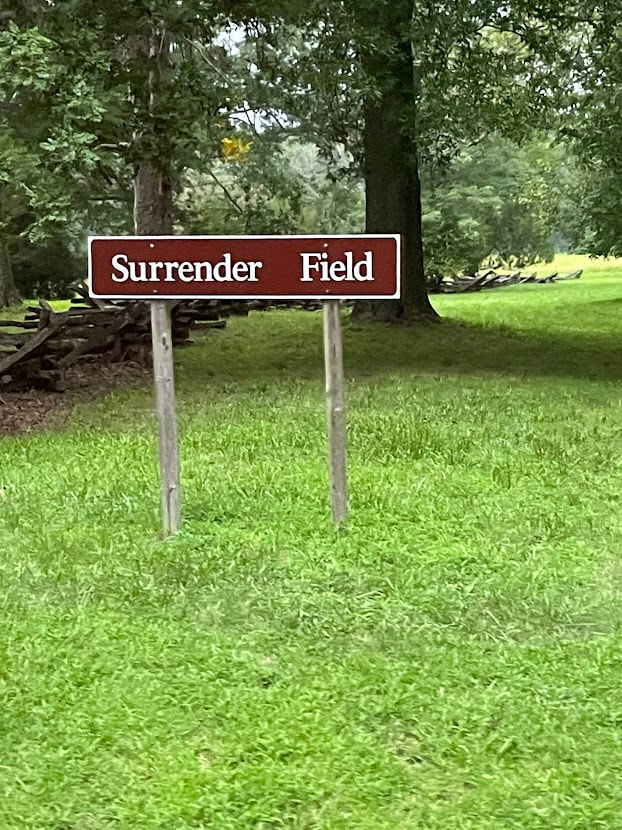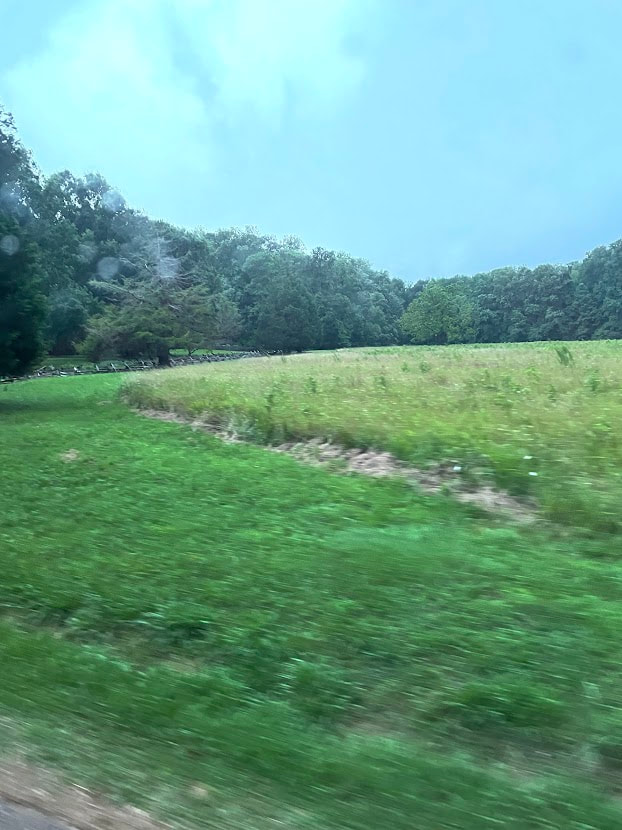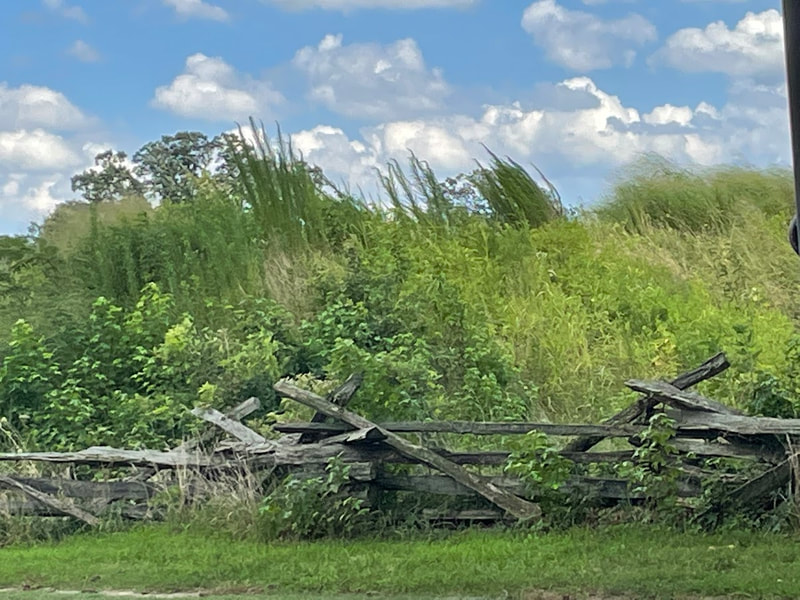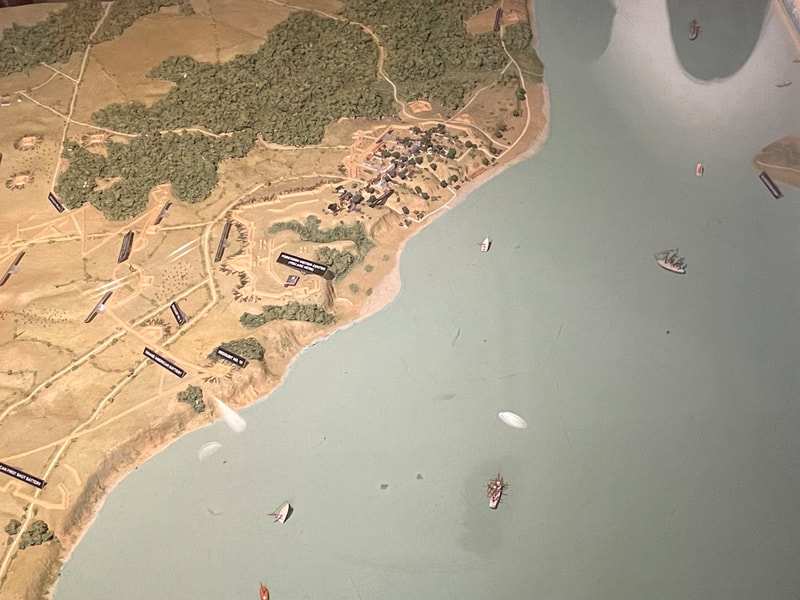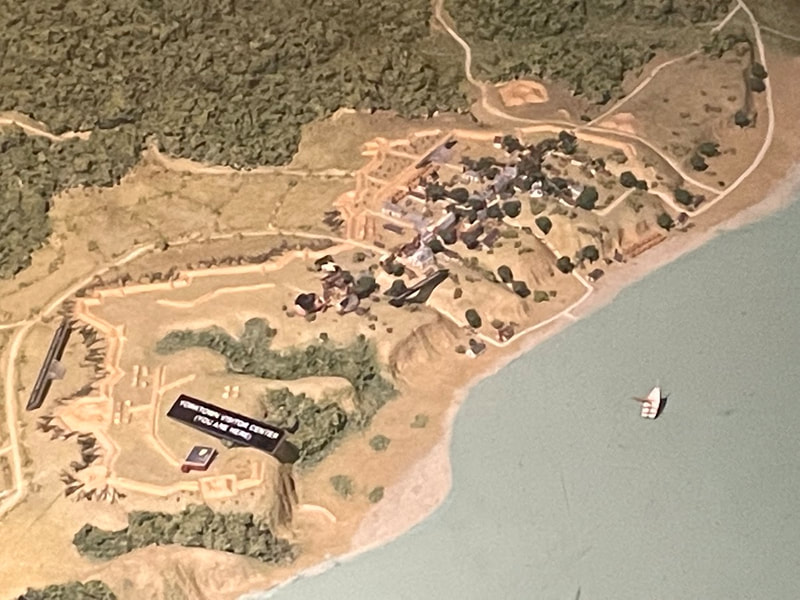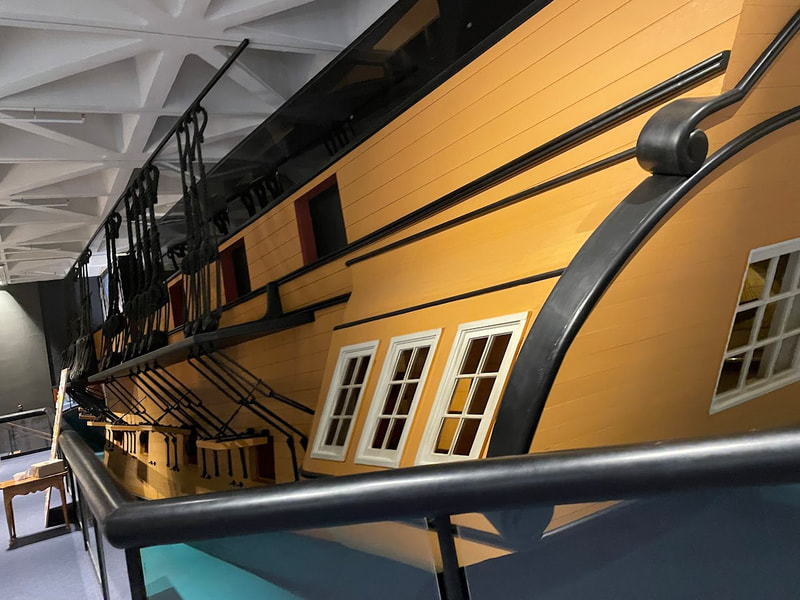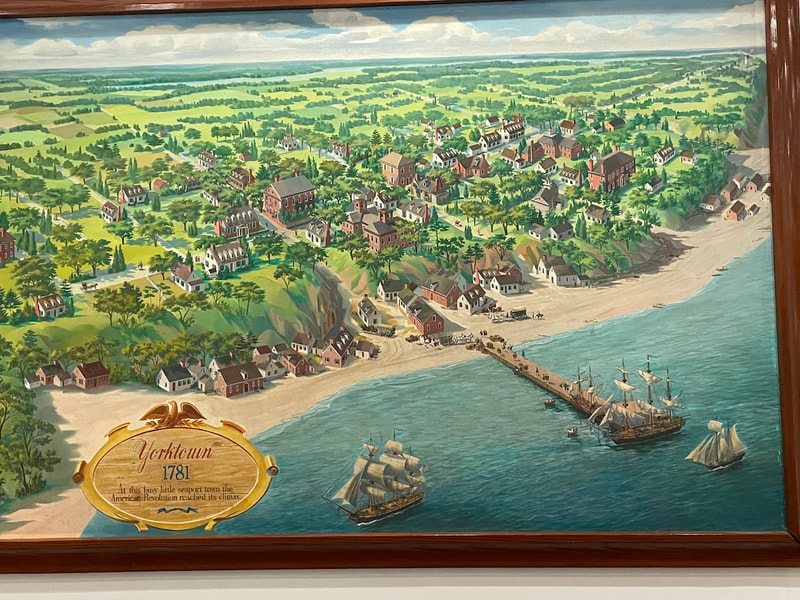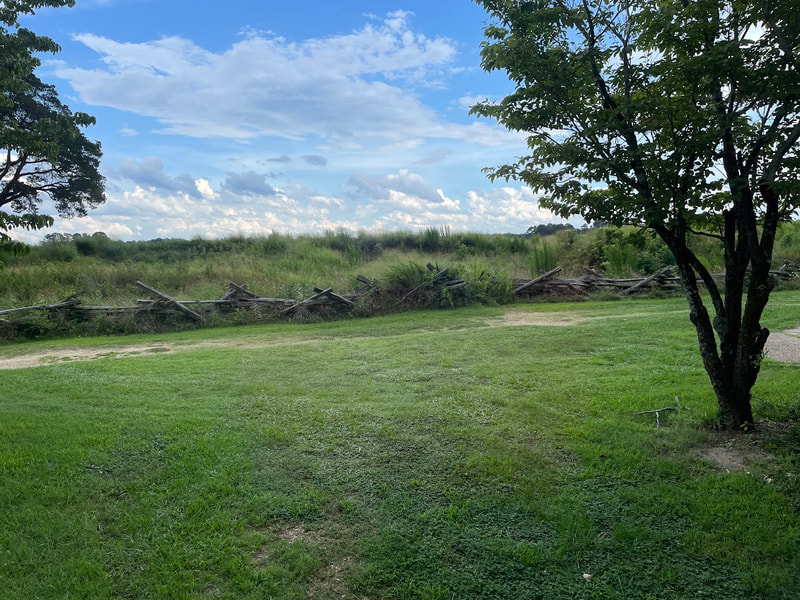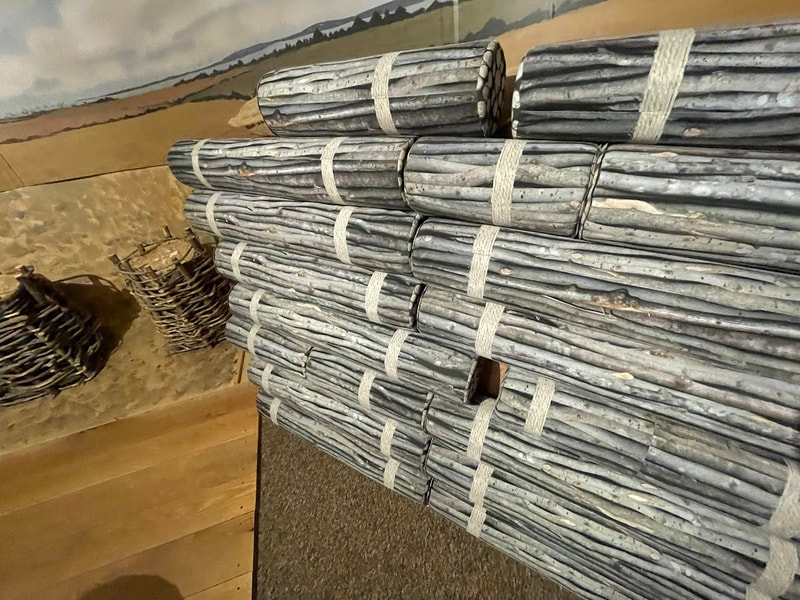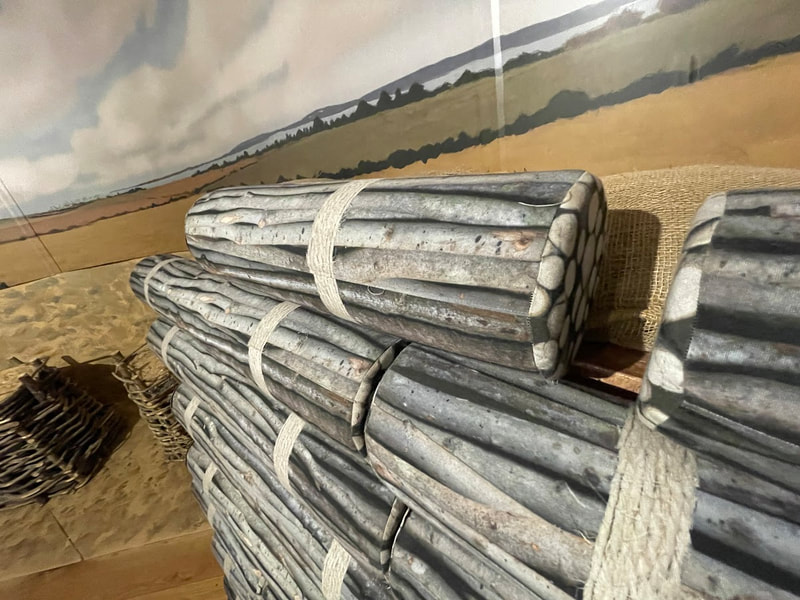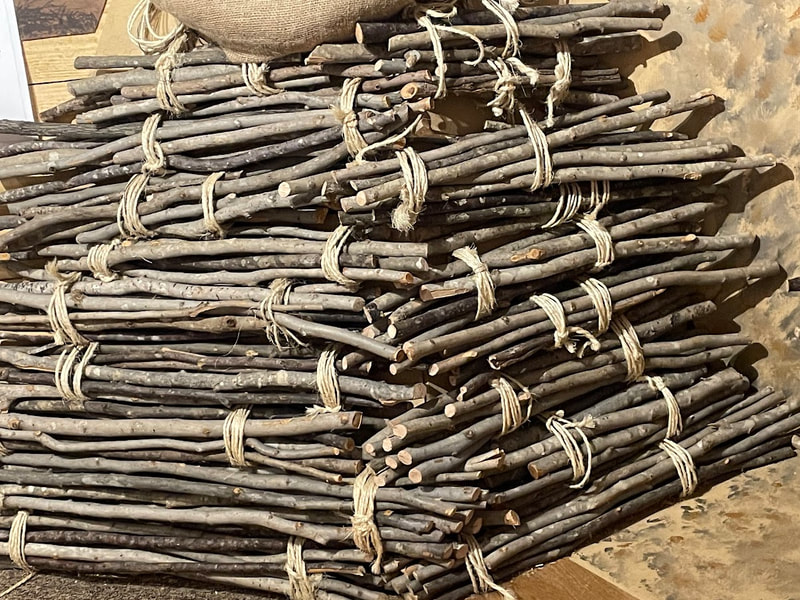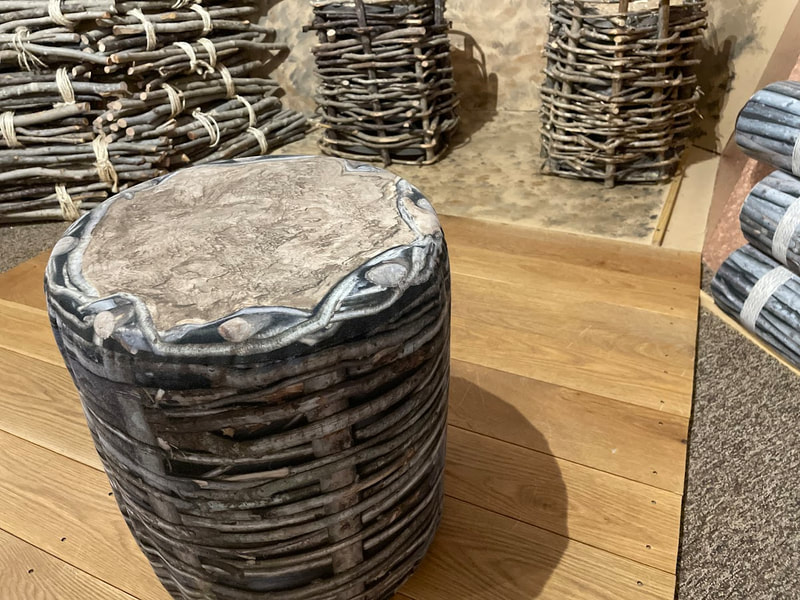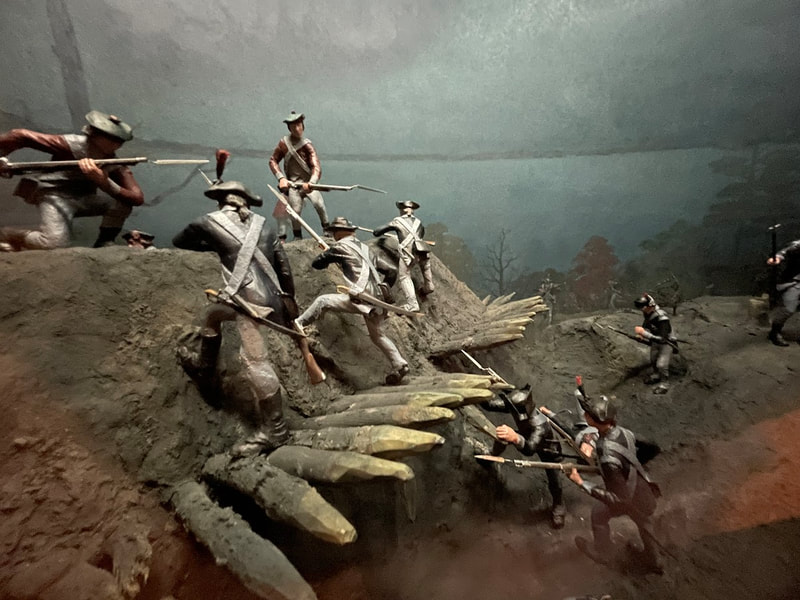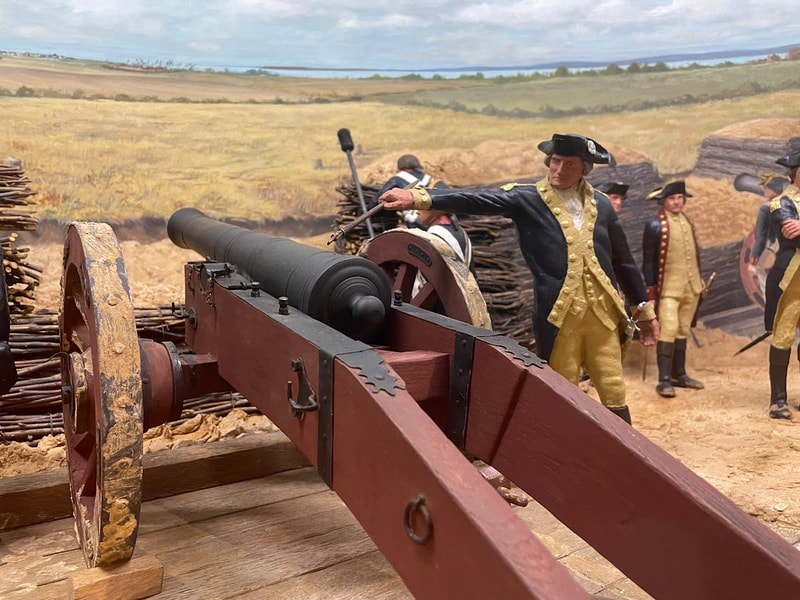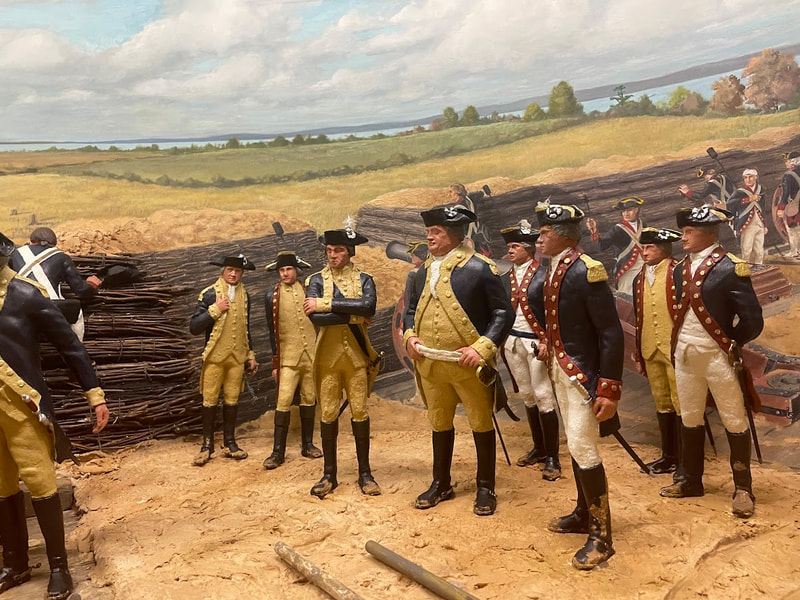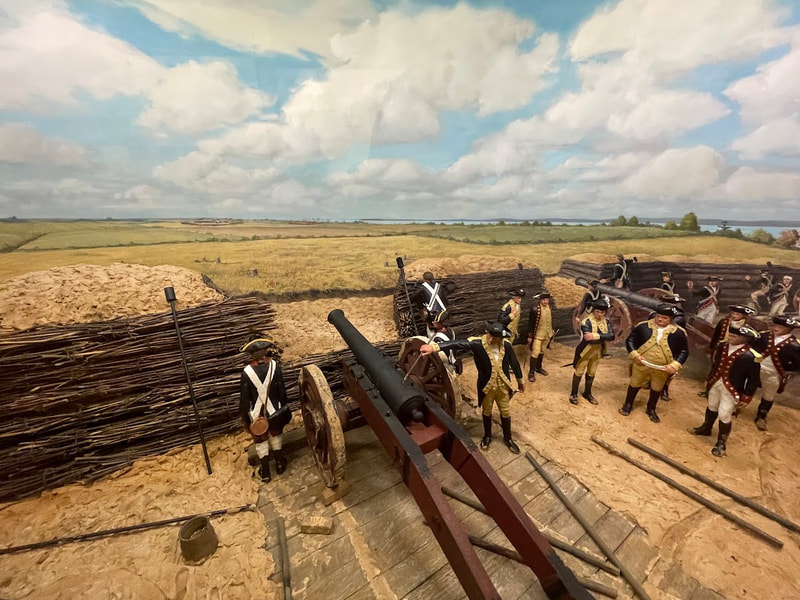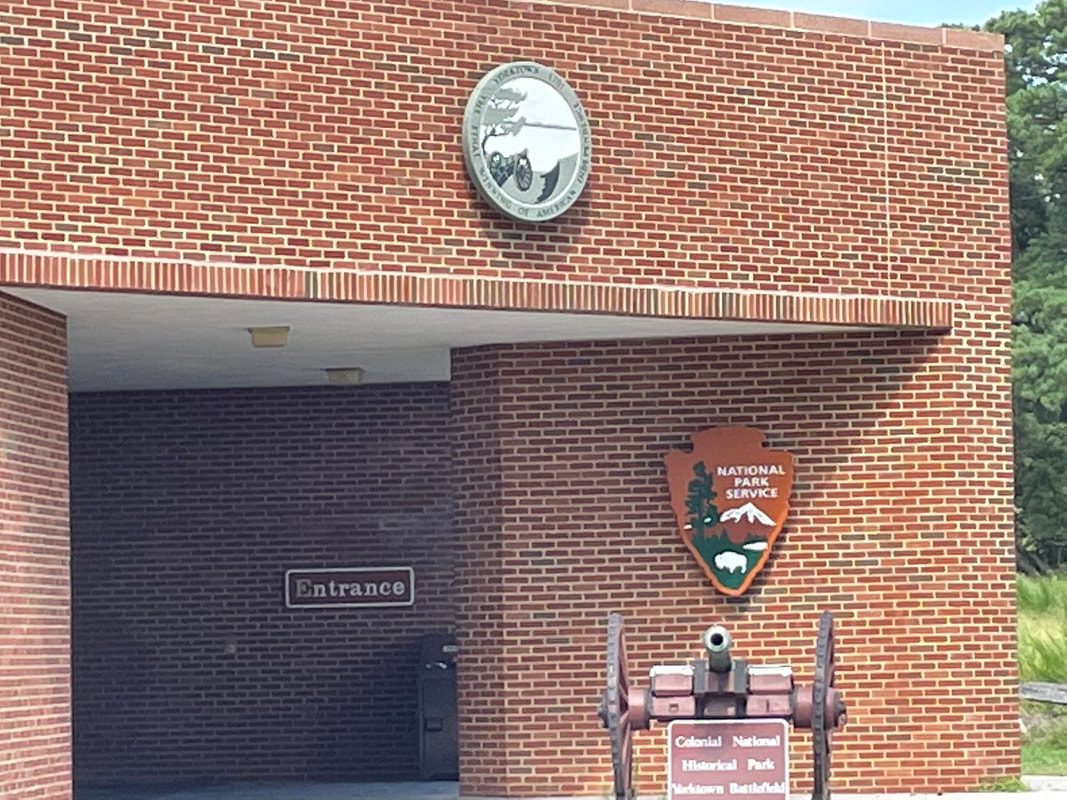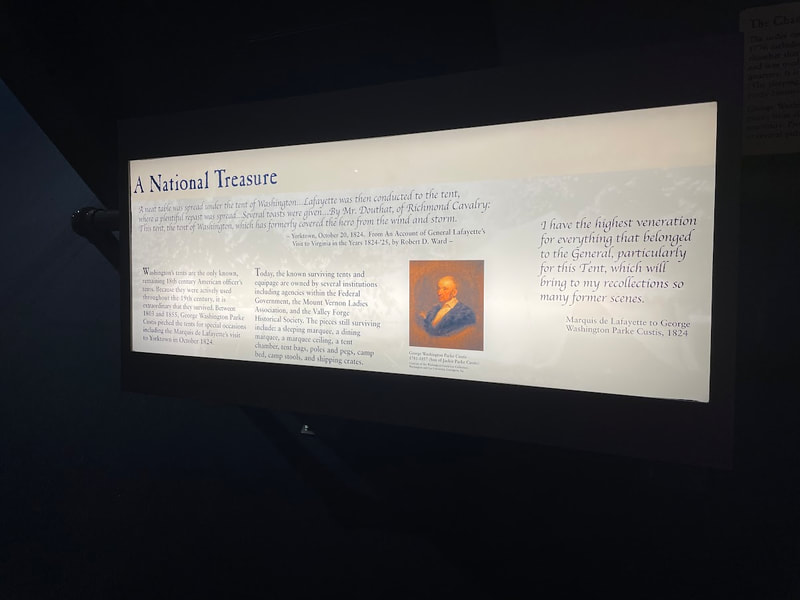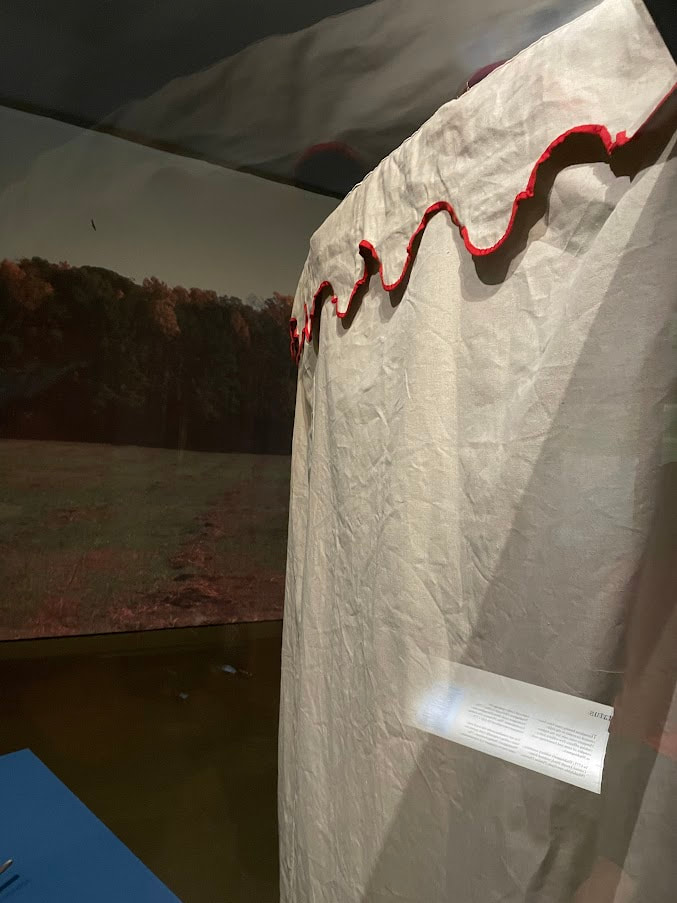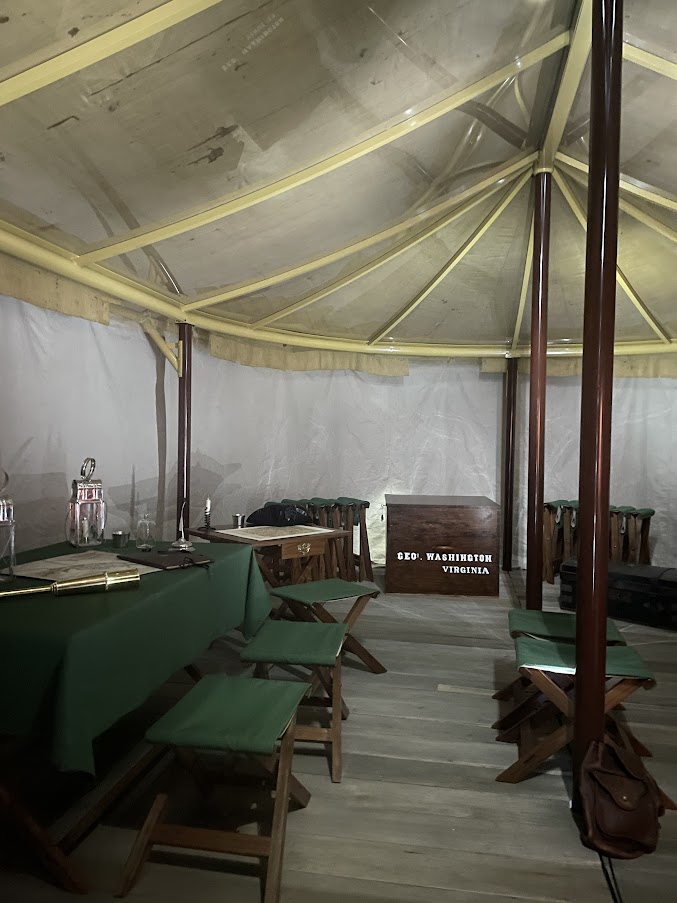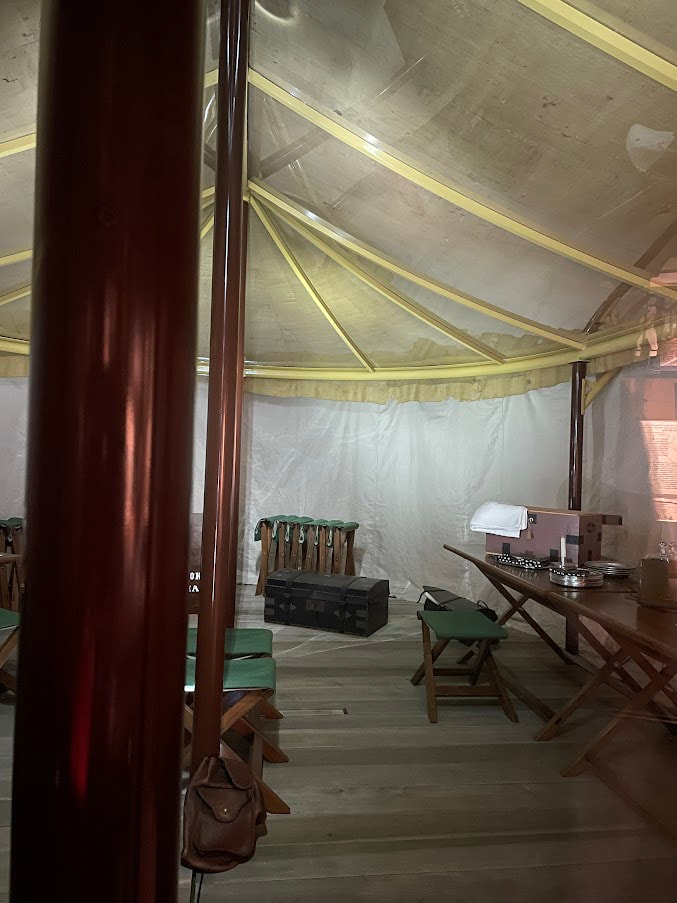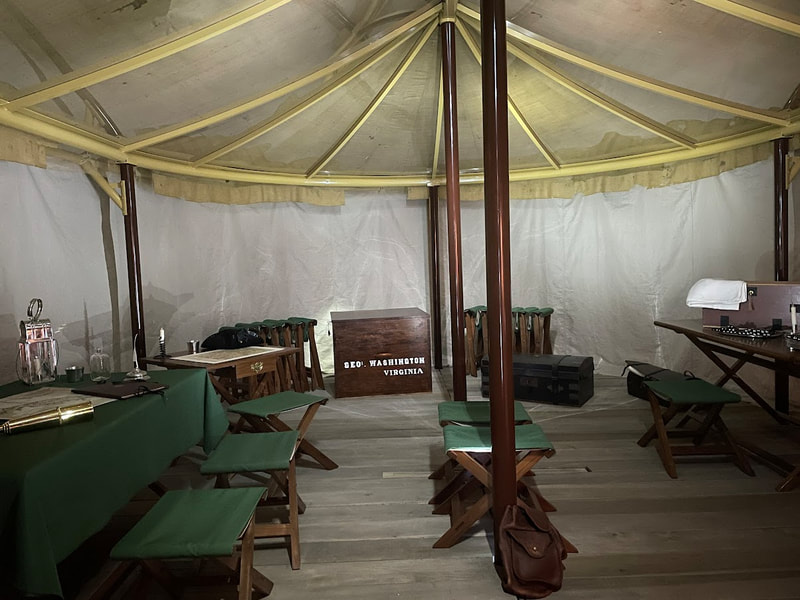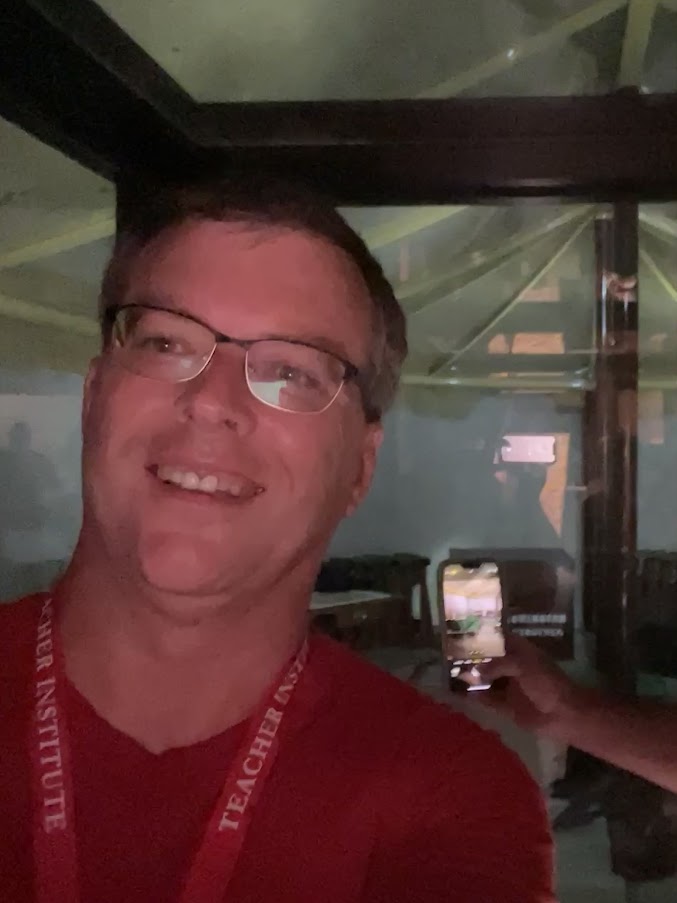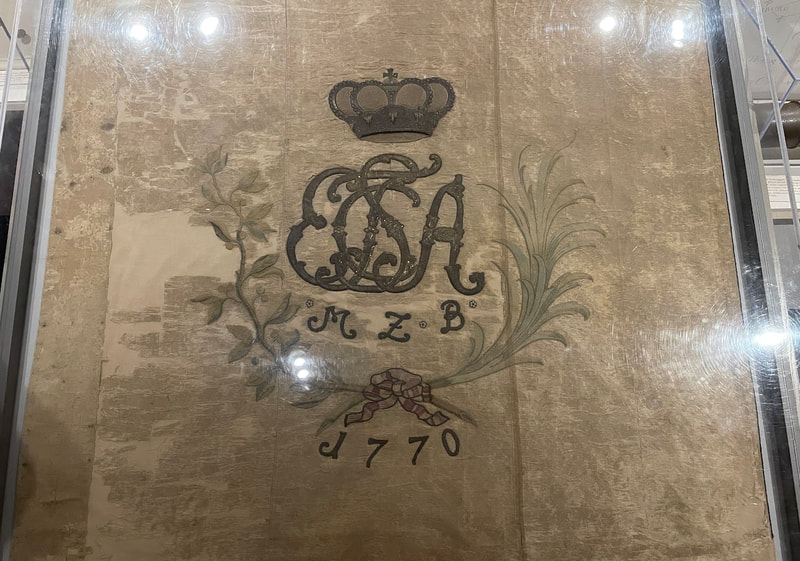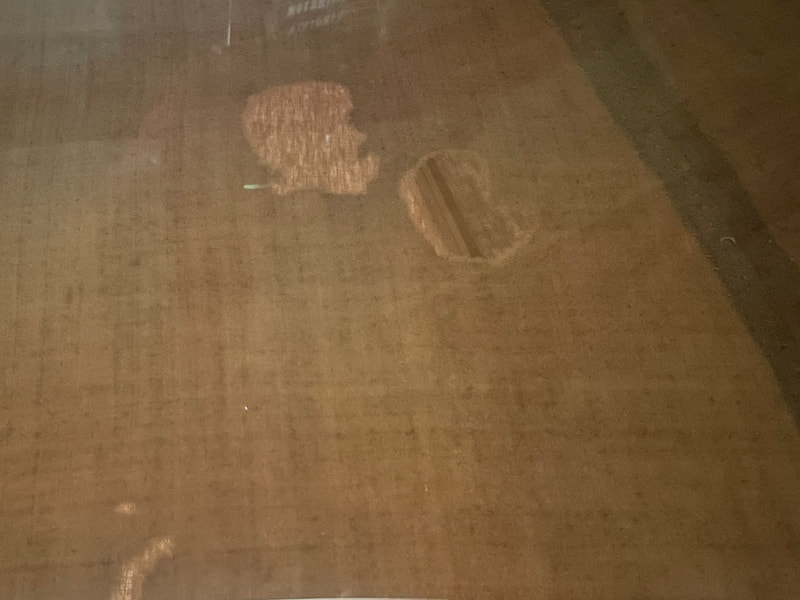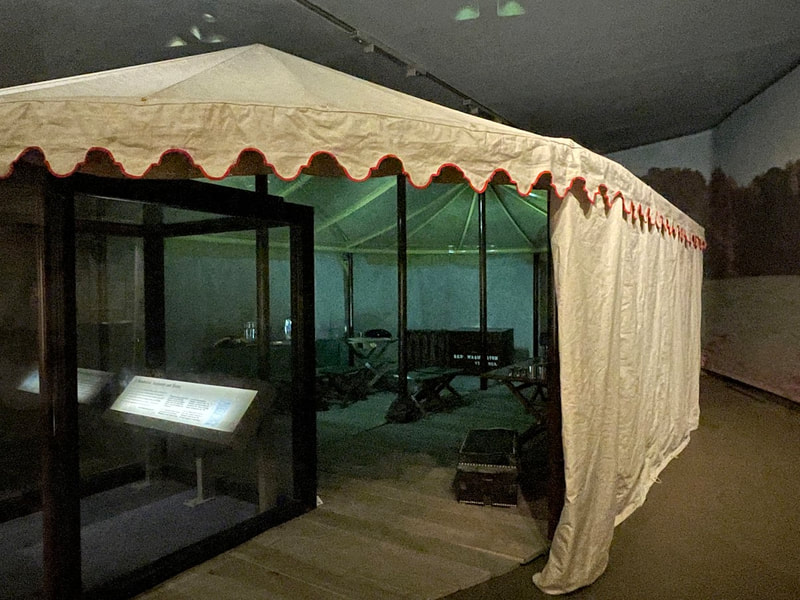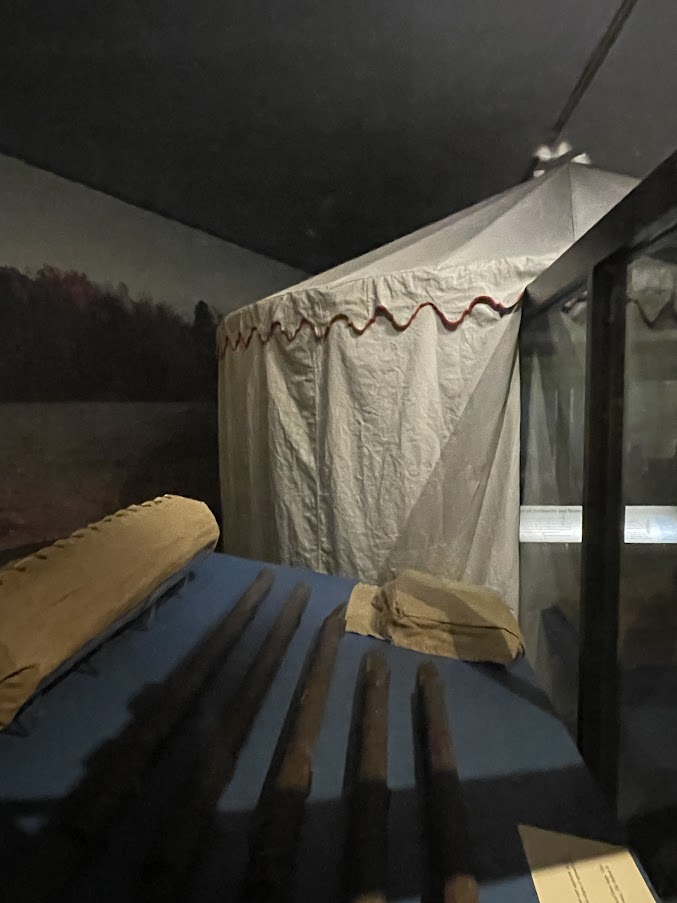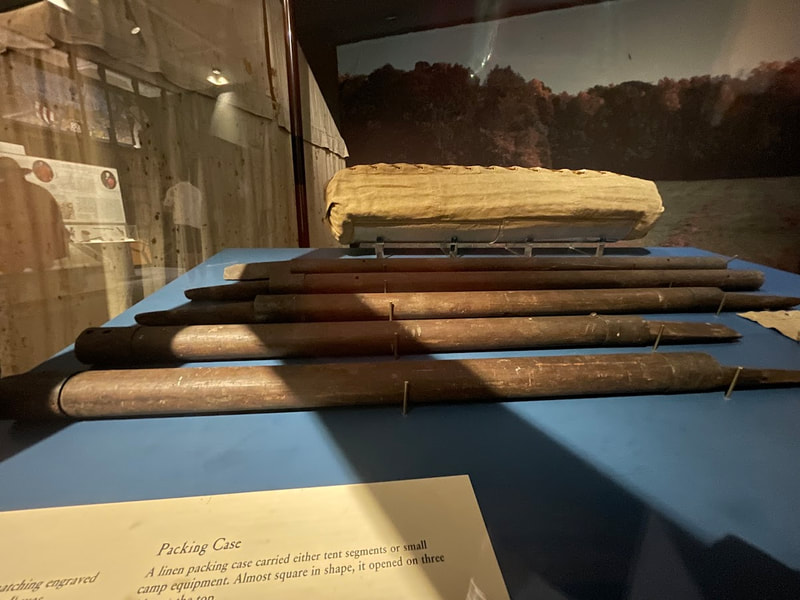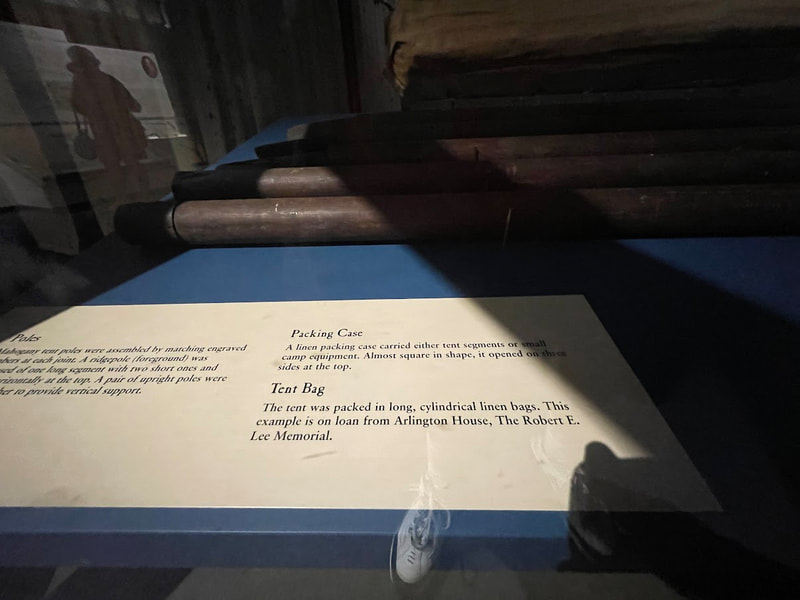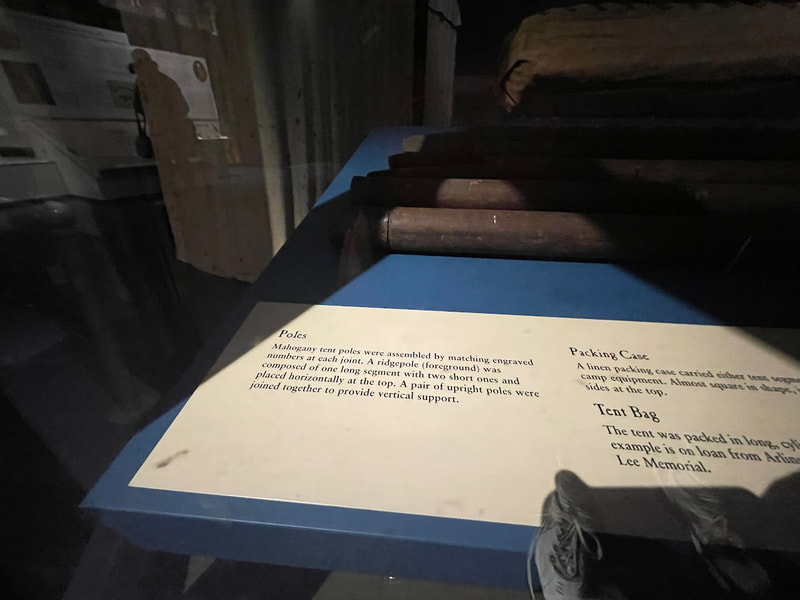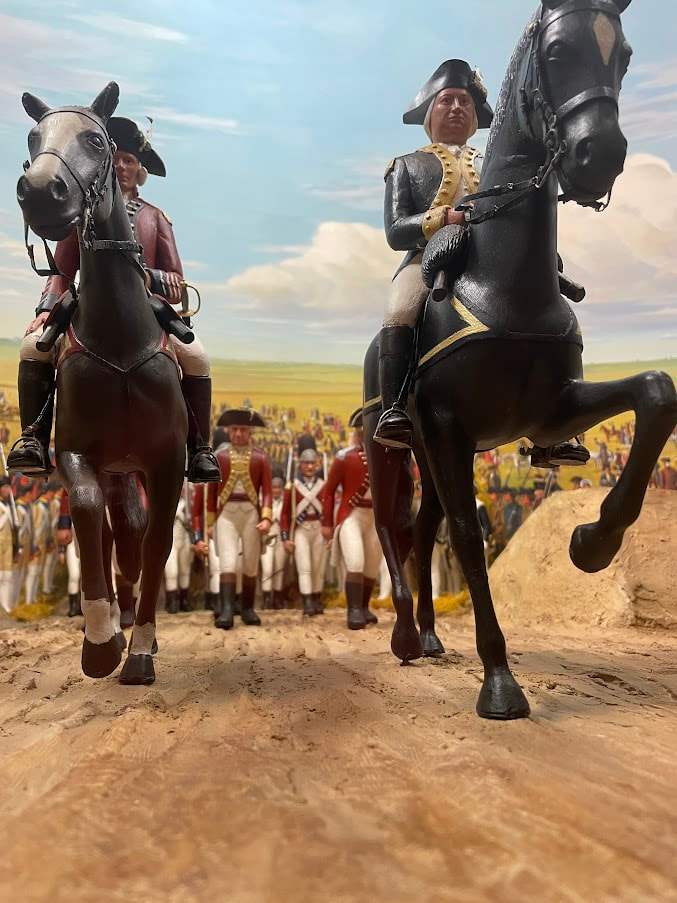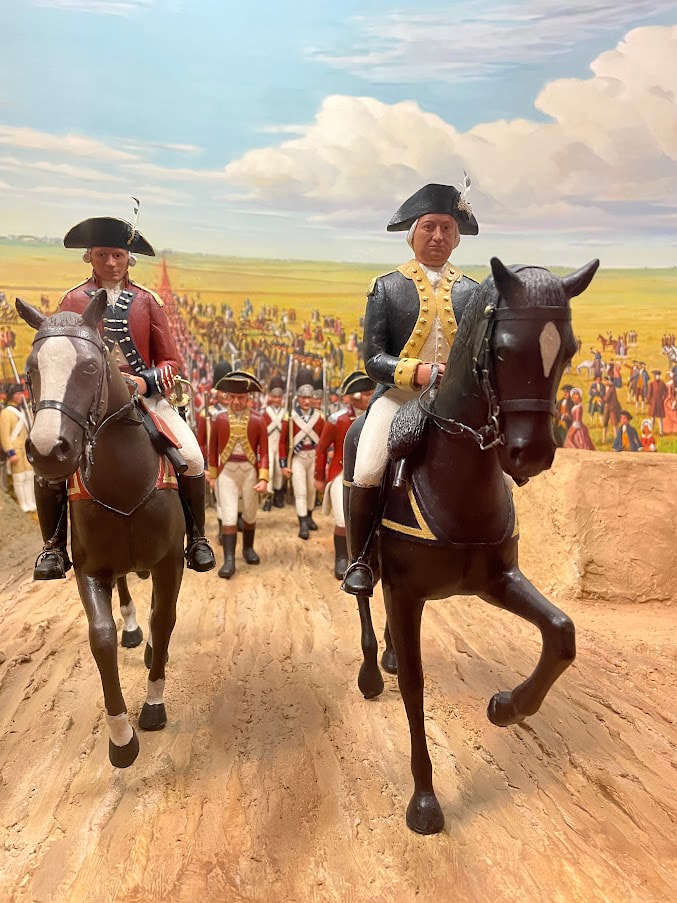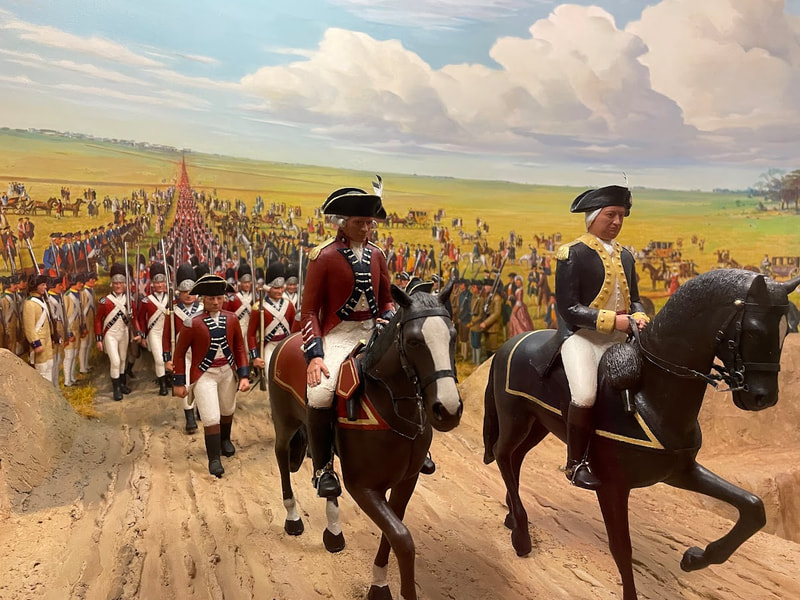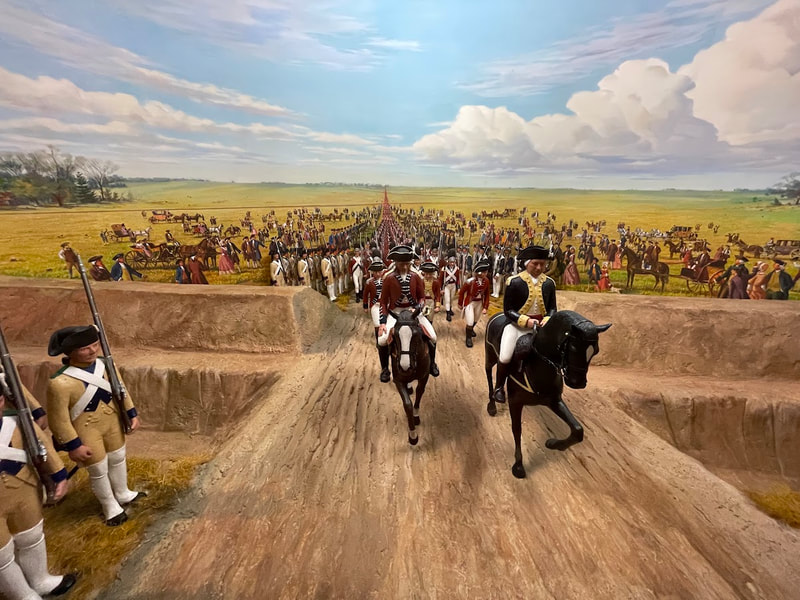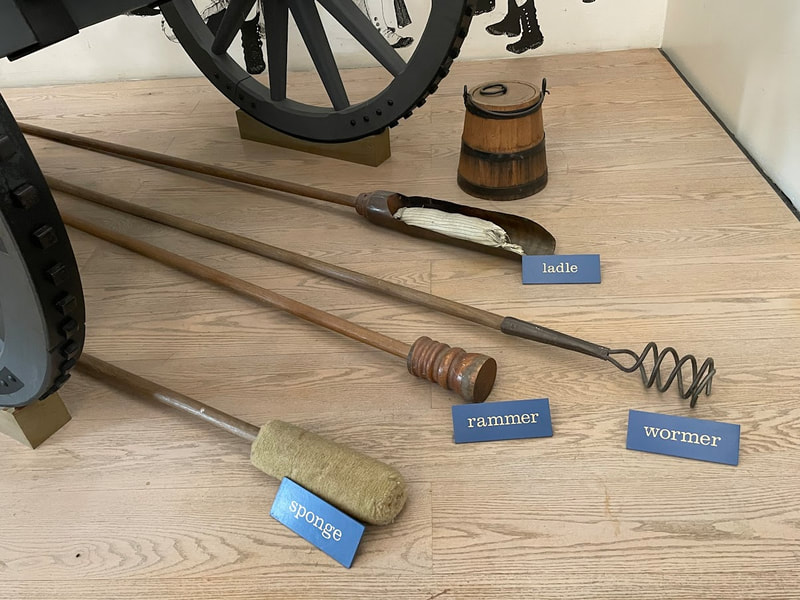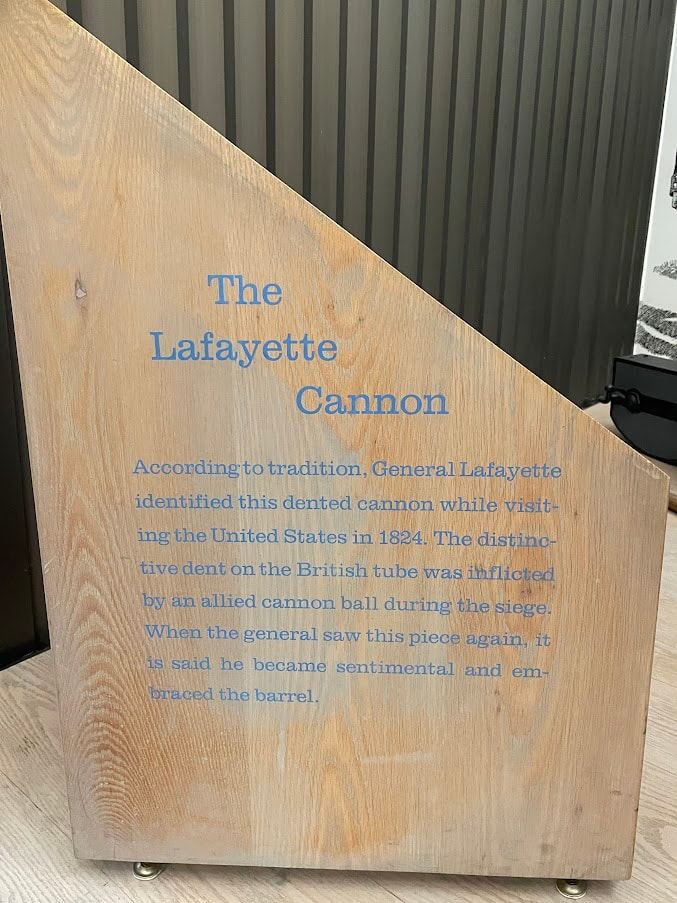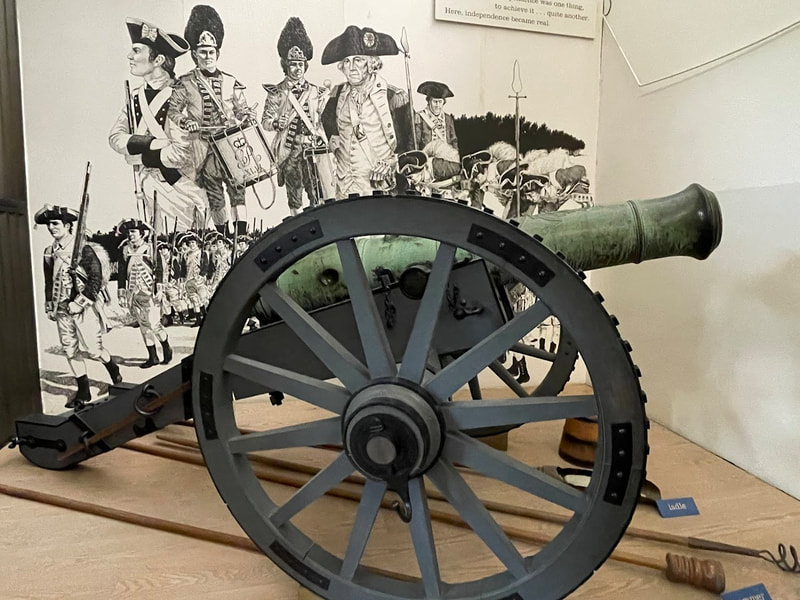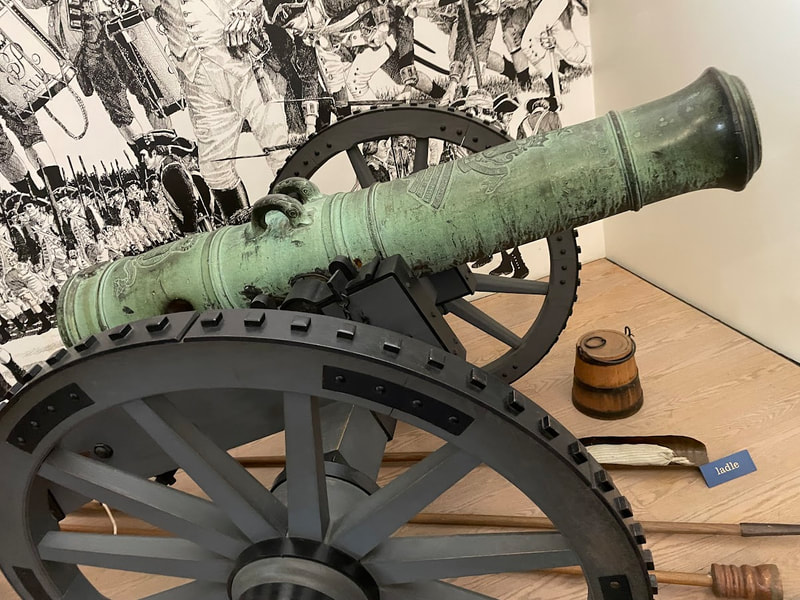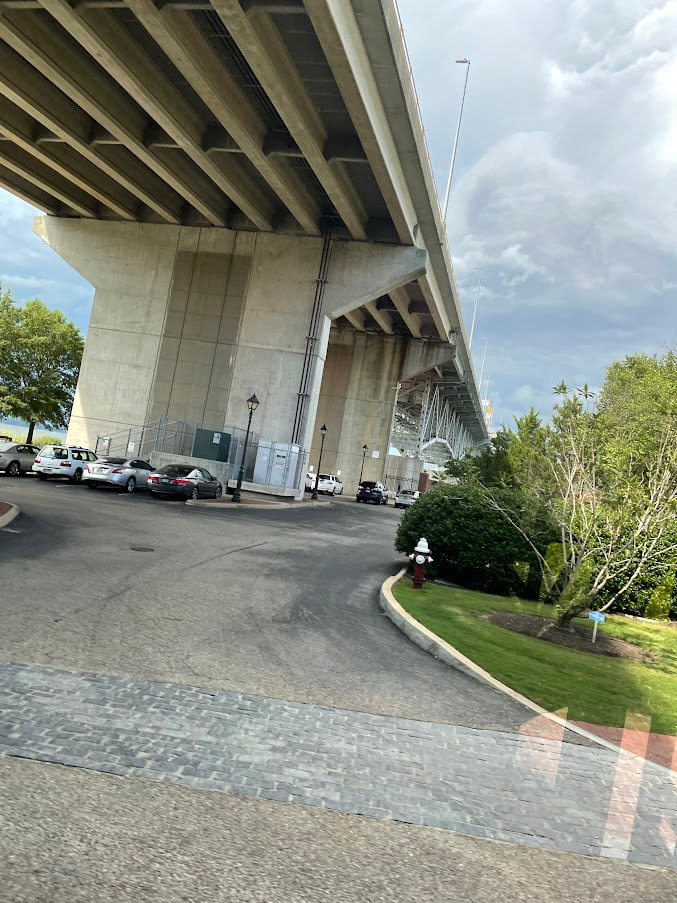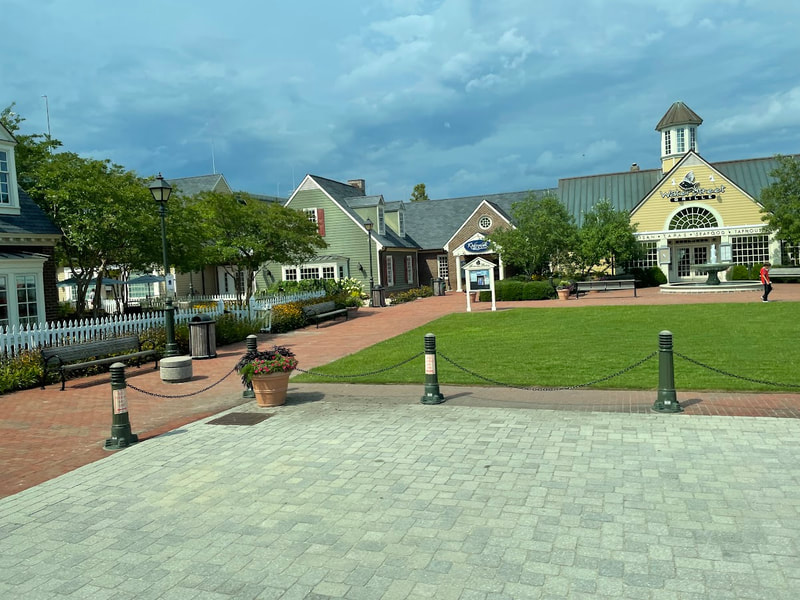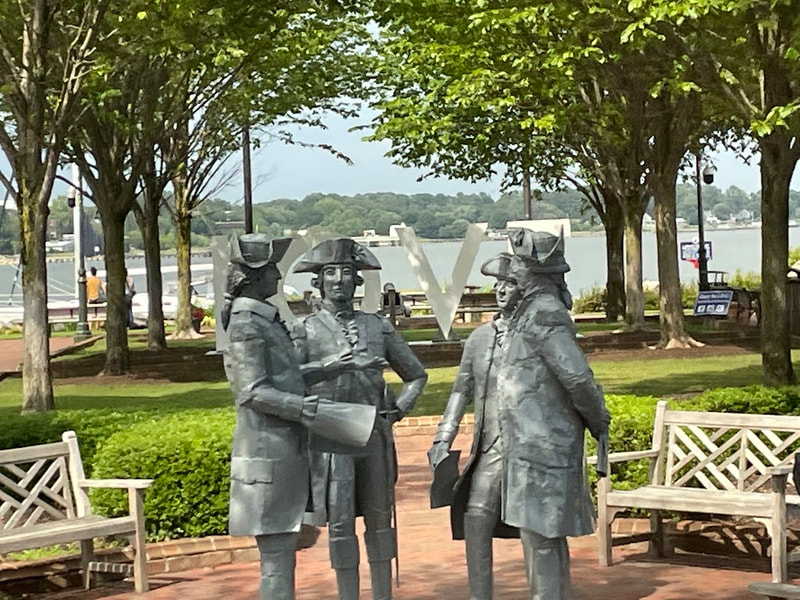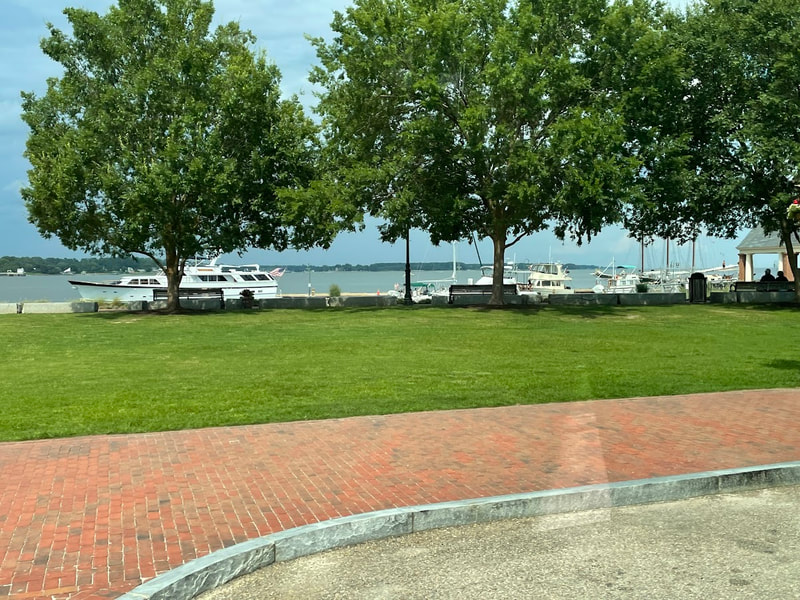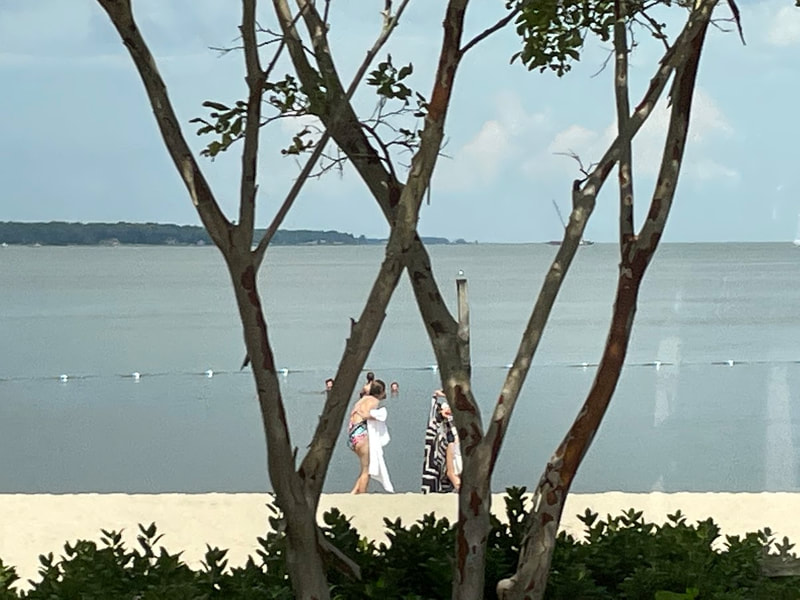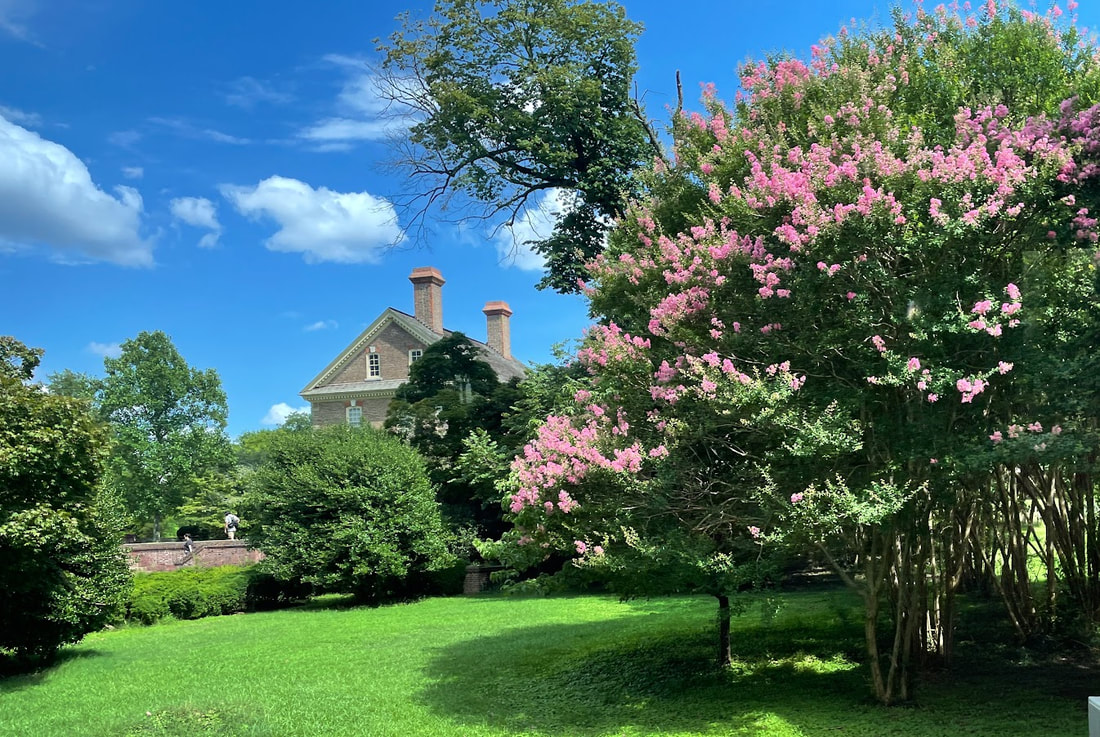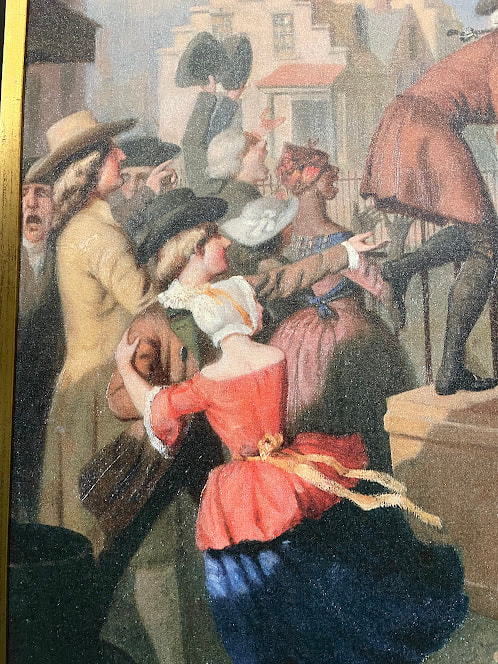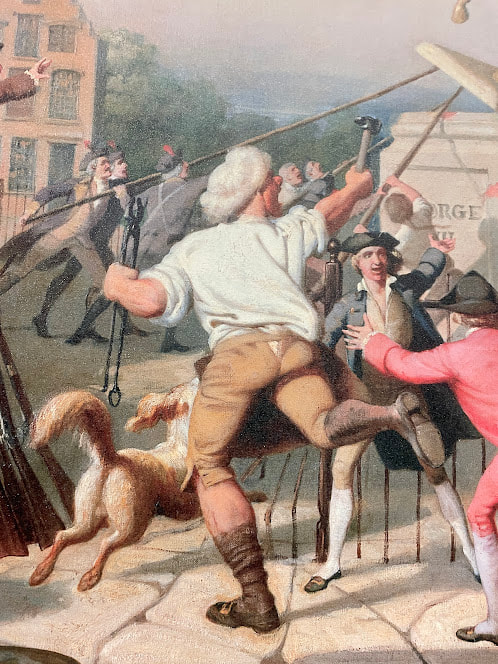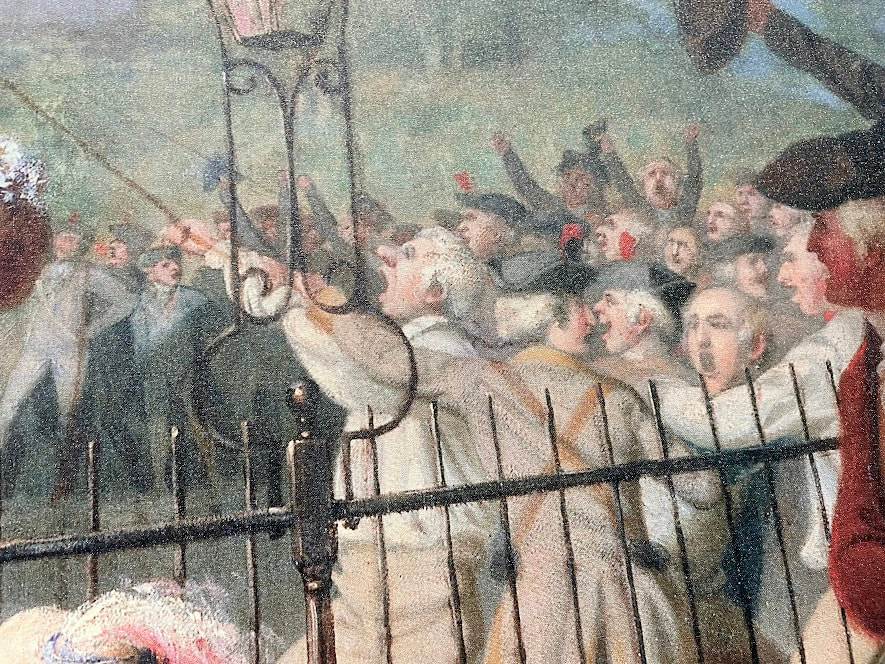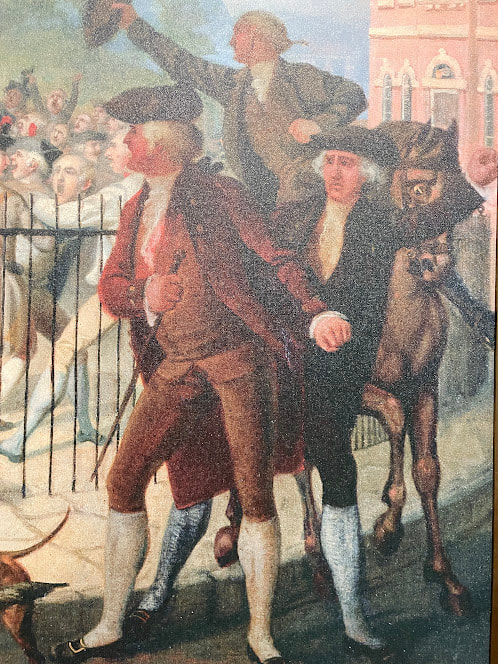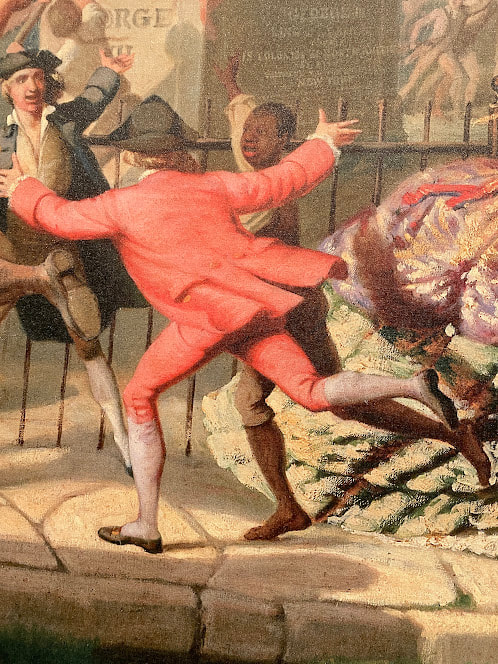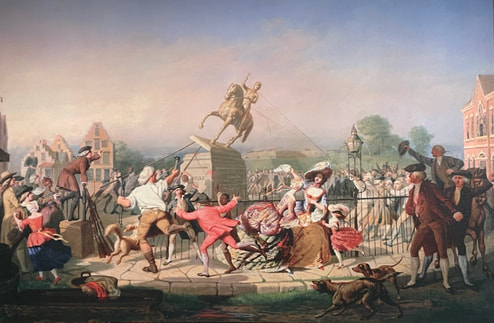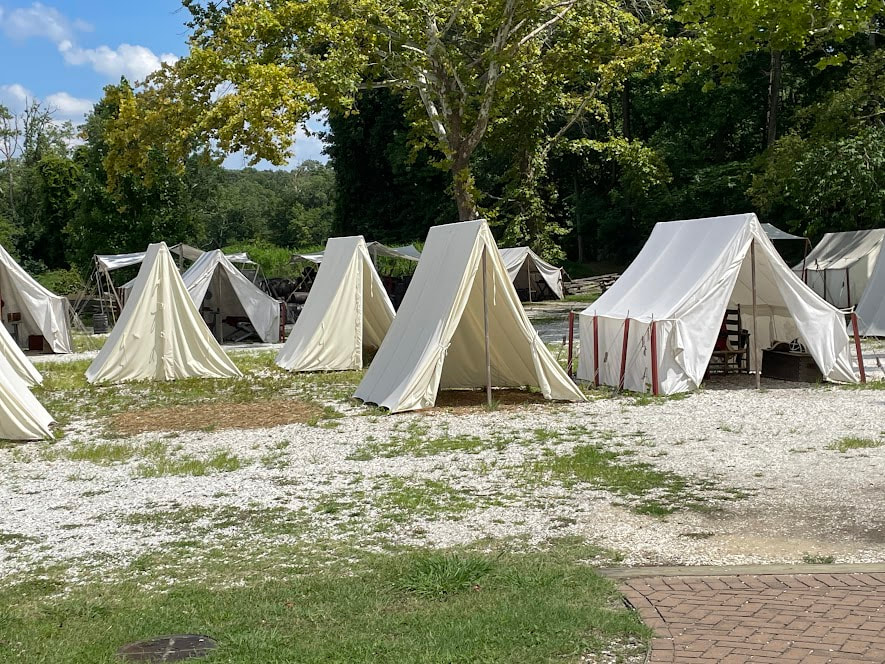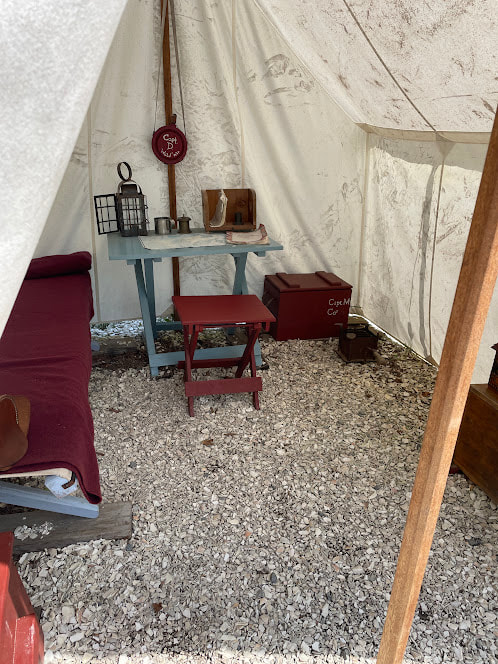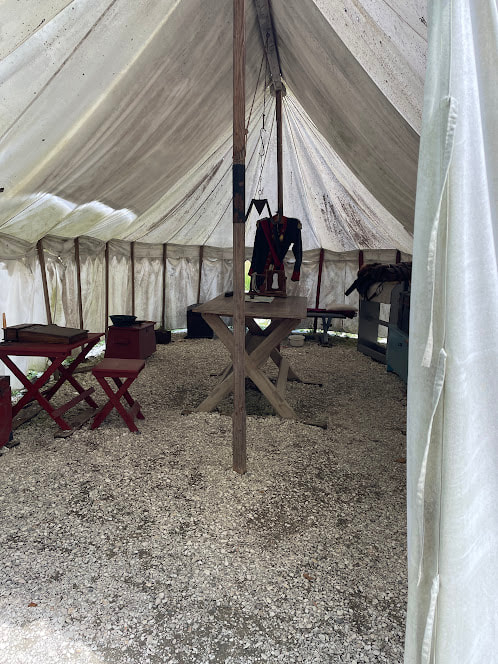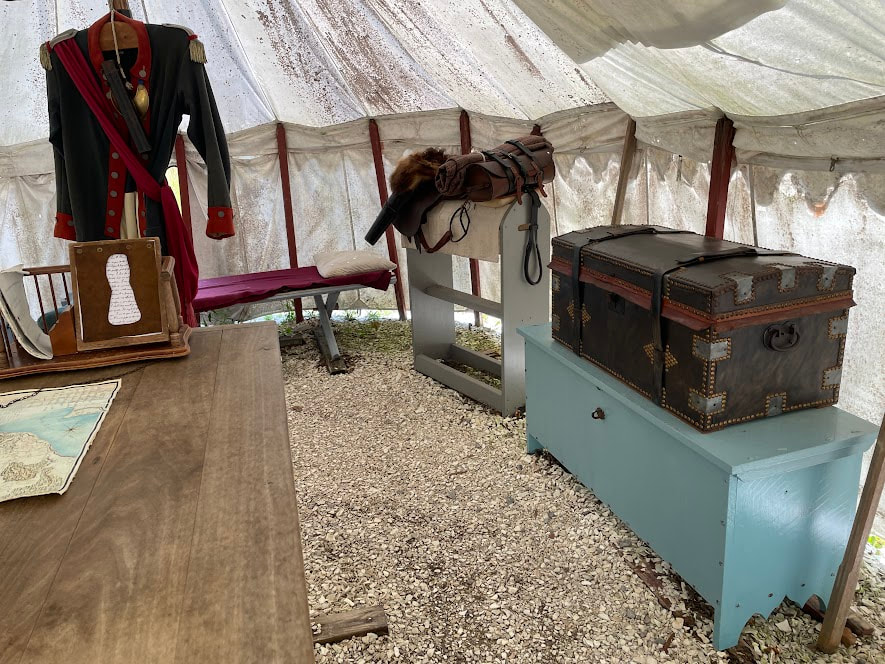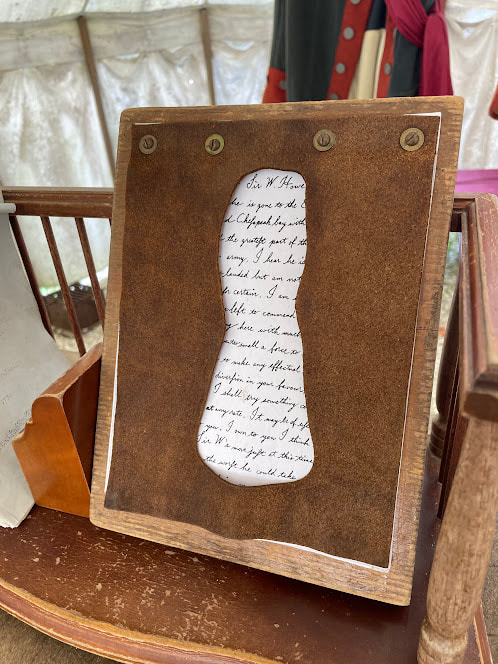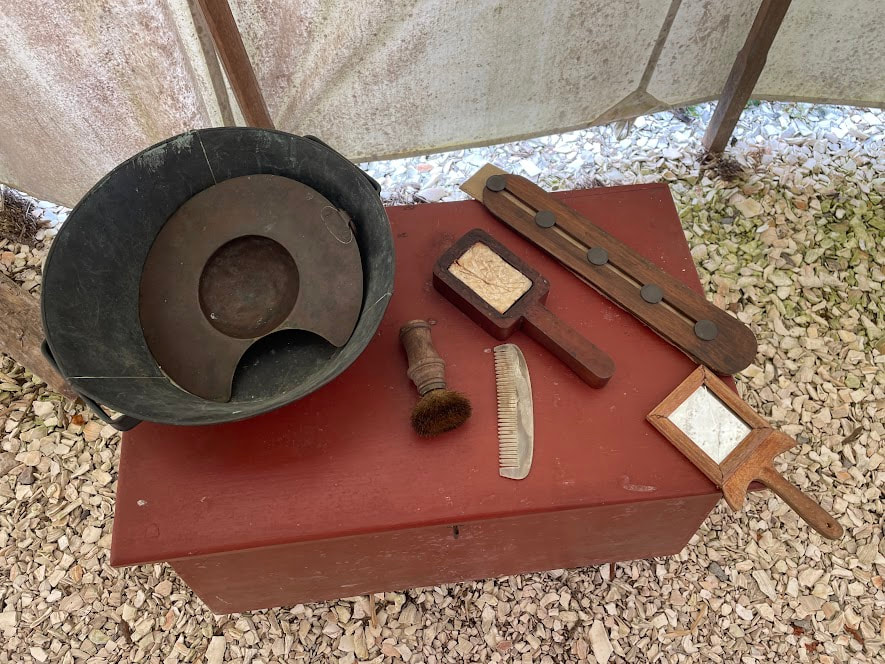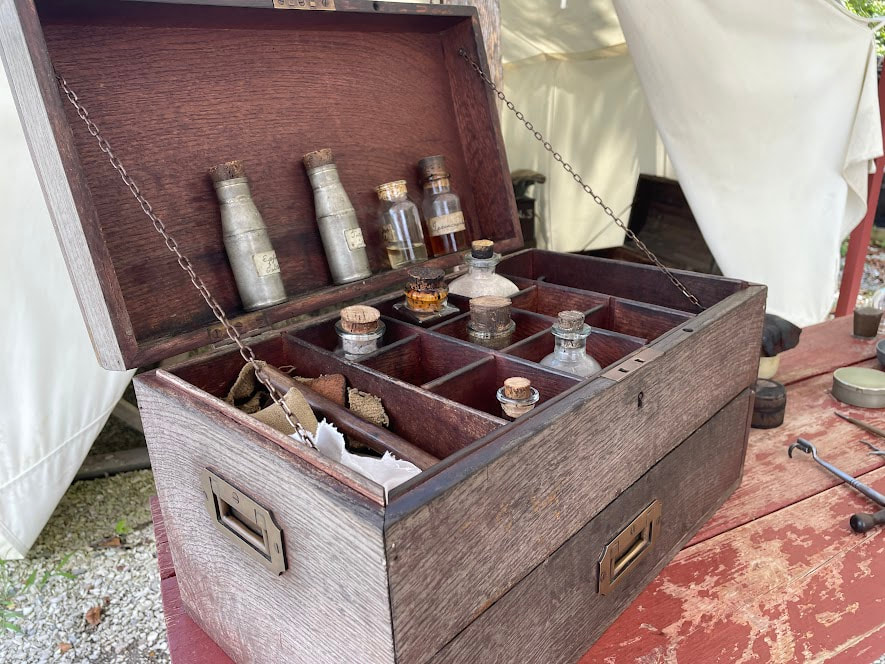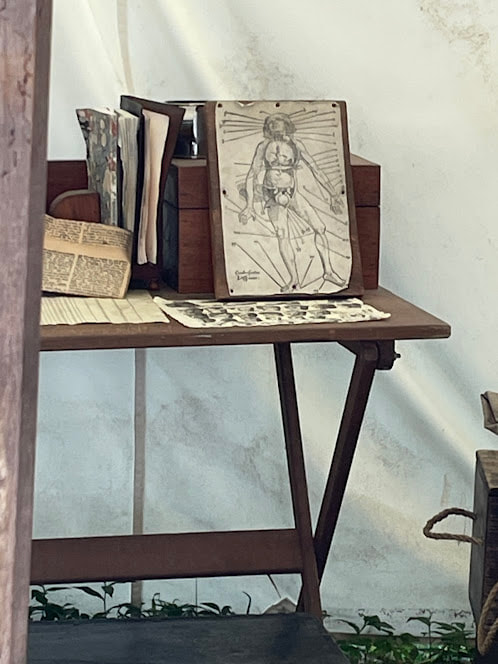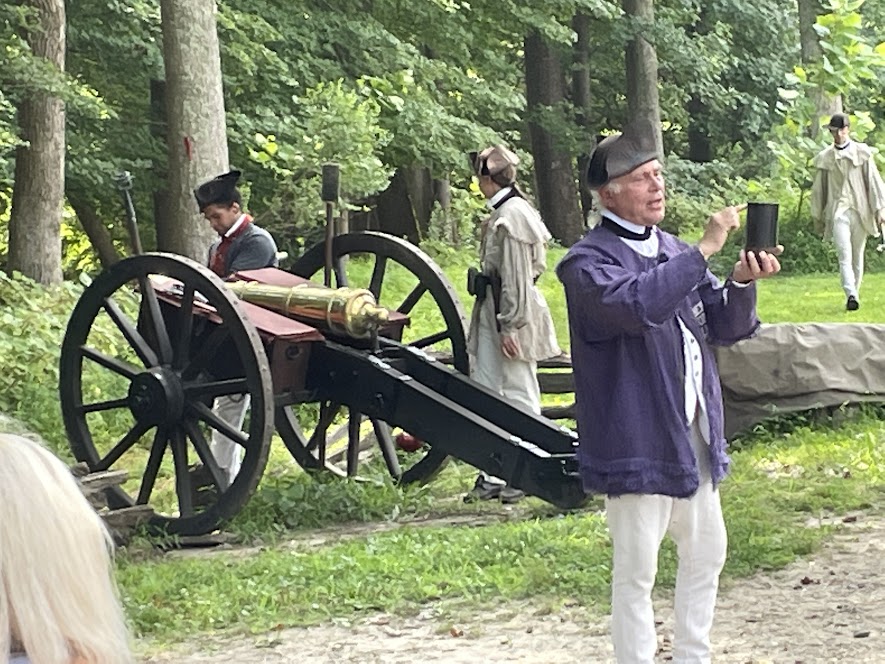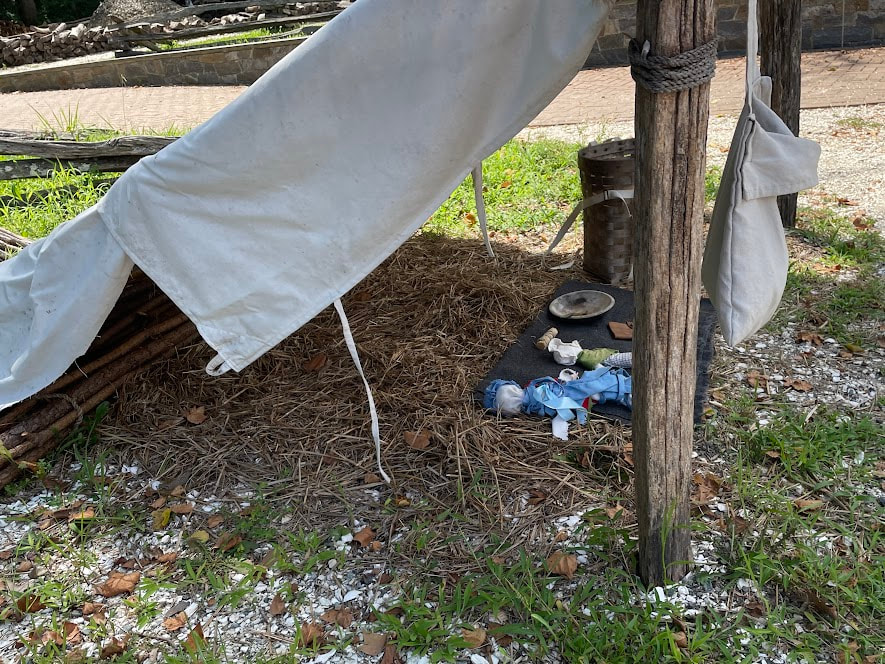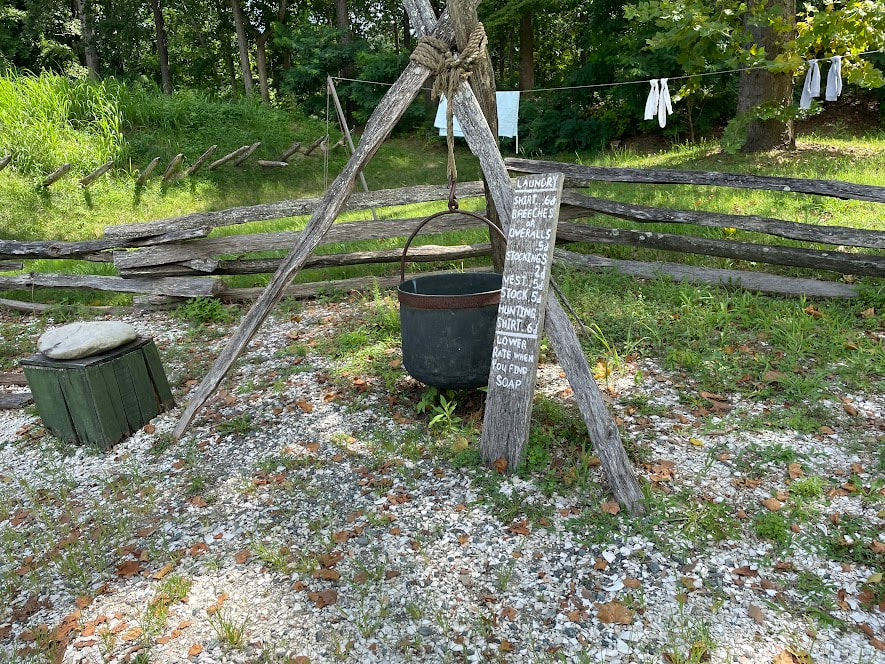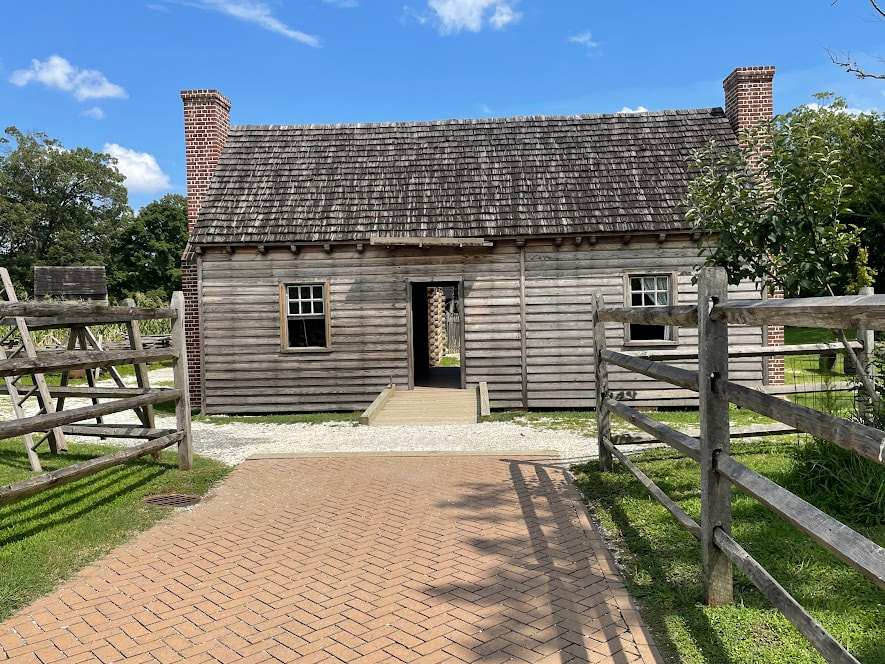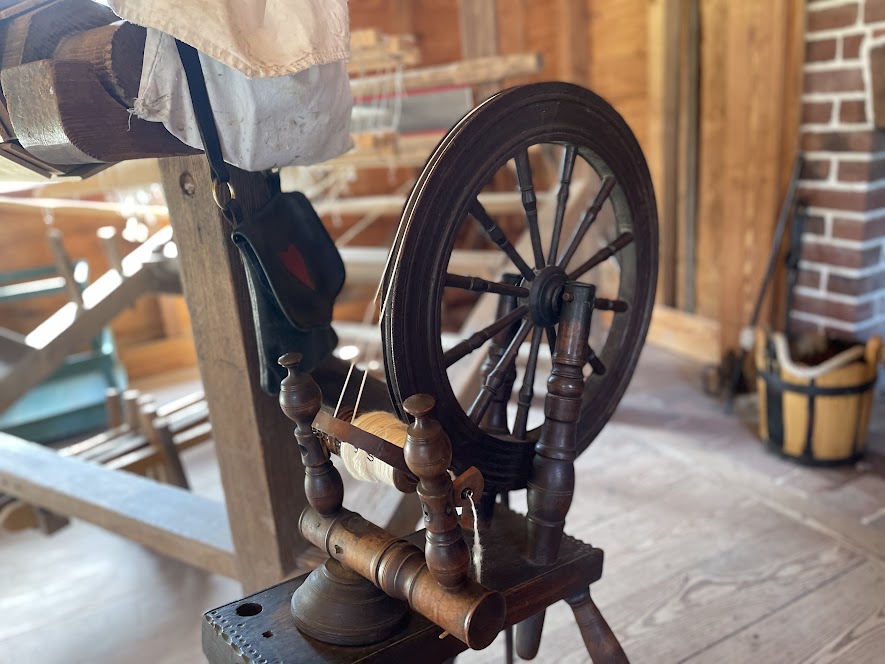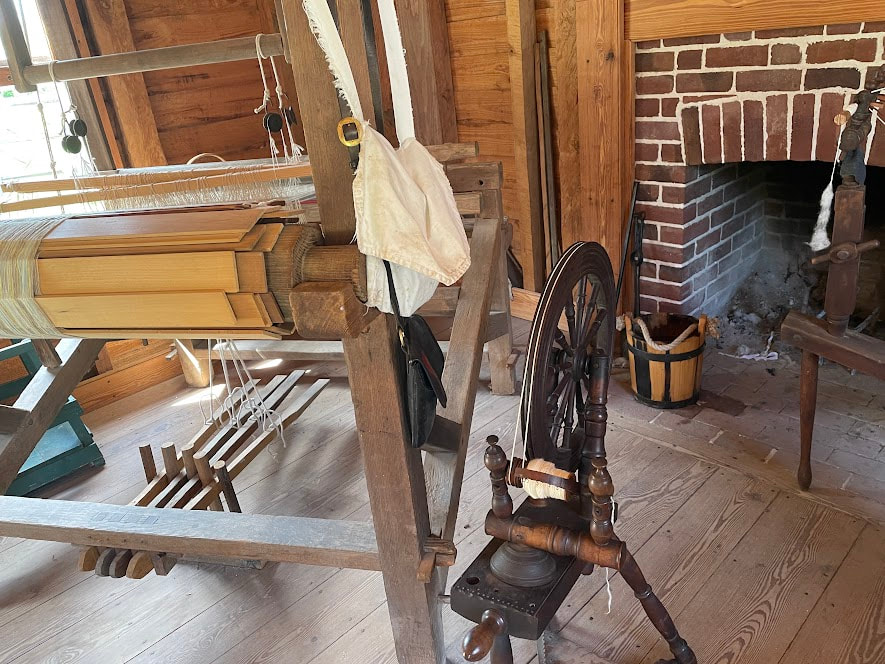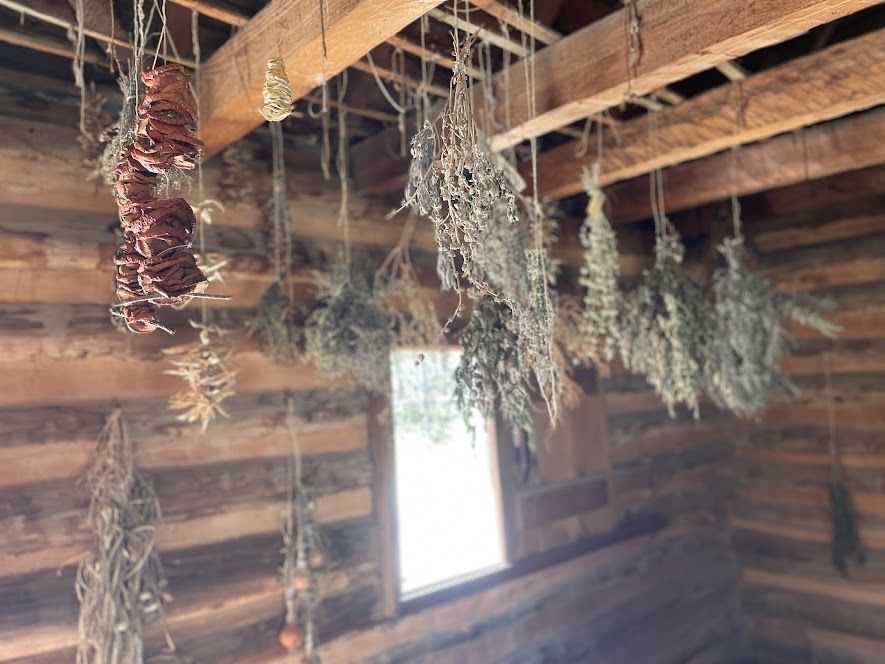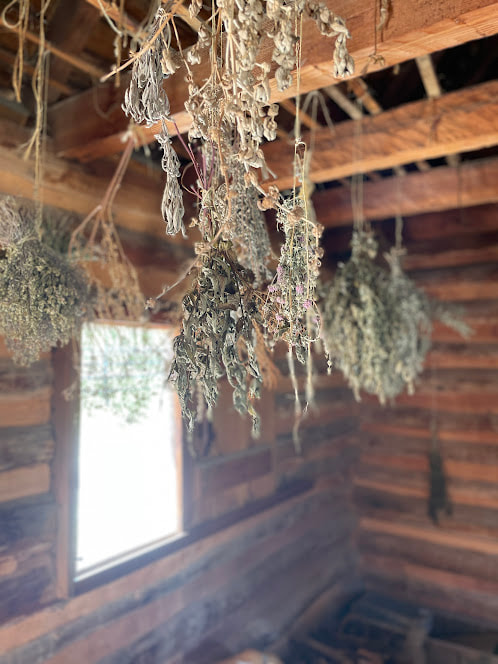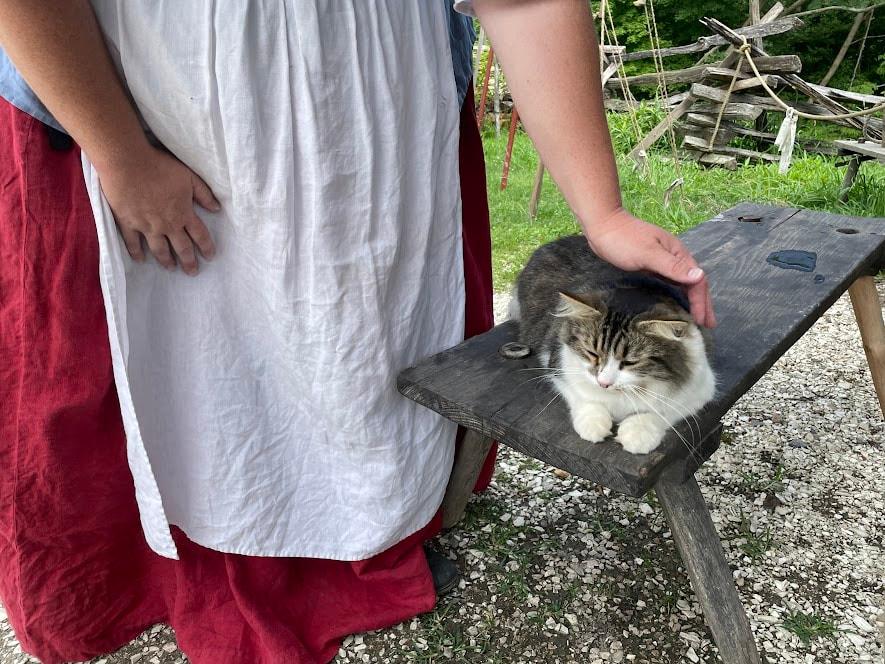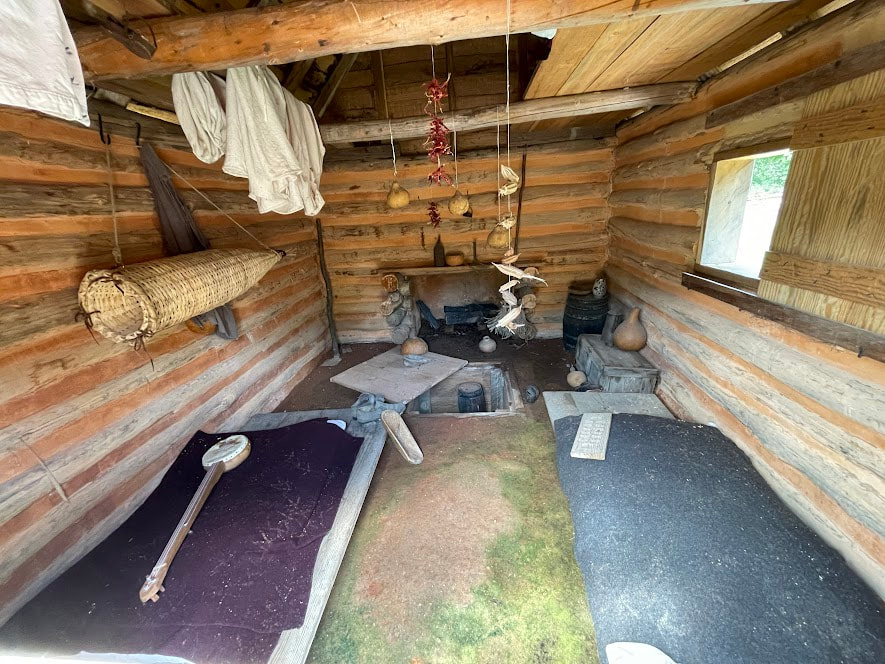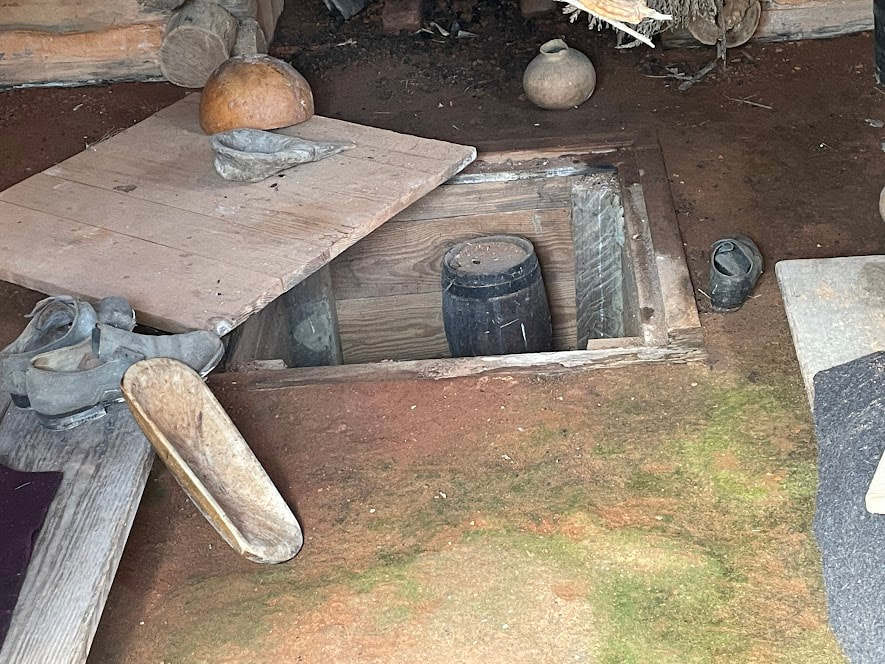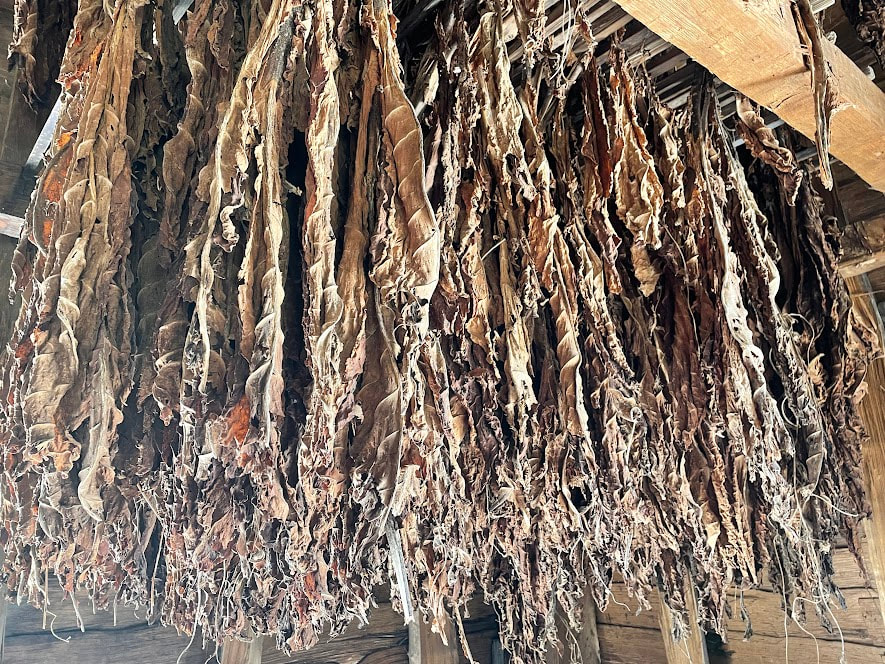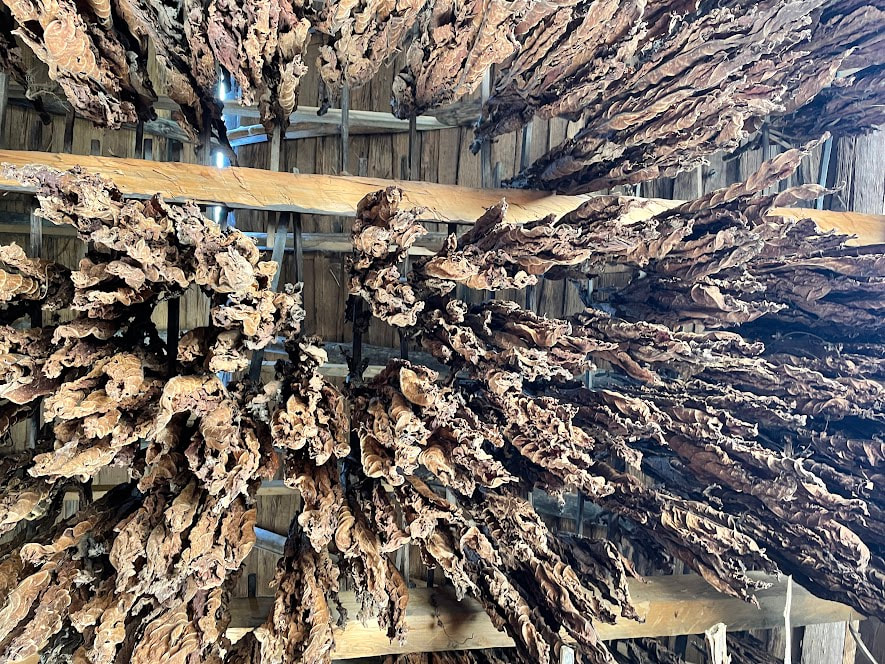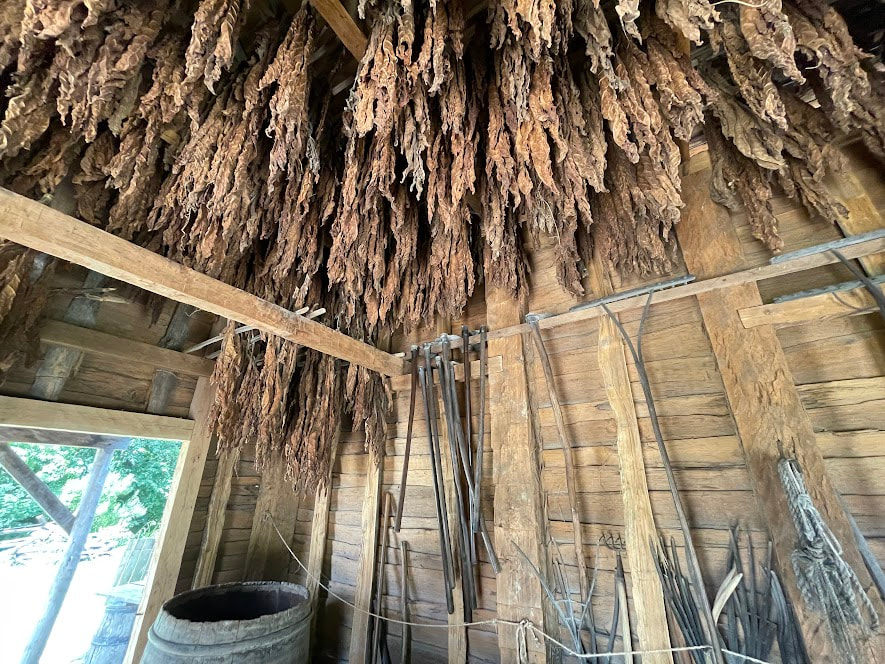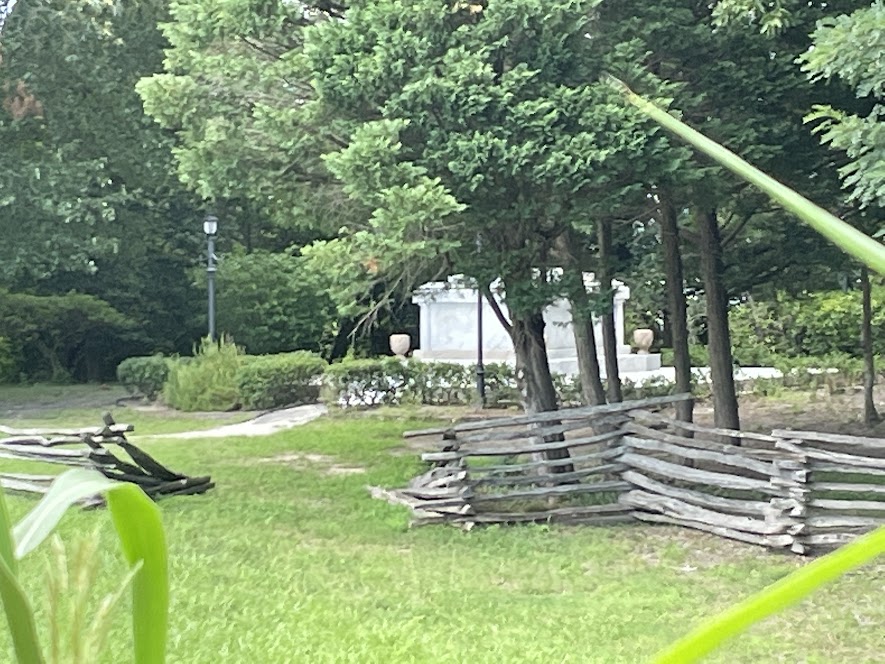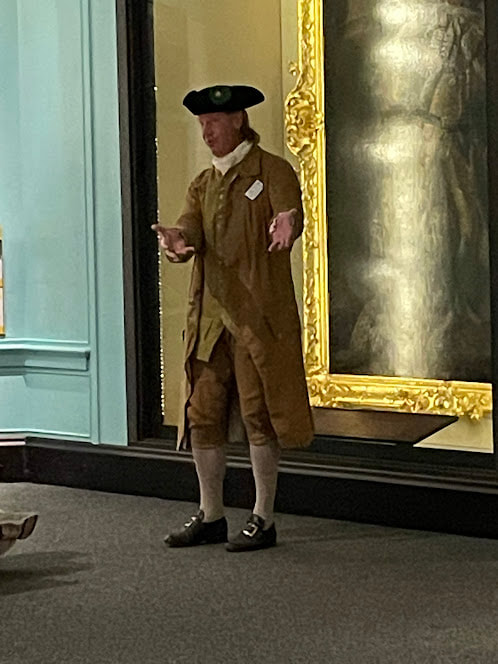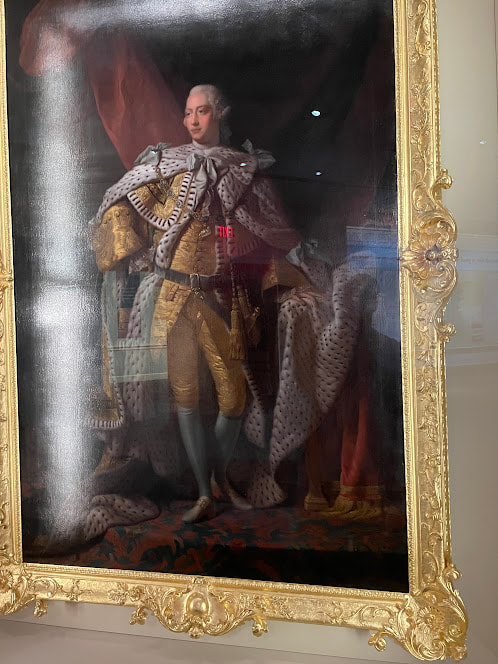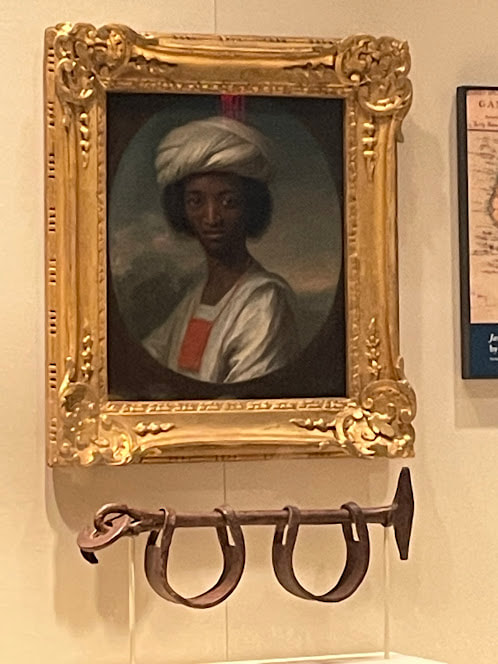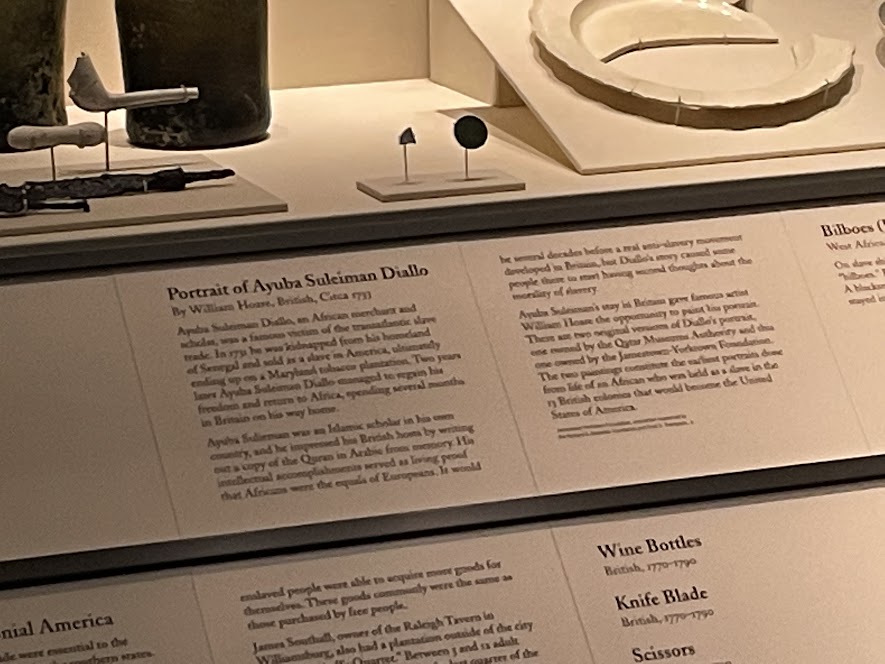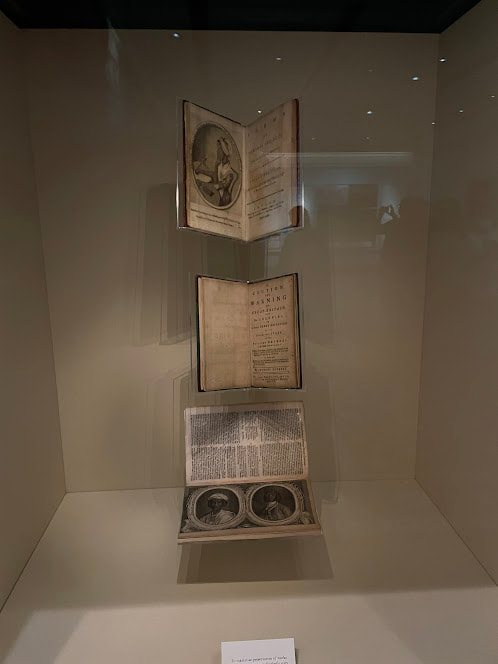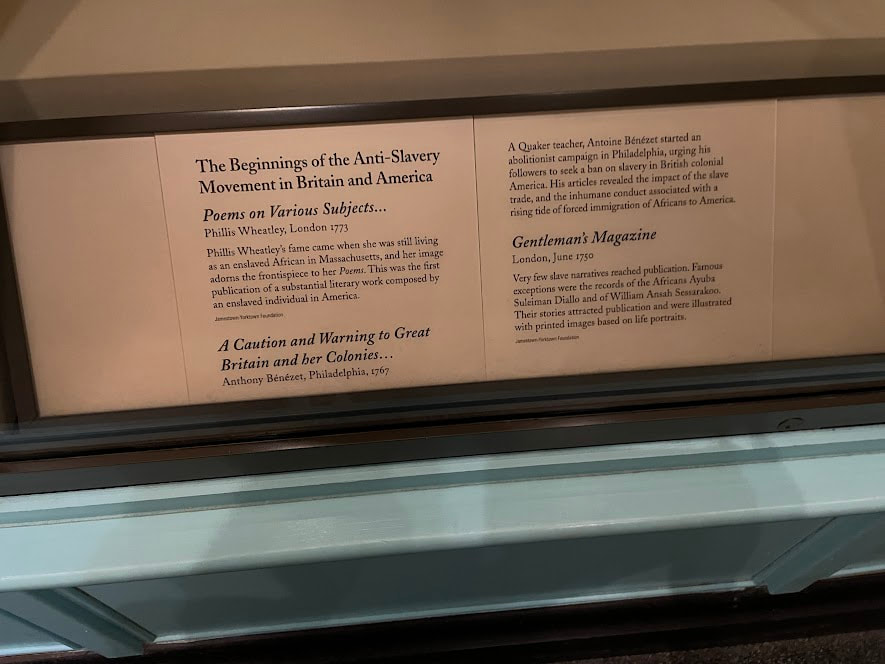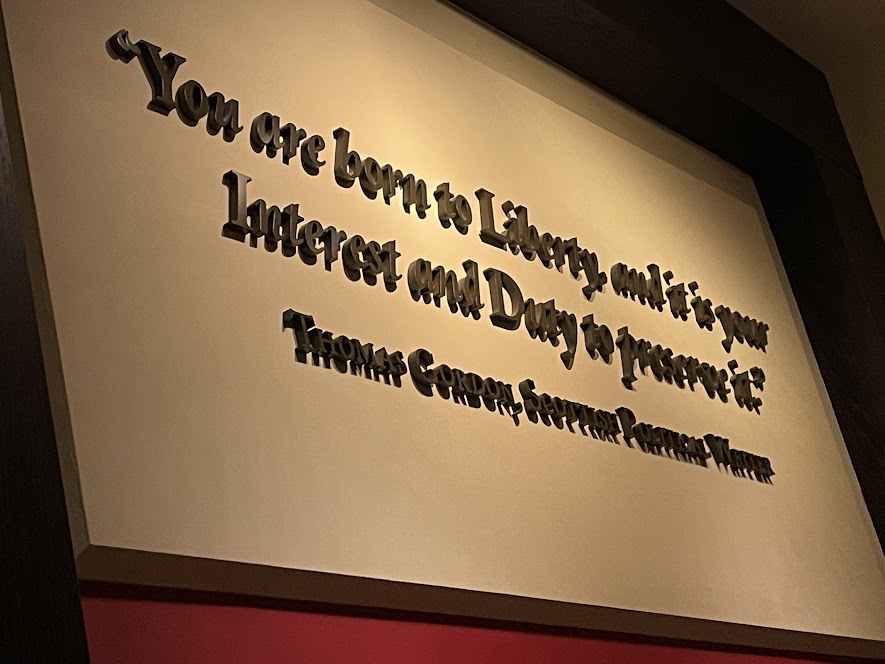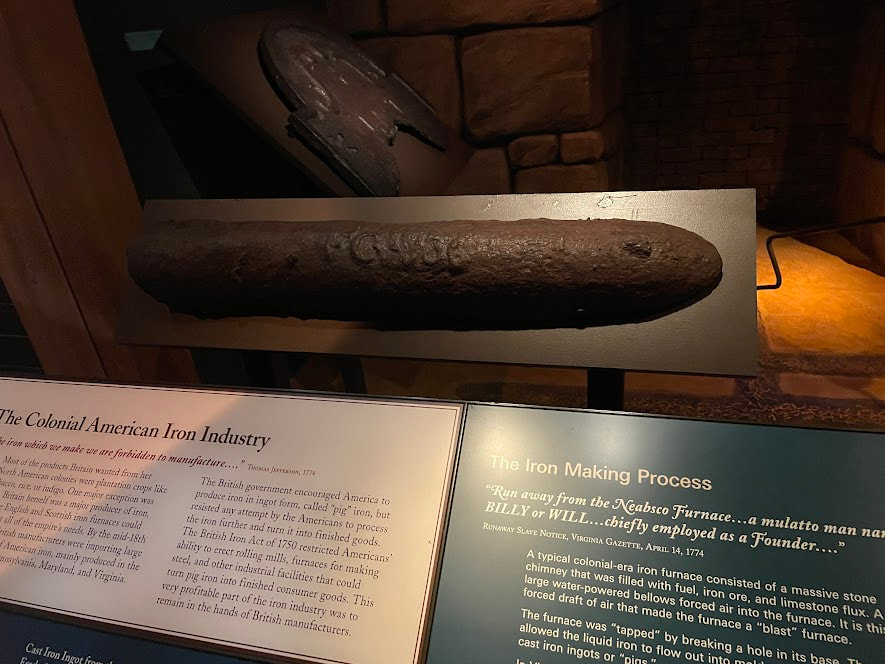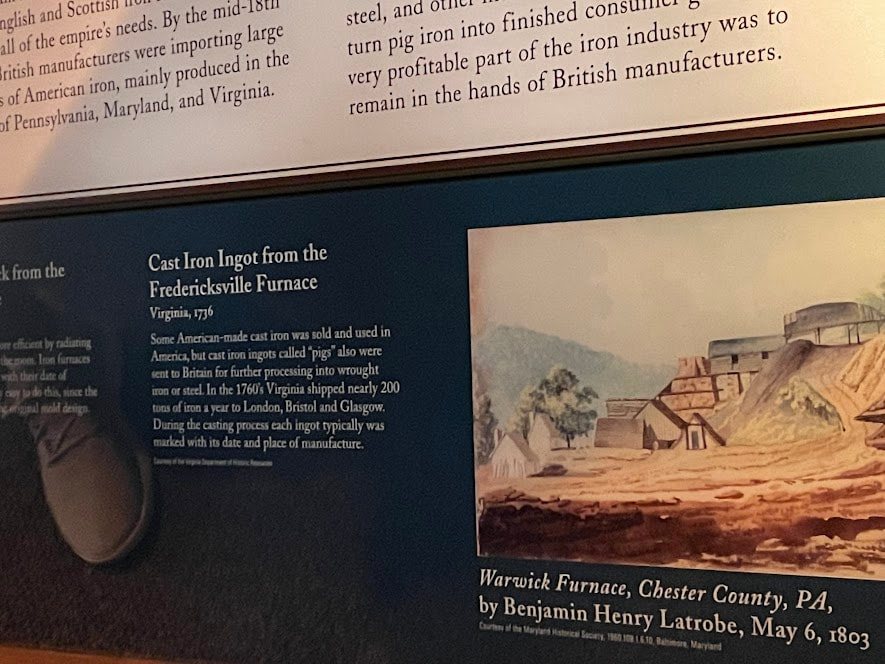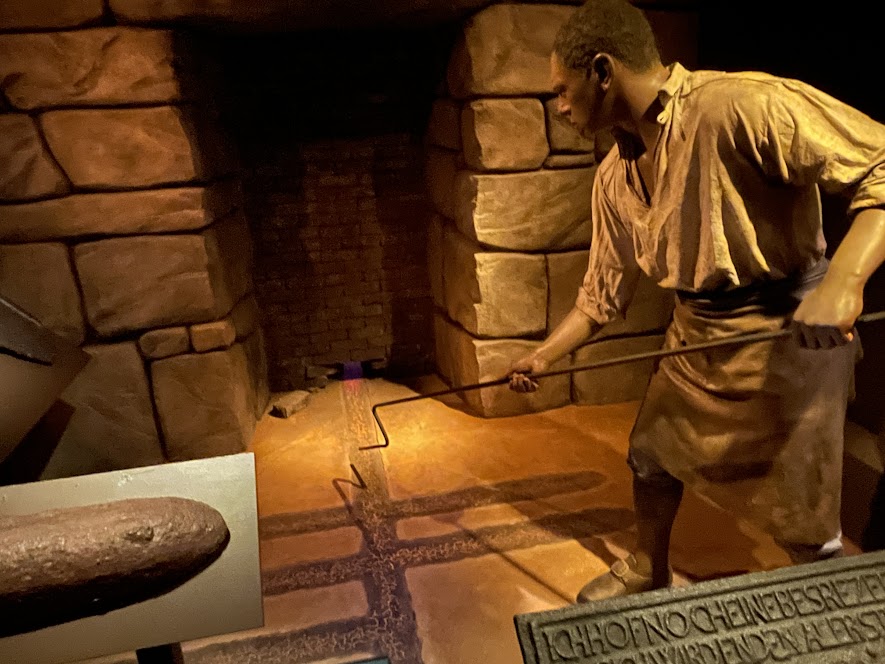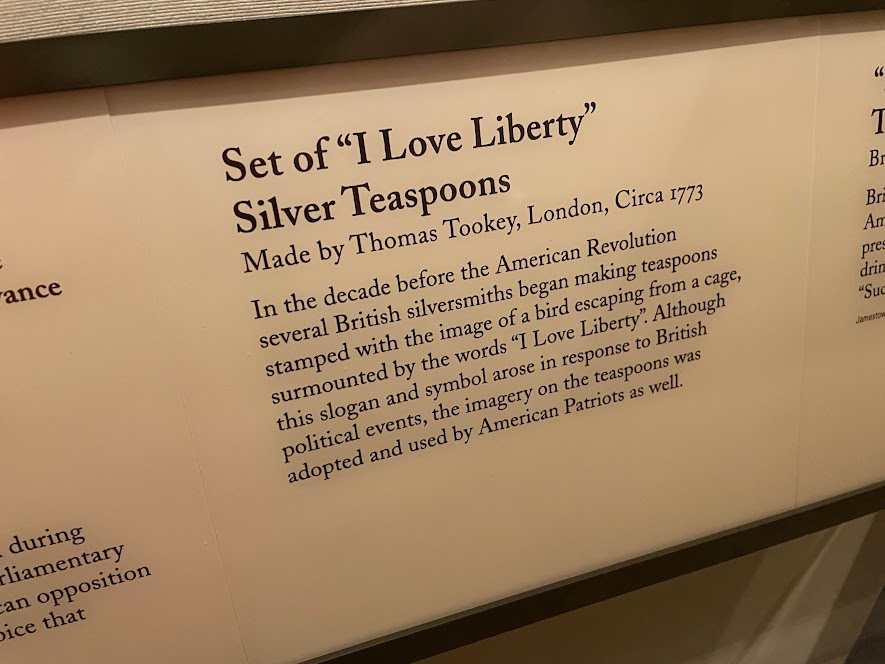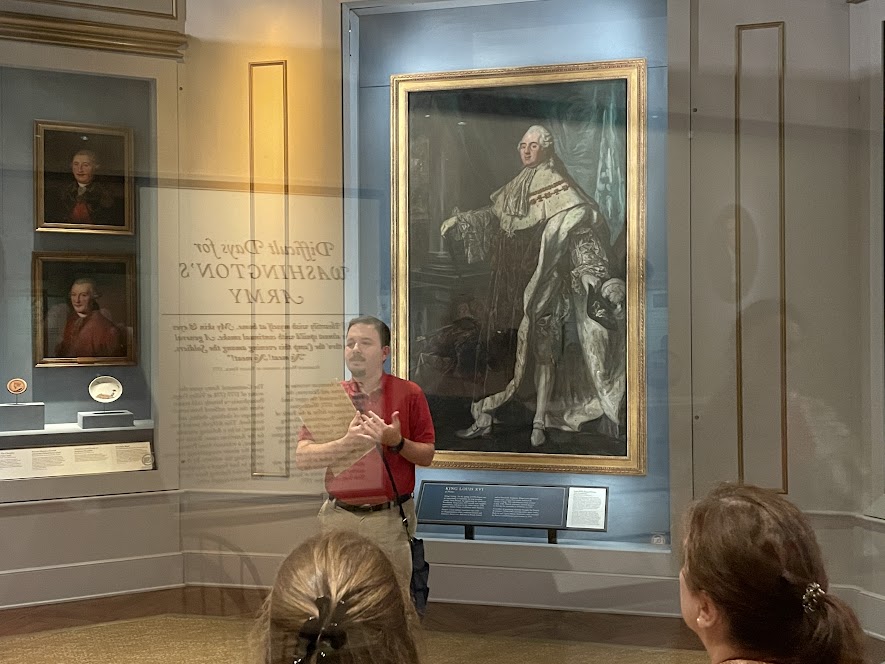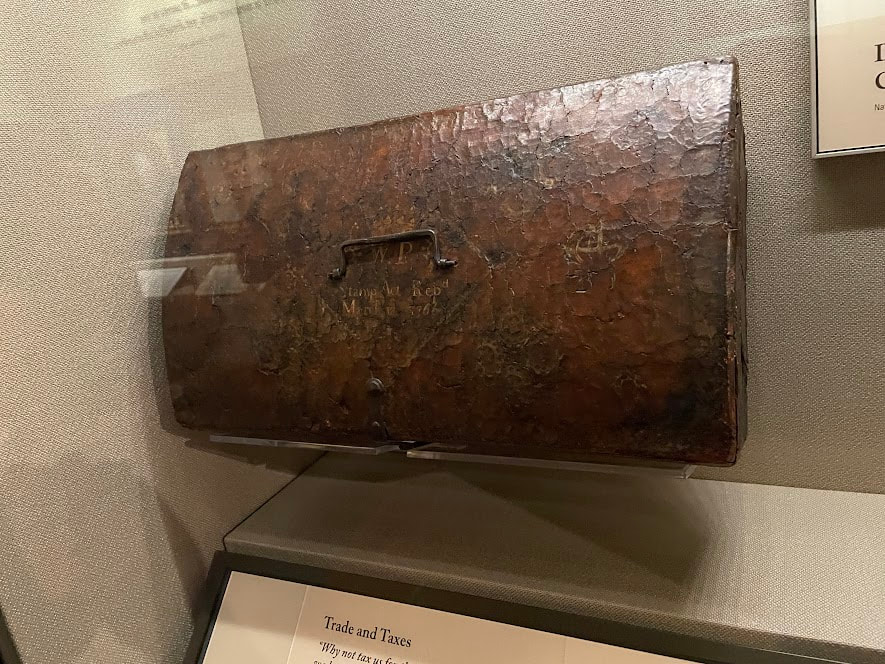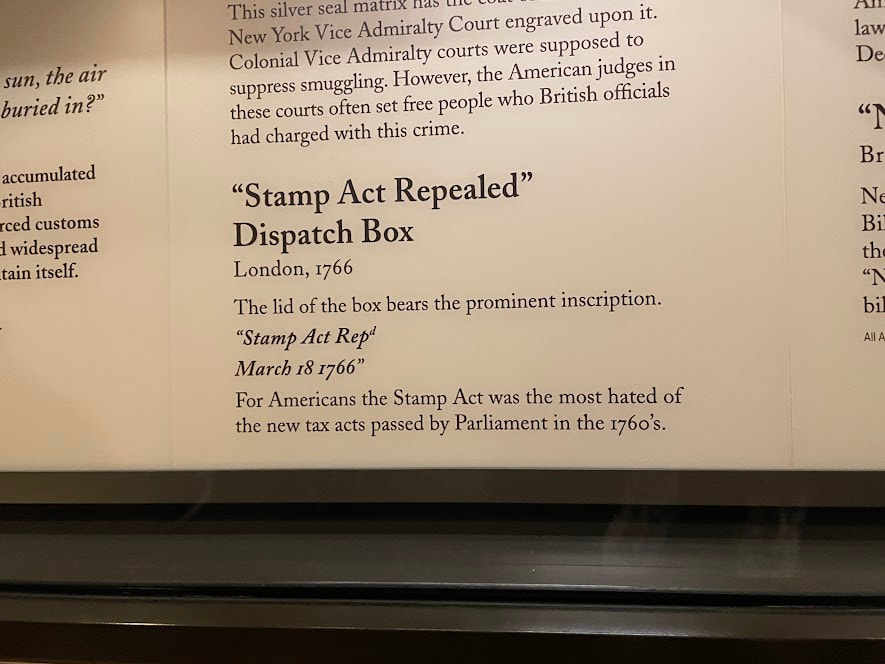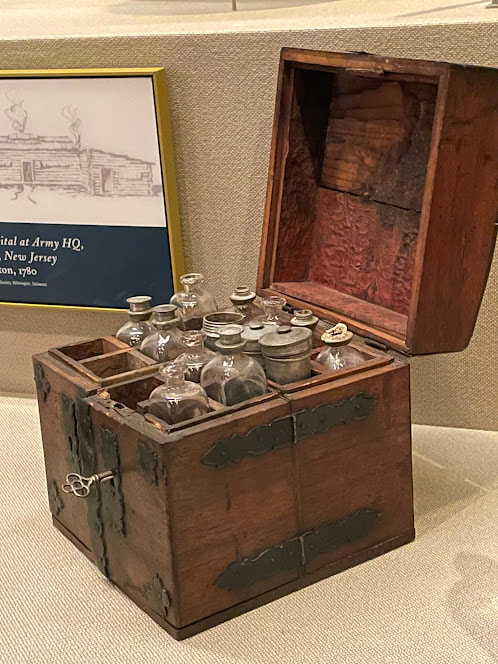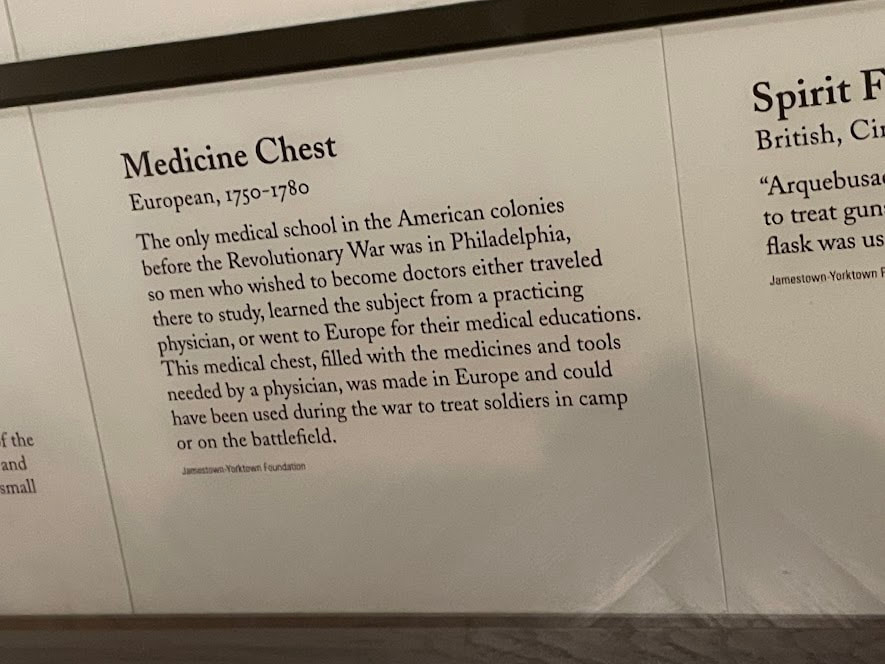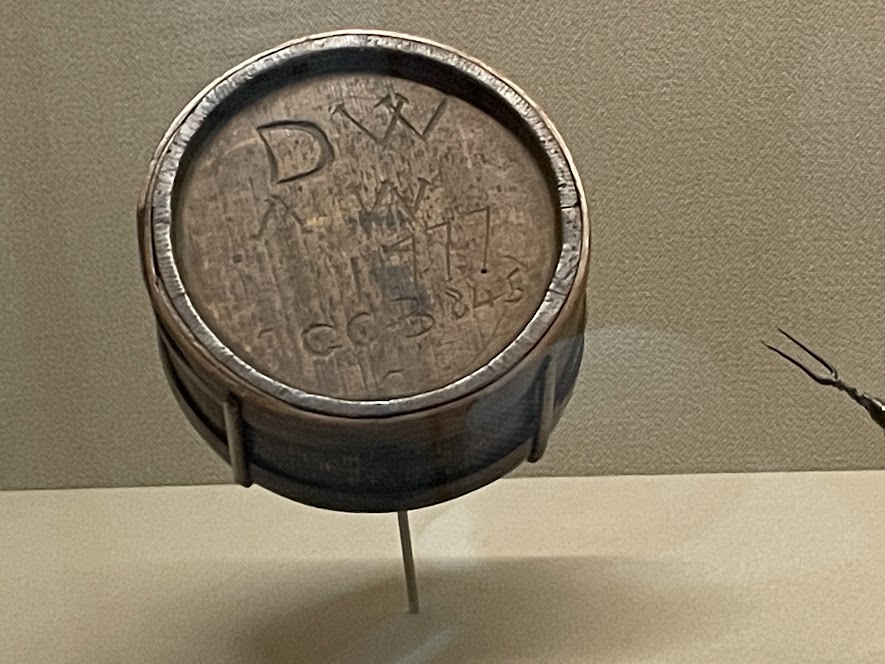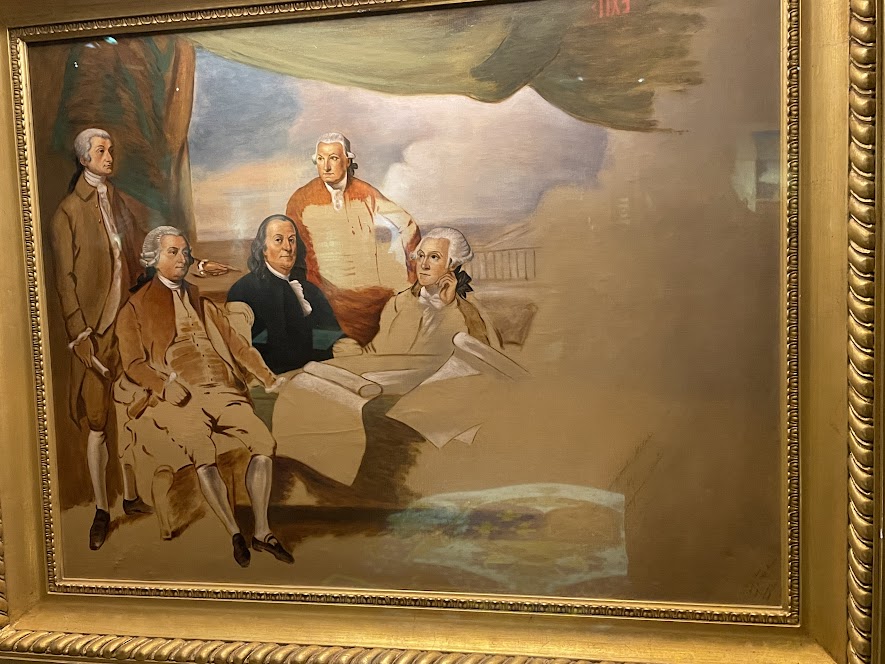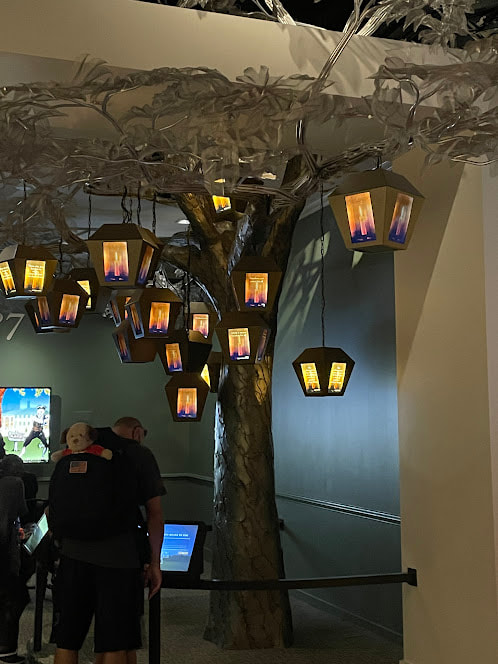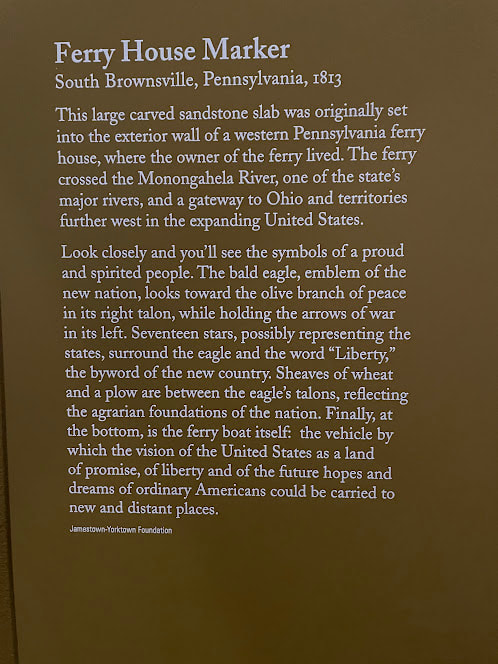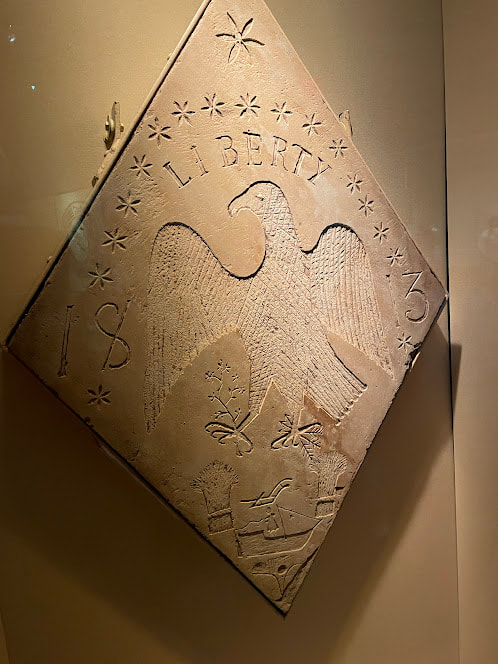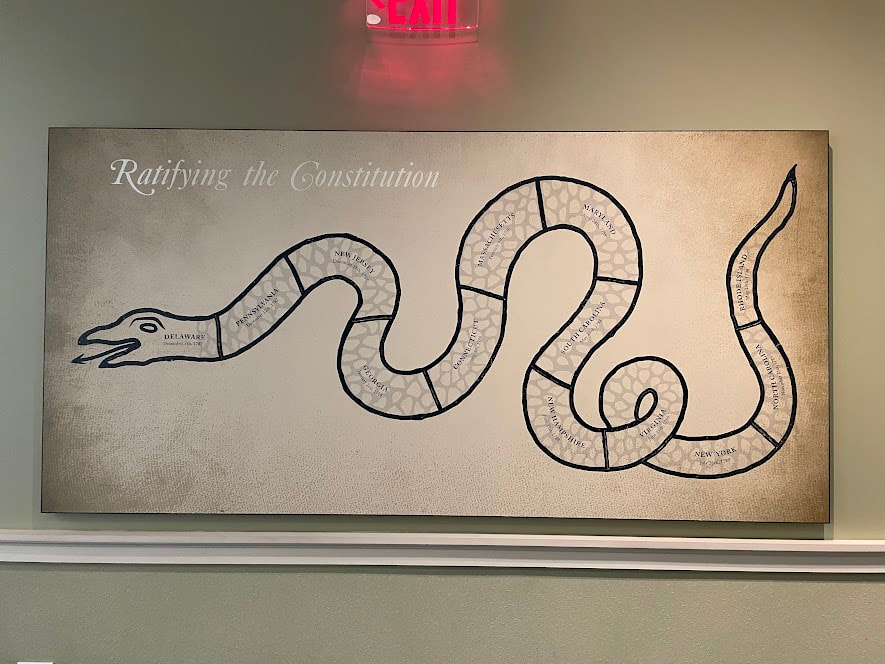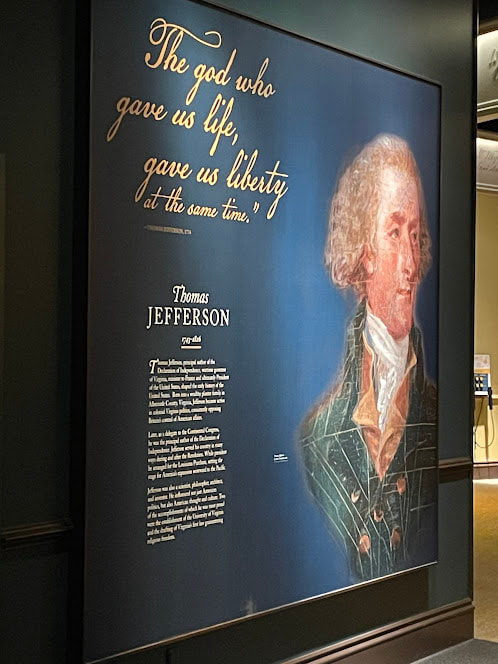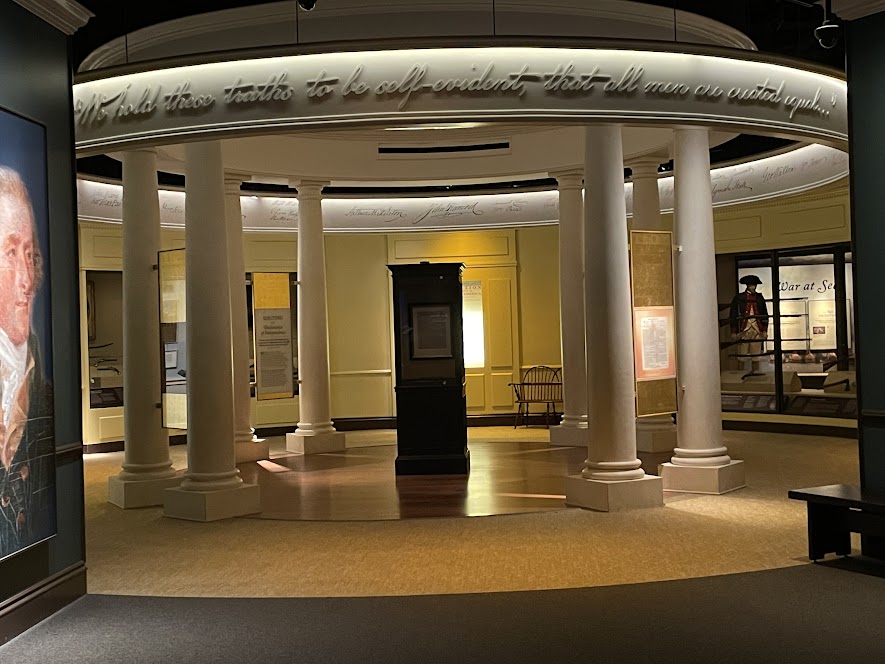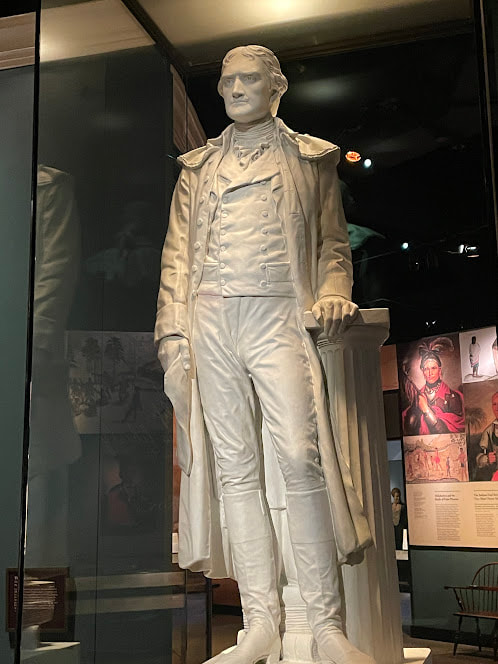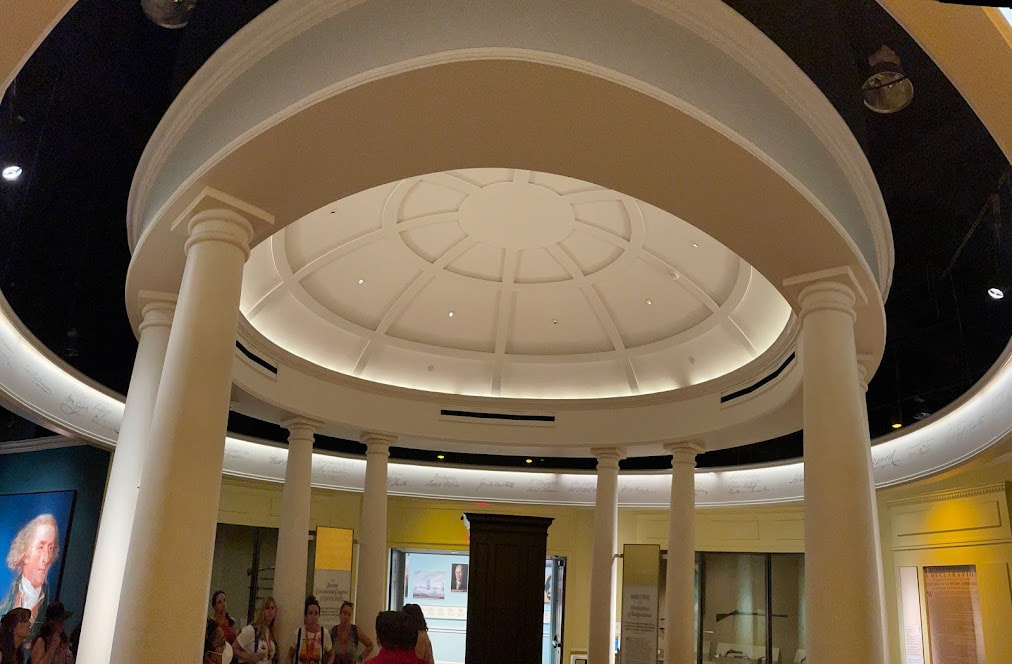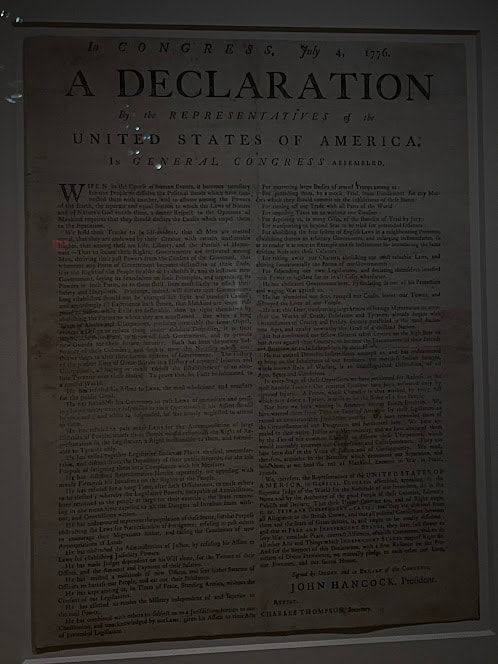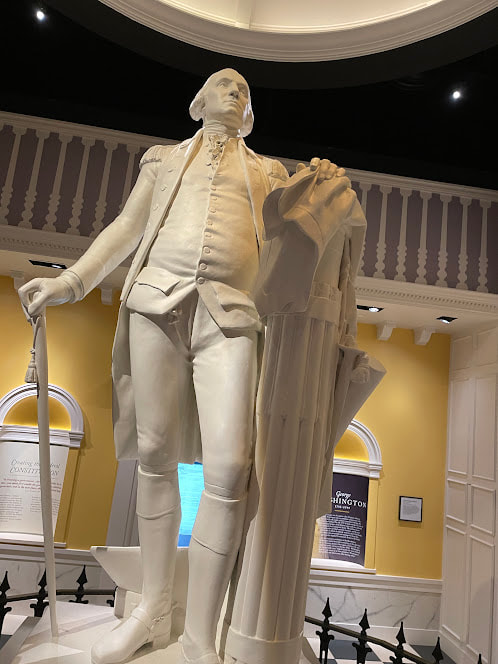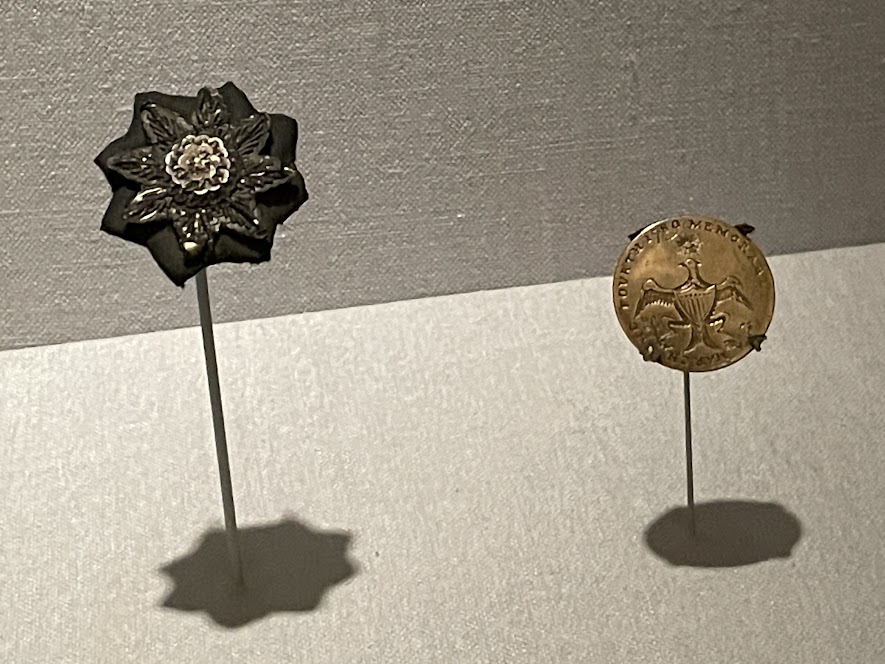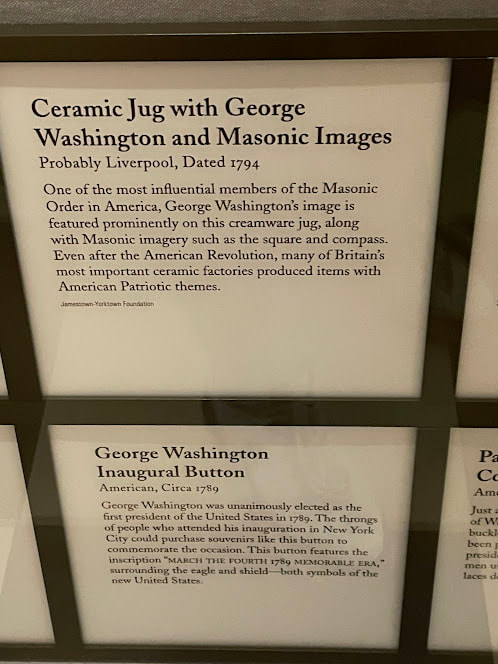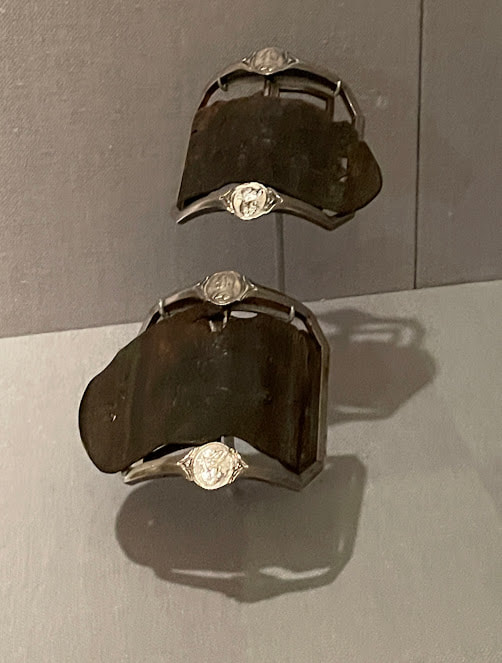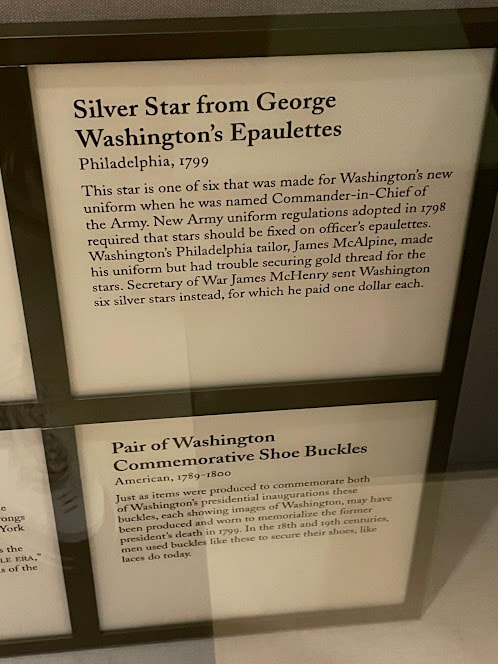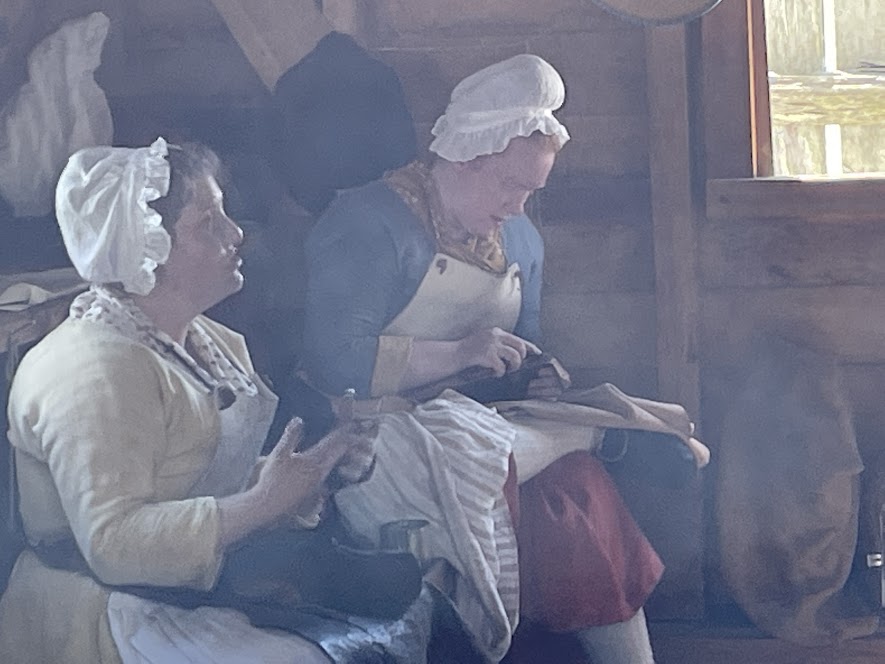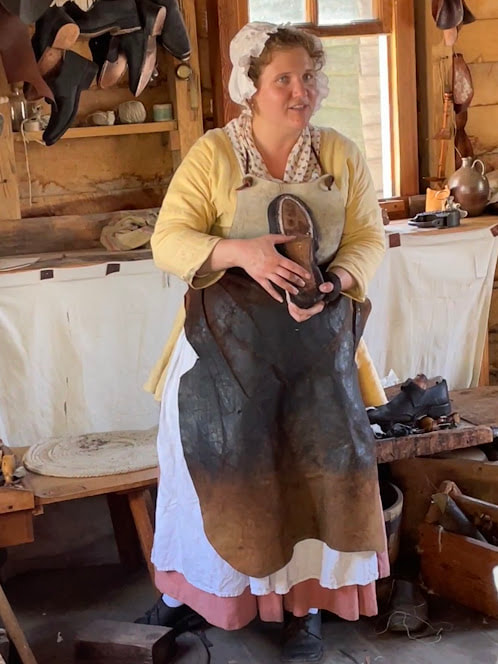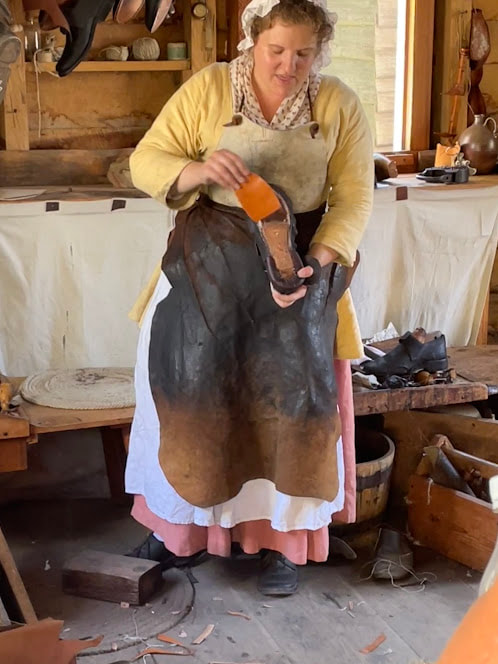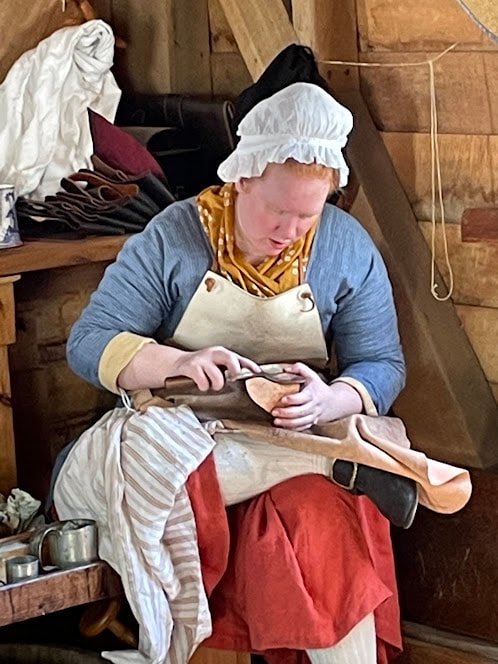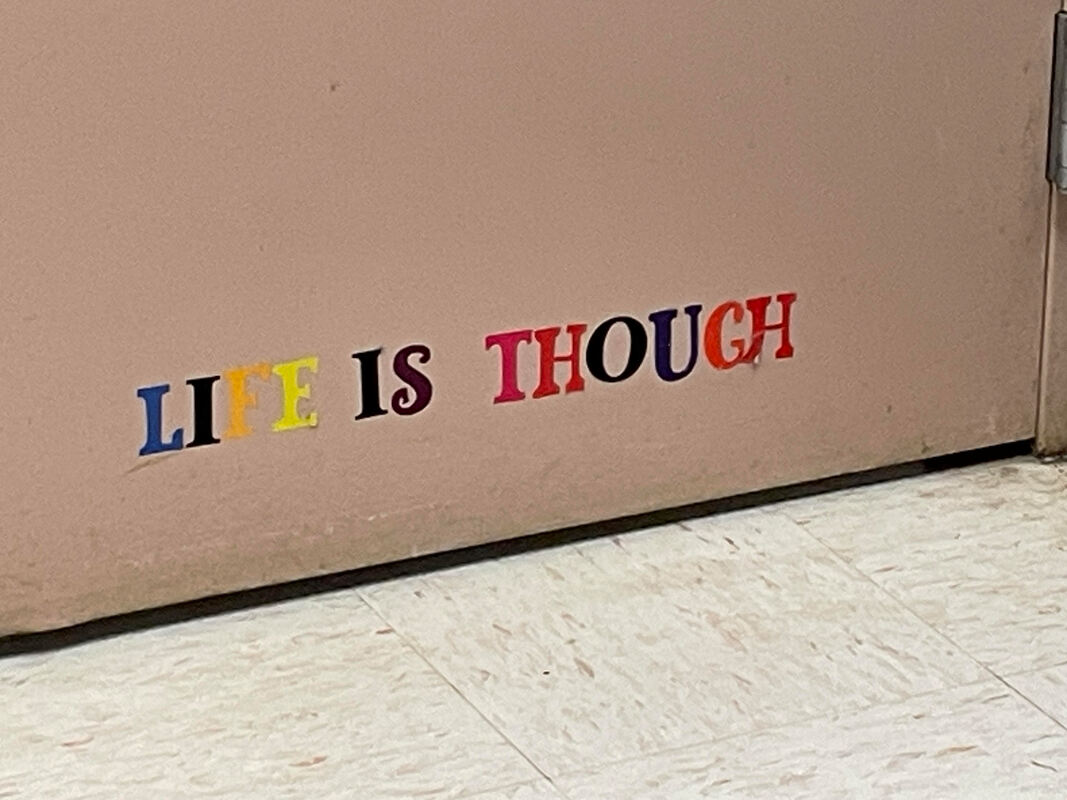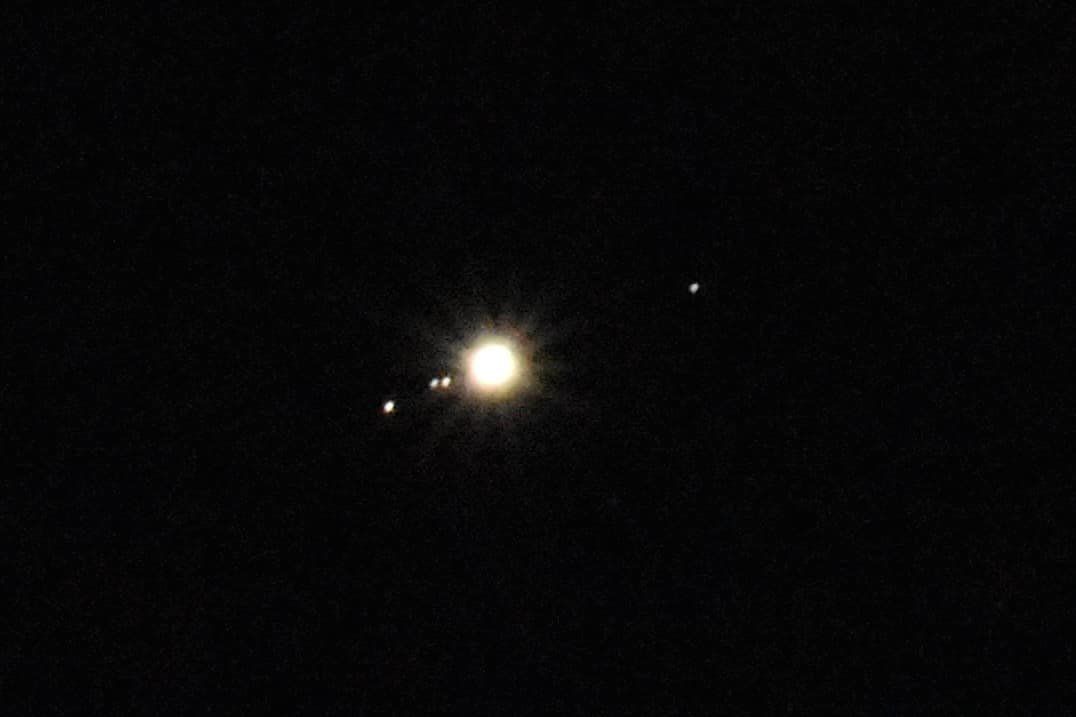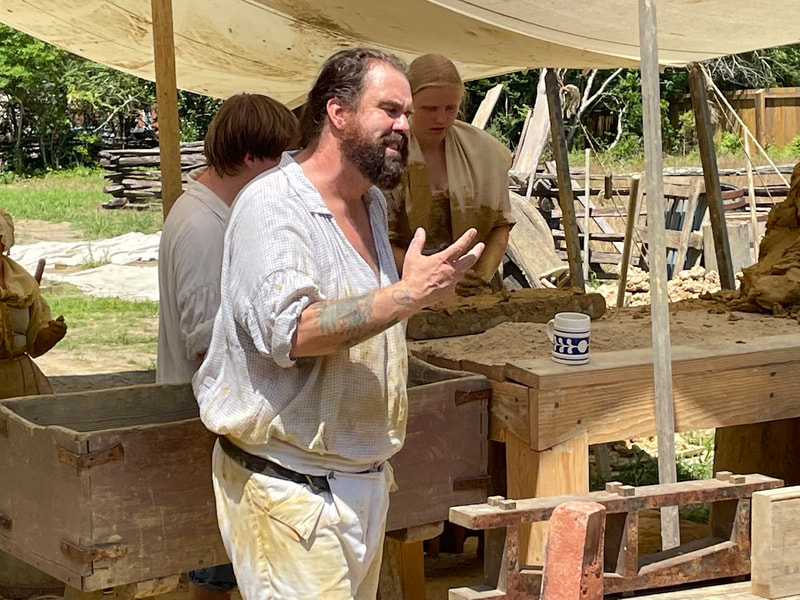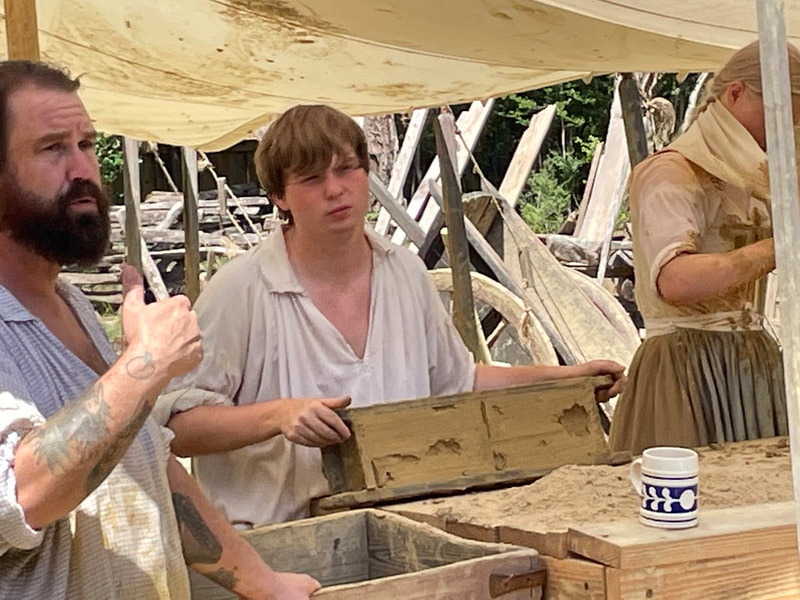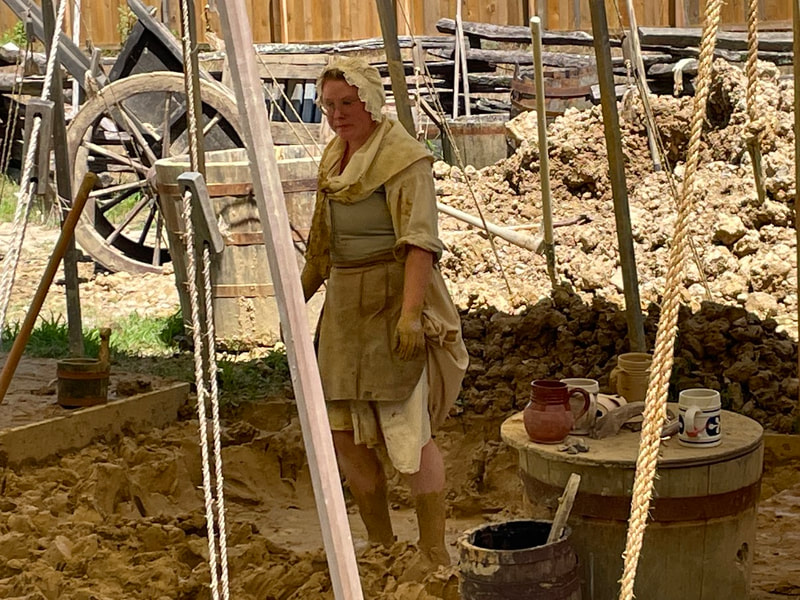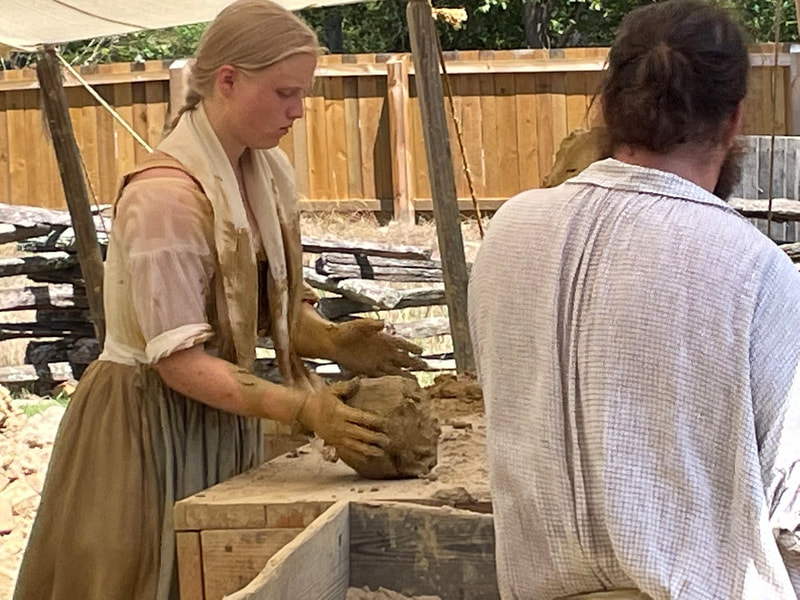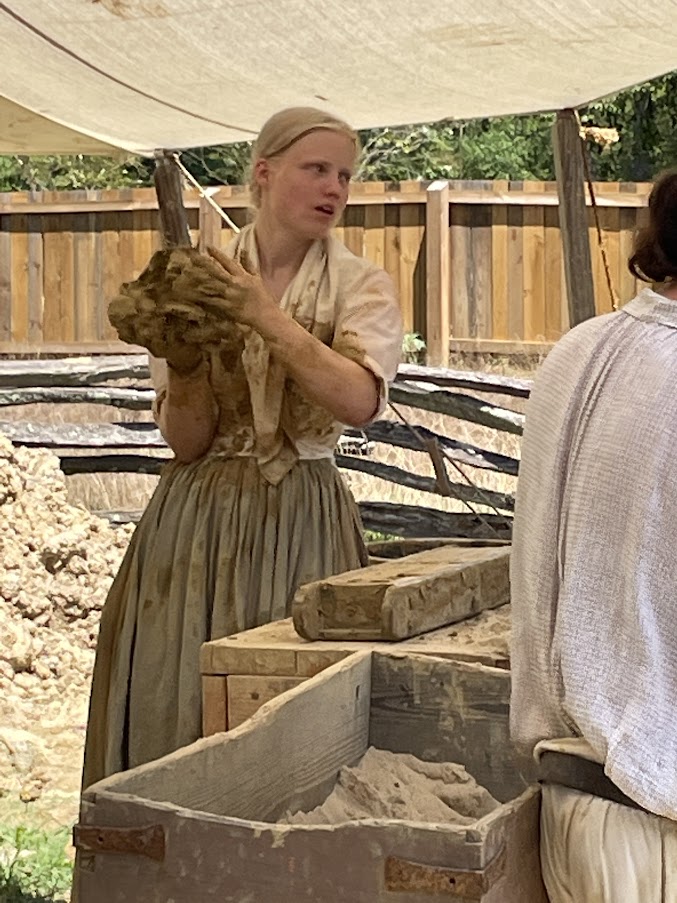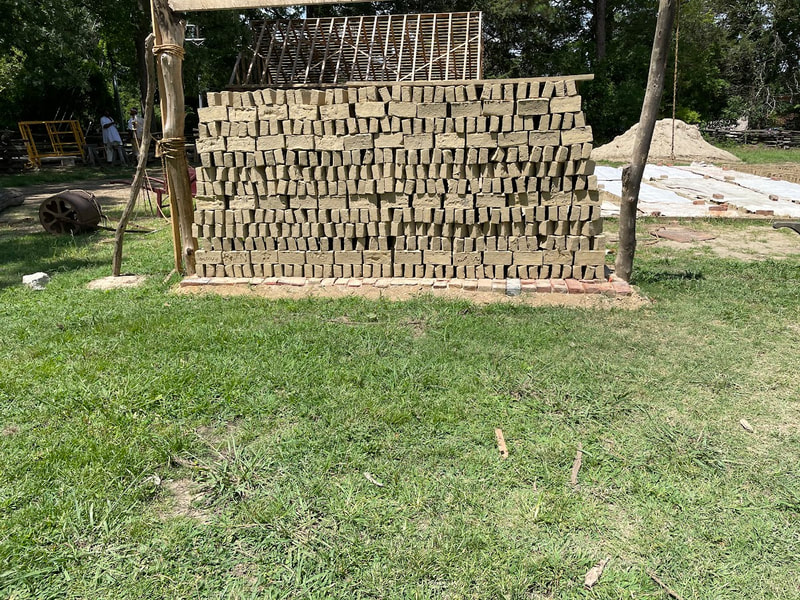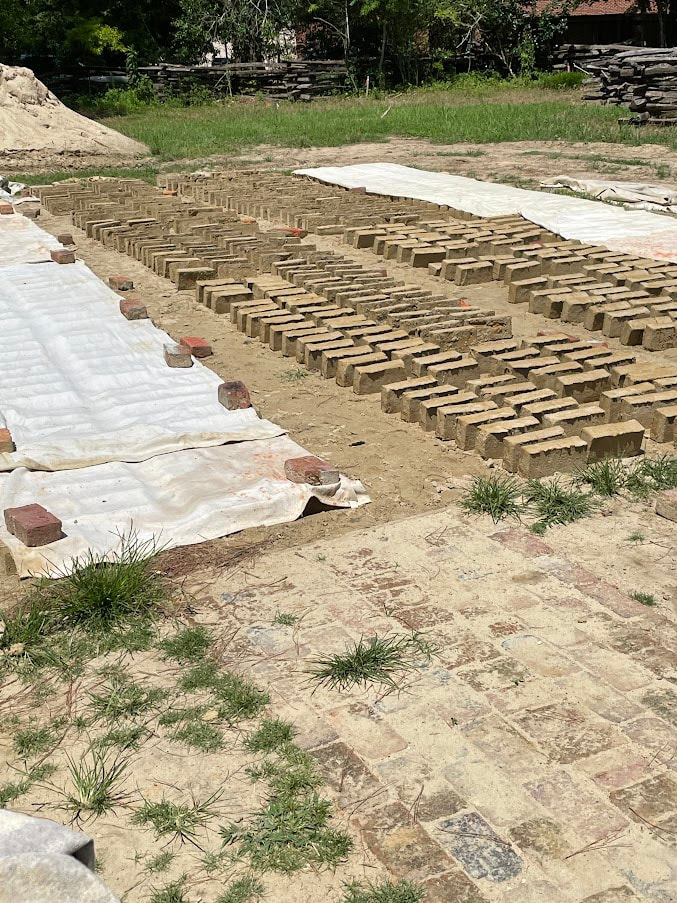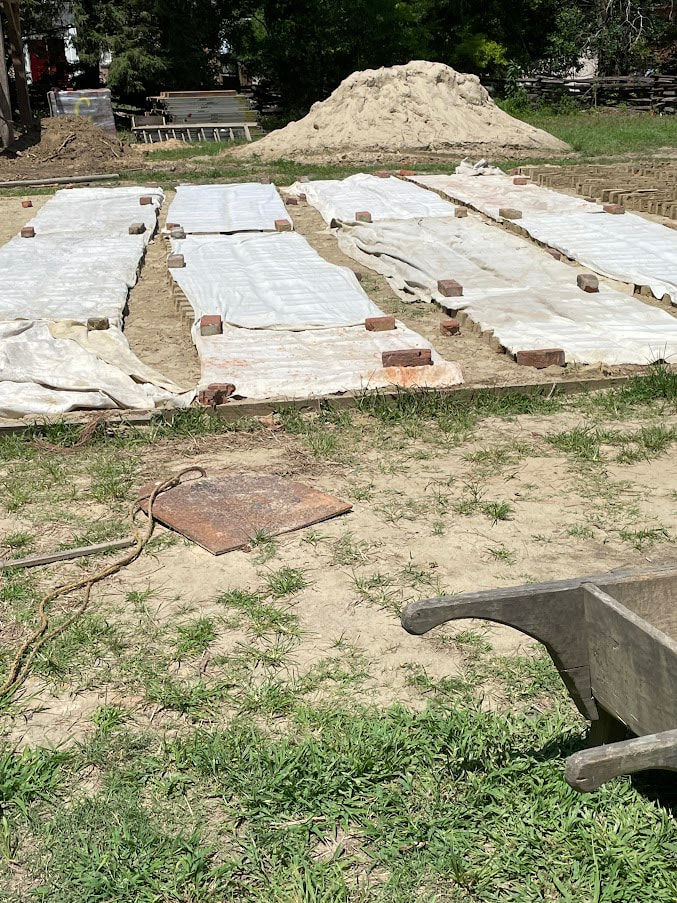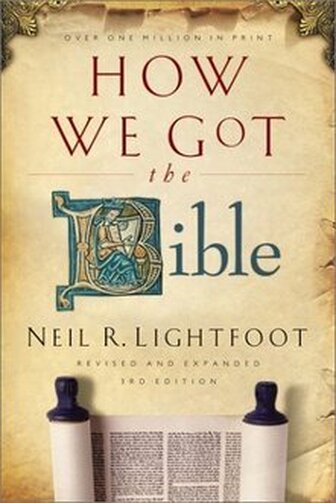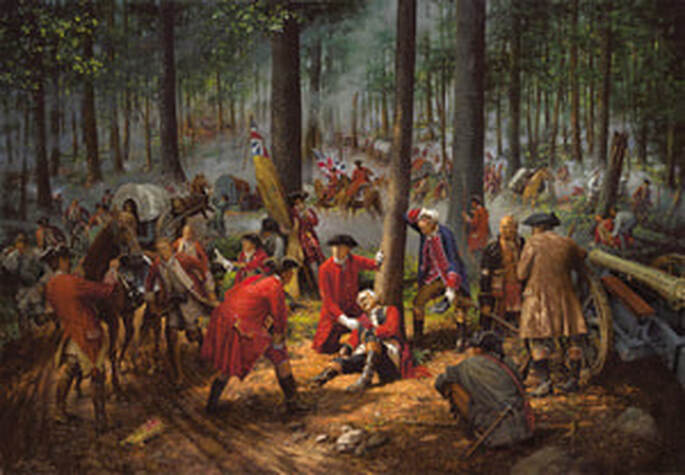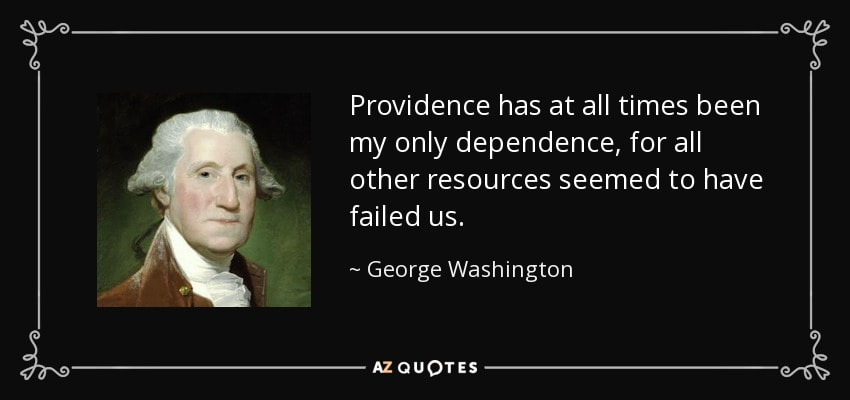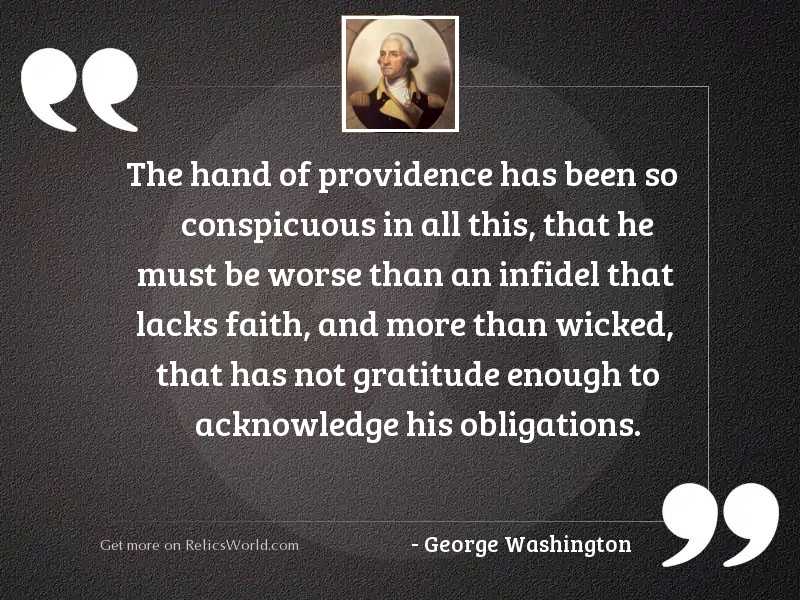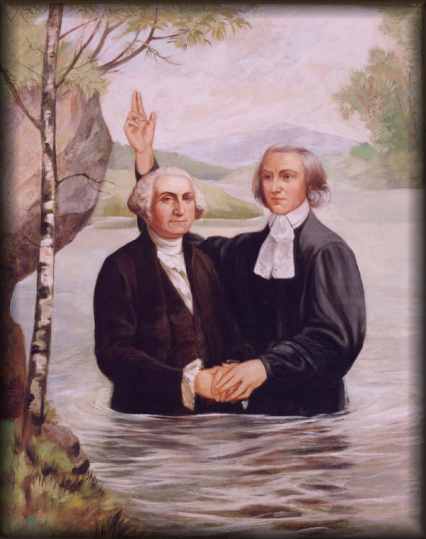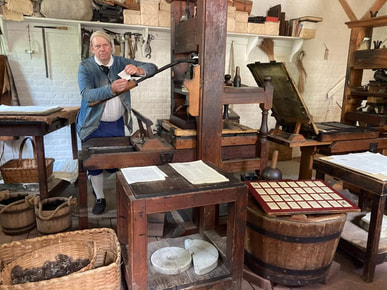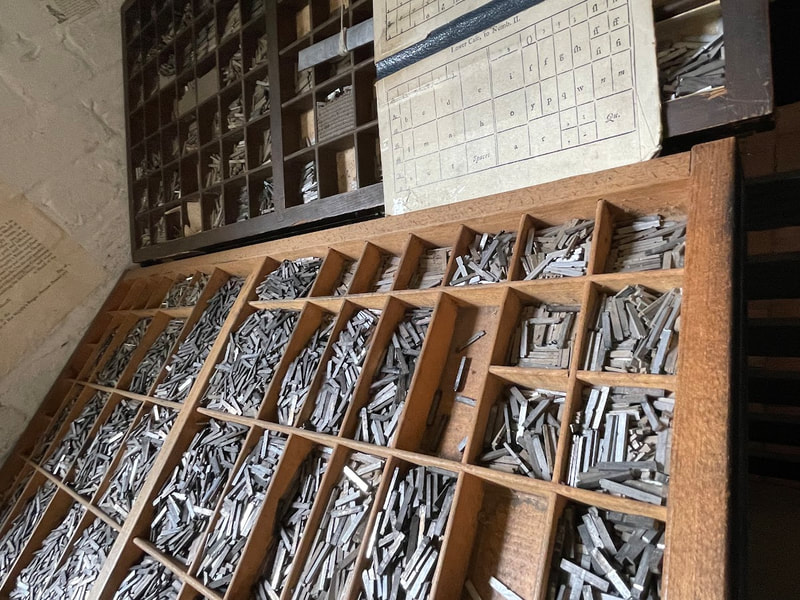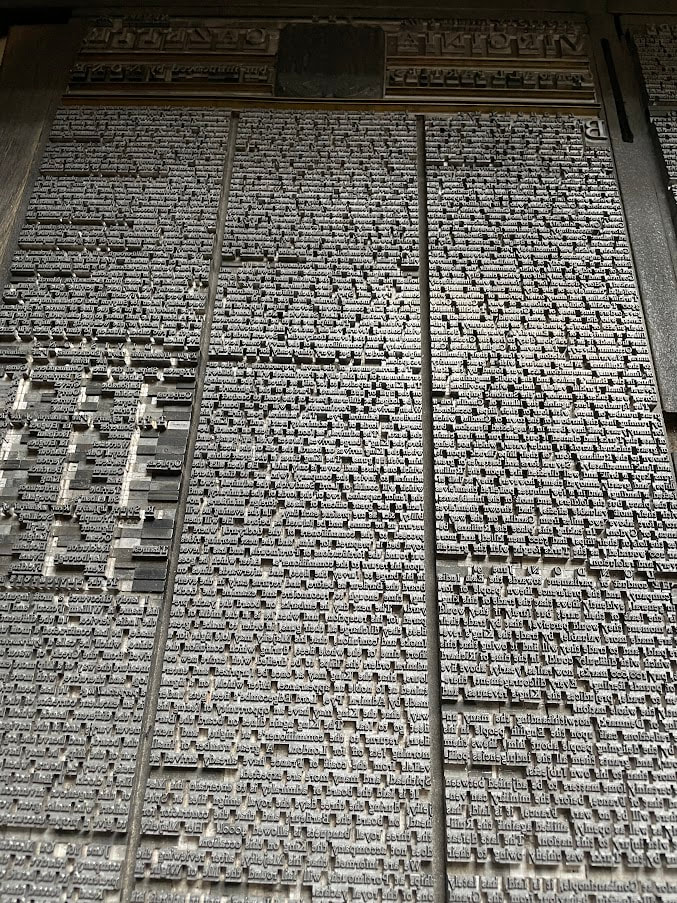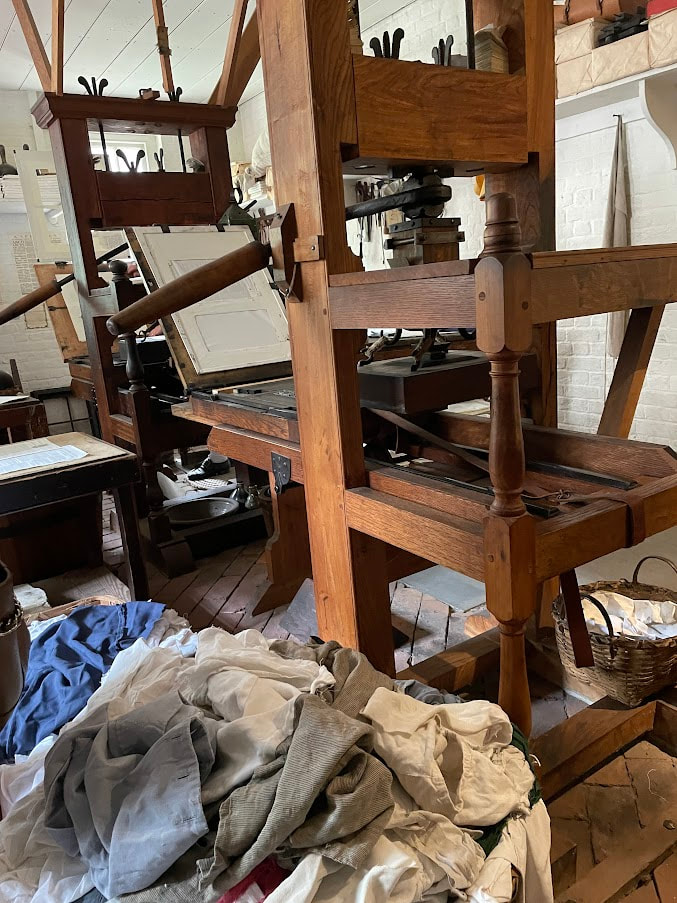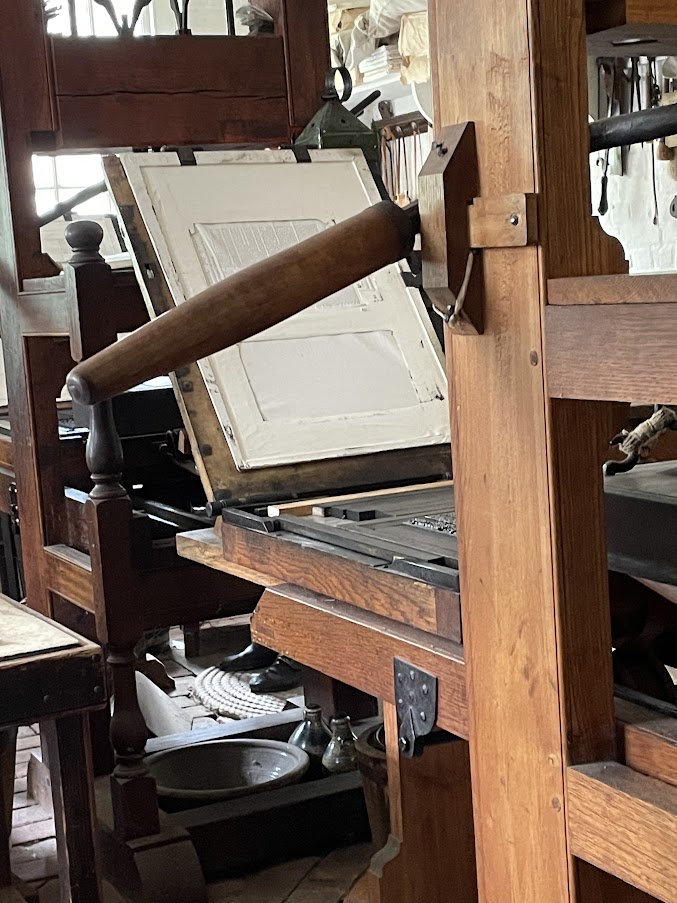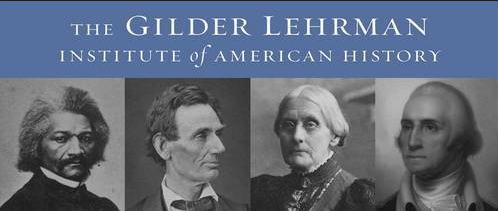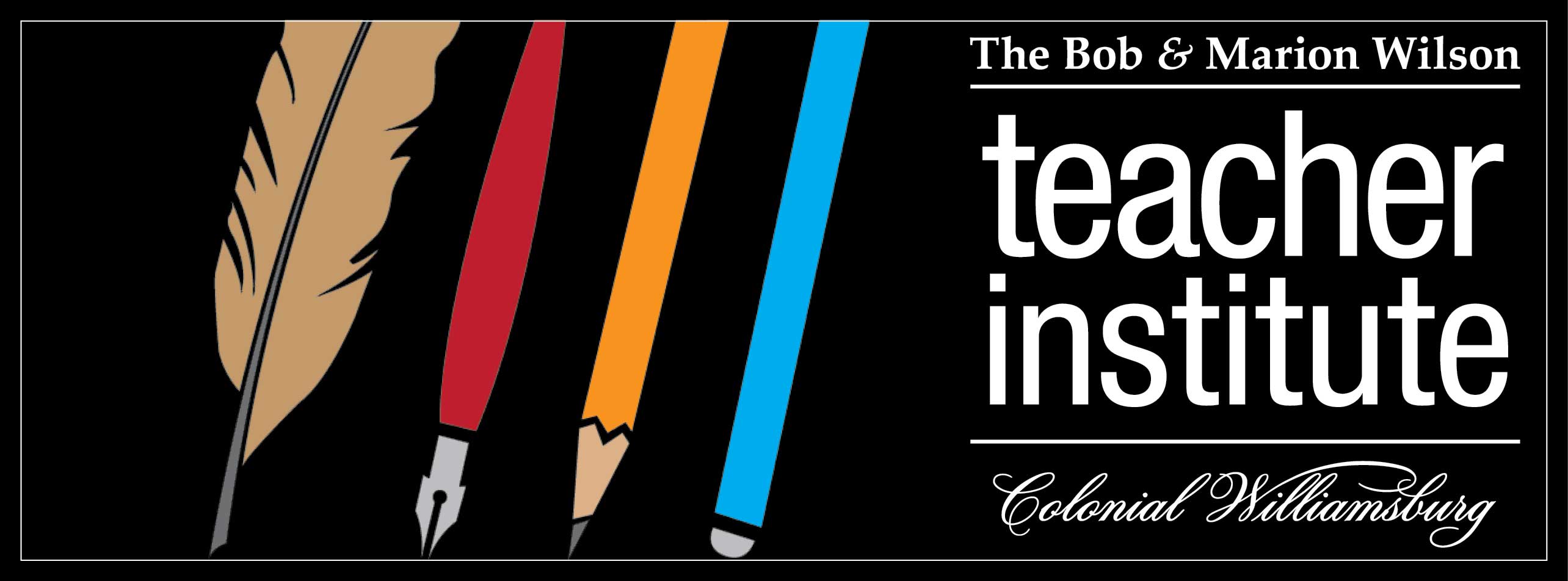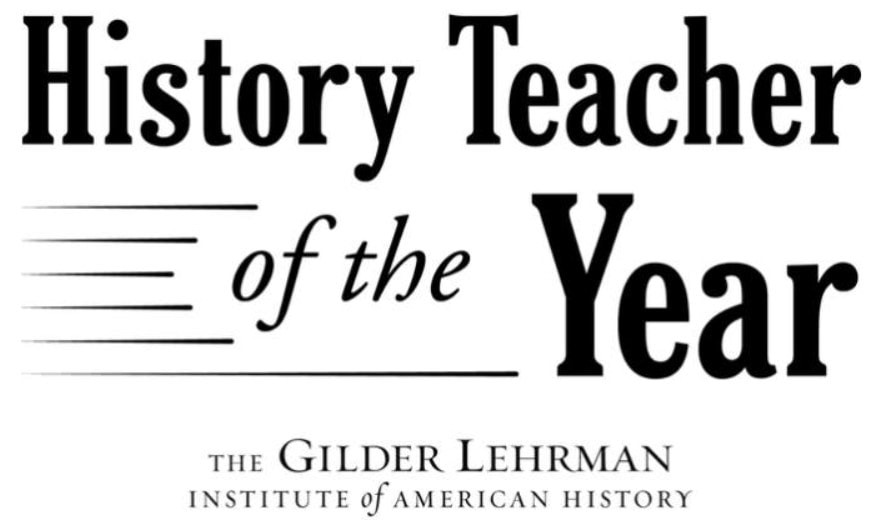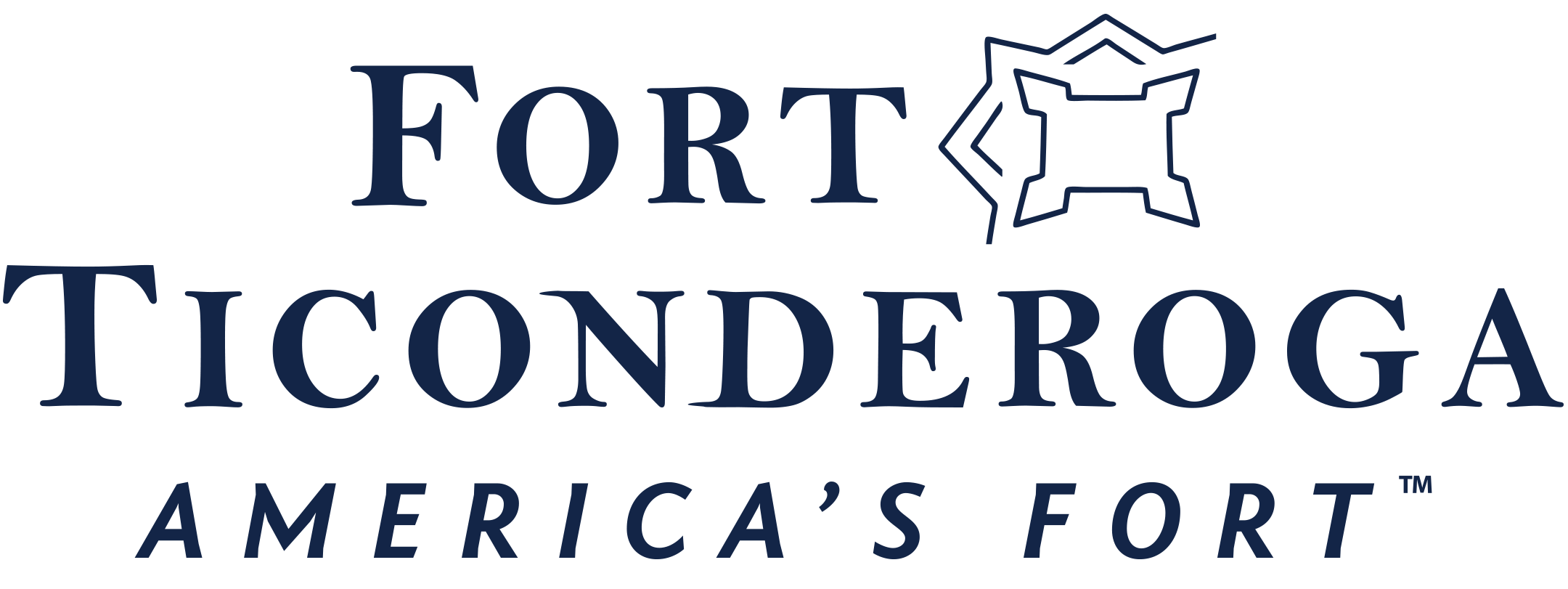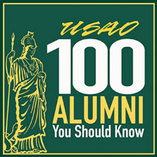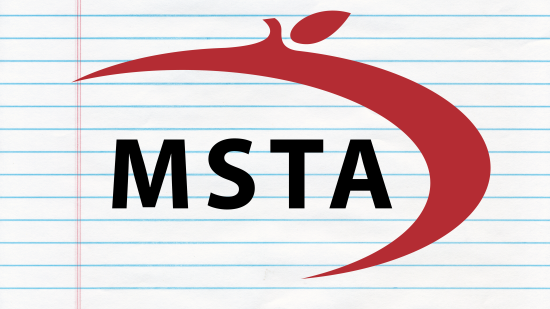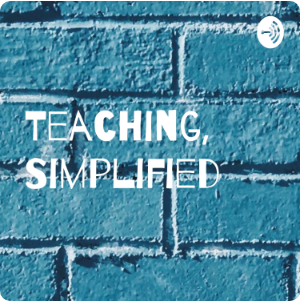| I wish my family could experience the things that I got to do at the Colonial Williamsburg Teacher Institute in July of this year. They cannot imagine the rich experiences of traveling to places you only dreamed about, read about, and watched limited videos of for years. The feeling that you are touching and experiencing history when you are on location is unlike anything that can be reproduced in a classroom. All can do is bring home souvenirs. It doesn't come close to the experience, but that's just how it goes. Kind donors actually provide the funds for teachers from across the country to travel to Virginia to have this opportunity, but they also provide a gift card to help with purchases while on the property. I got myself a t-shirt, as well as a couple for the kids. A cooling towel helped on the hottest day, and I had to get a hat for my daughter; she performs for the University of Oklahoma in the Pride marching band, so the hat, which says "Walk to the beat of your own drum" seemed to make sense. My son has a loose collection of keychains, so I picked up a heavy one that has the flags of the American Revolution on it. Both kids appreciate lapel pins from places we visit, so they received some of those, as well. At the time, I found a Patrick Henry coaster that says "Give me liberty or give me death," figuring I needed to remember my part in giving the famous figure's speech in the Capitol earlier in the week. I learned about the little doll man forming the letters of the alphabet from my roommate SAM, so I picked up a small one while I was at the Art Museums of Colonial Williamsburg. Finally, I picked up an actual clay pipe to remind me of the archaeological digs in Jamestowne and Williamsburg. Going to the American Revolution Museum, I found a wooden nickel to add to my own little collection, and another t-shirt, sporting my favorite line from the Patrick Henry speech: "If this be treason, make the most of it!" With all of this, the photos that I took and the memories of the people with whom I connected are the richest treasures I came home with. Of all the trips I have taken during my teaching career, several of the people I met at Colonial Williamsburg have truly become my history family. | |
|
Finally, I thank our hosts and our master teacher for the gifts of SWAG from earlier in the week, but also for the items below: a children's book about historic trades, a copy of Henry's speech (Did I mention that I gave a portion of the speech in the Capitol building?), a Teacher Institute lapel pin, and of course, the brick fragment uprooted from Martha Washington's first husband's property.
0 Comments
As I waited for my son to finish soccer practice with his team, the light was shining just right over this nearby field, and it hit me: too many people lament missing the sunrise, and too many are still waiting for the sunset, and they forget that there is beauty in the present. Our world has much to offer us. Celebrate life.
Here we were - in the real location where the world turned upside down. Washington stood out there and lit the first cannon. Lafayette and Hamilton took two significant redoubts. Cornwallis surrendered. On the day we arrived at that location, the weather that threatened to poop on our party finally arrived. The folks in charge have standing orders not to allow us outside when lightning is near, so we weren't allowed to get out of our bus. That explains the weak photos of the redoubt below. In my opinion, the storm was not anywhere close to severe, and lightning was not close enough to merit kidnapping us on the bus. There were even small children crawling around with great joy around the redoubt that we could only see through the bus windows, and even then not directly or in context.
The sound of the sprinkling rain added to the somber and the victory of this location. Besides the selfie of my own disappointment below, you'll see some shots of the Surrender Field. It's pretty easy to picture Washington and his army standing proudly in columns as the round-shouldered British soldiers march between them to pile up their arms. My short video may give you an idea for the feeling and the mood of being there on a rainy day. Our guide for this time had just recovered from COVID, so her breathing was still very labored.
There were a couple of really cool experiences at the Yorktown Battlefield National Park - moments when a history buff might feel a tingle.
There, outside the gift shop, is a cannon turned green from age. It looks like many others that could be displayed at museums across the region. But in its side is a significant dent inflicted by a Patriot or French cannon ball during the siege. General Lafayette's path, in a later tour of the new United States, crossed with this cannon, and he was able to identify it by its distinctive dent. Apparently, he became emotional at seeing his old foe again, and the memories of the battle were dredged up in a very significant way. Another national treasure, this is, still standing after all these years.
Some Questions:
Either Zechariah prayed for a baby years ago, or knowing that his wife is barren, he prayed for a baby recently, perhaps accompanied by incense on the alter. In both scenarios, this is a demonstration of tremendous faith. Either he has waited a long time for his persistent prayers, or he has continued to pray against the science of conceiving a child while his wife was younger. Now, an angel (a messenger from the Lord) stands before this priest, announcing that Zechariah's prayer has been heard. Most of us would be startled at the sight, as well. What form the angel takes is left to our imaginations, but many times in the Old Testament, we notice that angels look like men. It may not be the form that frightens Zechariah. It could be the recognition that this is someone not from earth, or it could be, simply, that the angel appears suddenly where no one was a second earlier. The angel identifies which prayer is being answered - the apparent prayer for a son - and informs or commands Zechariah that the boy's name will be John. The reader is left to wonder why there must be an assigned name: why aren't Zechariah and Elizabeth allowed to name him themselves? Regardless, this child flies in the face of mathematical probability, considering the couple's advanced years and Elizabeth's formerly-stated infertility, leaving us to notice that a superior God works outside of the boundaries of science and math.
One group may notice people pulling on ropes, imagining a large animal being controlled on the other end. Another group will see men shouting or directing action, commanding compliance. It may be conjectured that something dangerous is happening just outside of the frame, another group will say, noting the expressions and posture of the characters in the picture. Still another will notice a black man in the midst of the crowd. Some may notice women, others will see children, and still others will find a dog.
How about this for a strategy? It's one way to make a mark before ever giving new information about the situation being presented, and students will respond to it with exuberance and energy.
The outside portion of the American Revolution Museum in Yorktown, Virginia, is a living history area that is plumb full of things to see. An 18th Century military camp is the first thing that catches the eye. If one too quickly scans the area, one will discount is as "a bunch of tents". In fact there is much more to see, when one peels back the flaps to peer inside. Stocked with supplies and the accoutrements of the day, there is recreated history here, sans soldiers. If only we could hear the conversations and smell the campfires! We can imagine the activity surrounding General Washington's tent, reproduced here with furniture and trunks that must have been in the real thing. We imagine the excitement of decoding a masked message from a spy. We imagine the gruesome conditions that must have accompanied the surgeon's tools. We also see a local cabin, complete with representations of 18th Century lifestyle, including a spilling wheel, drying herbs, a cat appropriately named Rochambeau. We also notice the slave cabin and a barn that sports curing tobacco leaves overhead.
If we're not careful, we will see only the romanticized version of this place. We might fail to see the ugliness that comes along with it - enslavement, blood, and tears, as well as the sweat of anticipation as the soldiers blow through this location on their ways to the British fort and redoubts, nearby, in hopes of turning the world upside down in a decisive battle with British forces that will decide the future fate of the Revolution.
I was here to see and do things that I could not see and do at home in Missouri. I could read a book or study countless on the subject of the Revolutionary era from home. While at Yorktown, I wanted to see real artifacts and stand in the footprints of the soldiers who fought. I was interested in the statue of Patrick Henry (above), which with the assistance of the right imagination appears to be changing a lightbulb. I was interested in the nearly-life-sized portrait of King George, with a period-adorned interpreter to inform me about it. I wanted to see the portraits of Phillis Wheatley and Ayuba Suleiman Diallo.
In a while, the tour was over, and there was little bit of time to explore the museum, as well as the outside displays (Come back tomorrow for pictures.) and shopping in the excellence gift store, so most of us fast-walked through as much as we could. One area focused on Thomas Jefferson, this being one more brush with the Declaration-writer and third president that I've had short of visiting his house at nearby Monticello. Here is a broadside copy of the Declaration of Independence said to be older than the one on display in the District of Columbia. Of course, I had to pause and speak with George for a little while. The General and I have become quite close since he invited me to his Mount Vernon mansion a few years ago, and it has truly been too long since we conversed. I appreciated this visit, where he shoed me his inaugural button, his silver star, and the epaulettes that previously adorned his shoulders. There was, of course, much more to see, and I could have used another three hours to appreciate it fully. Still, there were things to see and do outside at the museum, and knowing that this was Yorktown and what occurred here two and half centuries ago dictated that I needed to walk on the soil where it happened. There would have been soldiers and encampments all over this place, perhaps entrenchments, as well as dead British and American fighters lying on this land. I had to get outside before the bus took off...and I shall take you there with me, right here, tomorrow. Want to know more about the Colonial Williamsburg Teachers Institute? There's a page for that!
 Time is a versatile thing. Just think about it: time flies; time marches on; time heals all wounds; time runs out; and time will tell. We waste time; we spend time; we mark time; we kill time; and sometimes we do time. Time passes us by; time is on our side; and we can’t save time in a bottle. Too often we’re waiting for a free moment; someday, we’ll get around to it; we put off until tomorrow what could be done today. One of these days is an important phrase in our vocabulary. In fact, many of us would wait until tomorrow to start procrastinating if we could! One Spanish proverb reminds us, Manana is often the busiest day of the week. And in this area, we may find some words of wisdom from, of all people, Joan Baez, who said, You don’t get to choose how you’re going to die. Or when. You can only decide how you’re going to live. Now. I doubt Ms. Baez had eternal salvation in mind when she made that statement, but when it comes to deciding how you’re going to live eternally, now is certainly the time for making some important choices. In the 25th chapter of Matthew, Jesus speaks to us on the topic of punctuality. In the parable given, Christ warns of being tardy. Let’s read verses 1-12 of Matthew 25: Then the kingdom of Heaven will be comparable to ten virgins, who took their lamps, and went out to meet the bridegroom. And five of them were foolish, and five were prudent. For when the foolish took their lamps, they took no oil with them, but the prudent took oil in flasks along with their lamps. Now while the bridegroom was delaying, they all got drowsy and began to sleep. But at midnight there was a shout, “Behold the bridegroom! Come out to meet him.” Then all those virgins rose, and trimmed their lamps. And the foolish said to the prudent, “Give us some of your oil, for our lamps are going out.” But the prudent answered, saying, “No, there will not be enough for us and you too; go instead to the dealers and buy some for yourselves.” And while they were going away to make the purchase, the bridegroom came, and those who were ready went in with him to the wedding feast; and the door was shut. And later the other virgins also came, saying, “Lord, lord, open up for us.” But he answered and said, “Truly I say to you, I do not know you.” Look at what Jesus has to say in verse 13: Be on the alert then, for you do not know the day nor the hour. While punctuality may seem to be a minor part of the education of our youth, it sure seems to be important to our Savior. Our time should obviously be spent in preparation for the day of judgment. David B. Norris made the statement, How you spend your time is more important than how you spend your money. Money mistakes can be corrected, but time is gone forever. There is a warning here for anyone who has not obeyed the gospel. It is a warning that you may not have another opportunity to do so. In chapter 24, Christ makes this all too clear. In verse 36, He makes the claim, Of that day and hour no one knows, not even the angels of heaven, nor the Son, but the Father alone. This is a strong statement and should be more than enough to convince us of the importance of making preparations now. This should be more than enough to convince us to obey the gospel tonight. And this should be more than enough to convince us to stay ready for the coming of the Son of Man. There are some tailors on-site at Colonial Williamsburg, and visitors can even pick up some replica pieces to wear for themselves (for a price). Don't call them costumes, though: they take that implication quite personally. And these aren't characters: they are interpreters.
One important trade that lends itself to both clothing and necessary survival gear is that of shoemaker. The trade-interpreters in this building are happy to answer questions about their handmade products. At 9:51, on the evening of Monday, September 26, I aimed my iPhone into the night sky and snapped a photo of the fifth planet in our solar system. This gas giant hovered in just the right spot, through a hole in the tree canopy of the forest in which I live. Just to the left of our roof line, was our largest planet, Jupiter. I was pleased with the colors that came out when I enlarged the image (below left). On the right is a photo from a friend with a more powerful camera. She was able to capture the grand planet along with 4 of its 80 moons.
The following is a lesson in a historical and faithful study beginning at 7:00 pm on Wednesdays. at the church of Christ in Carthage, Missouri, south of the Ford dealership PLEASE JOIN US! The Bible Self-Identifies
God's Communication Has ChangedIn the first days, God spoke directly to people. Some examples:
Today, God speaks to us through His inspired Word. Chapter 18 of our How We Got the Bible offers the following passages for our consideration:
What is Inspiration? When we use the word inspiration, two definitions come to mind. One is a common use for the word - that we are encouraged or motivated by something. It brings with it a meaning of pushing one's self forward because of something that has been said or done. The other definition may be similar, but is one of different origin. When we claim that the Bible is inspired, it is important for us to understand that the source of the inspiration is the very Spirit of God. That Spirit, according to claims made in the Bible itself, inspired - gave particular knowledge and encouragement to approximately 40 men to record words directly "dictated" by the God's intentions. Communication Technology Changes Does God Communicate with Us Outside of the Bible?
Much of the archaeological evidence has been revealed in the past 50 years. Is it a coincidence that the tablets, cylinders, stelae, steps, engravings, relief carvings, and murals were done on materials that would withstand the passing of time AND that modern technology is just recently bringing these items into the light and confirming that they are authentic? Might the dual timing a part of the Providence of God at a time when people are more skeptical of faith and in need of more physical evidence? George Washington and Providence
It is interesting to note that John Gano was a Baptist minister. His son, also named John, became a preacher in the early days of the Restoration Movement, and his son, R. M. Gano, became a highly successful and popular preacher. He was an early leader in the church in Dallas and is said to have baptized thousands of converts in his long ministry. The Big Questions Our focus for this study hinges on answering these two big questions. The goal is to get closer to the answers each week in our class. How did we we get the Bible? Is the Bible accurate and dependable? Application Question How important is it? Is it important to you that the Bible comes from reliable sources, or is it just a collection of wise sayings and advice for living? Many atheists agree that there is wisdom in the teachings of Jesus Christ, but they do not believe that Jesus is a Messiah, that He performed miracles, that He walked out of His own grave, or that He prepares a place where His faithful disciples will be rewarded for eternity. So how important is it to you that the Bible can be proven true? Do you believe there is irrefutable evidence to its validity? Is proof something that strengthens your personal faith in the existence of God? Should faith alone be enough to drive you to drive you to your knees? Is "blind" faith a stronger kind of faith? If so, then why did God provide so much evidence? Go forward with us - or in this case, back to the beginning - as we continue our study next time.
Being an old "newspaper man" myself, I suppose there is always going to be some ink in my blood. Forty years ago, I published my own crude, weekly newspaper, the Tuttlite. This paper served the citizens of my then-hometown of Tuttle, Oklahoma. I remember breaking the news and scooping the more-established publication in town, and according to the competing editor, had I continued to publish, he would have gone out of business in the town. He later hired me to do freelance work for his paper, but that never worked out for me.
|
AnthemThe Hoggatteer Revolution
is an extensive, award-winning, inimitable, digital platform for Encouraging and Developing the Arts, Sciences, and honest Christianity in the beautiful, friendly LAND OF THE FREE AND THE HOME OF THE BRAVE This site is described as
"a fantastic site... chockablock full of interesting ideas, hilarious anecdotes, and useful resources." 
...to like, bookmark, pin,
tweet, and share about the site... and check in regularly for new material, posted often before DAWN'S EARLY LIGHT! History in ResidenceElementary Schools: Bring Mr. Hoggatt into your classroom for a week of engaging and rigorous history programming with your students. LEARN MORE BUILDING BETTER
|
